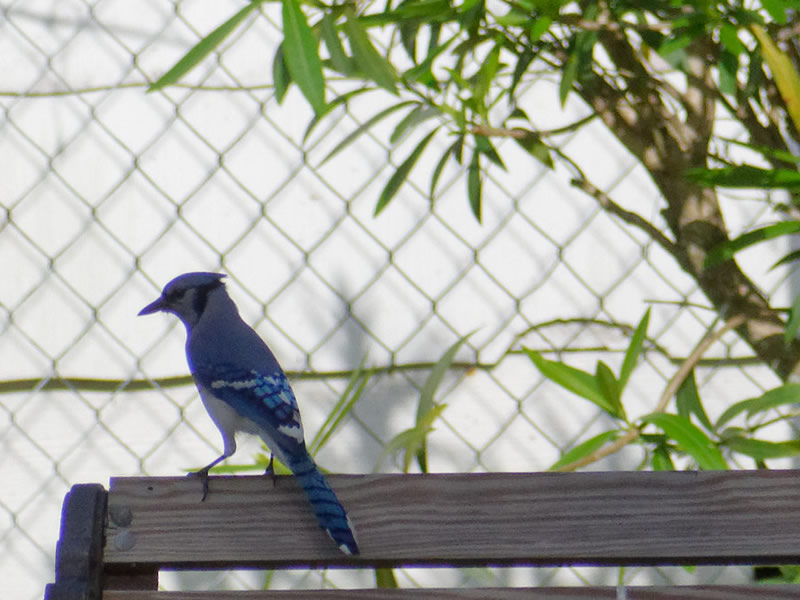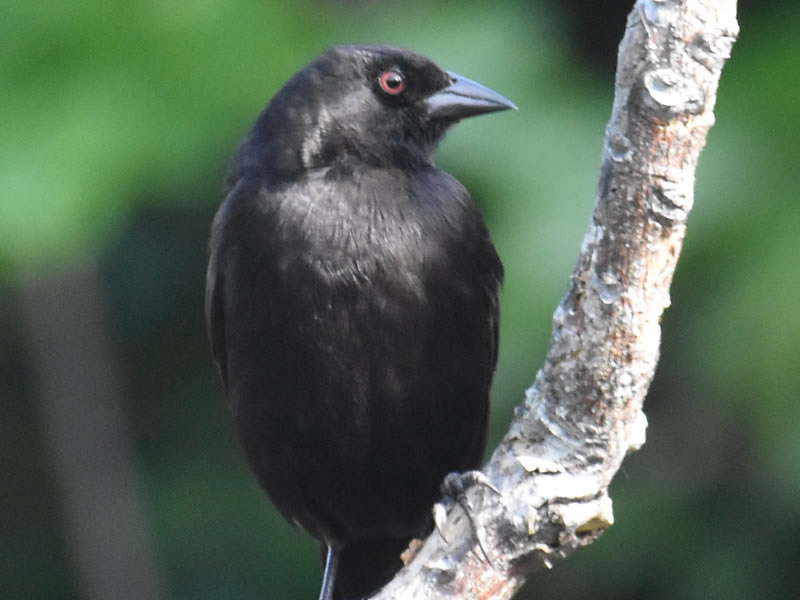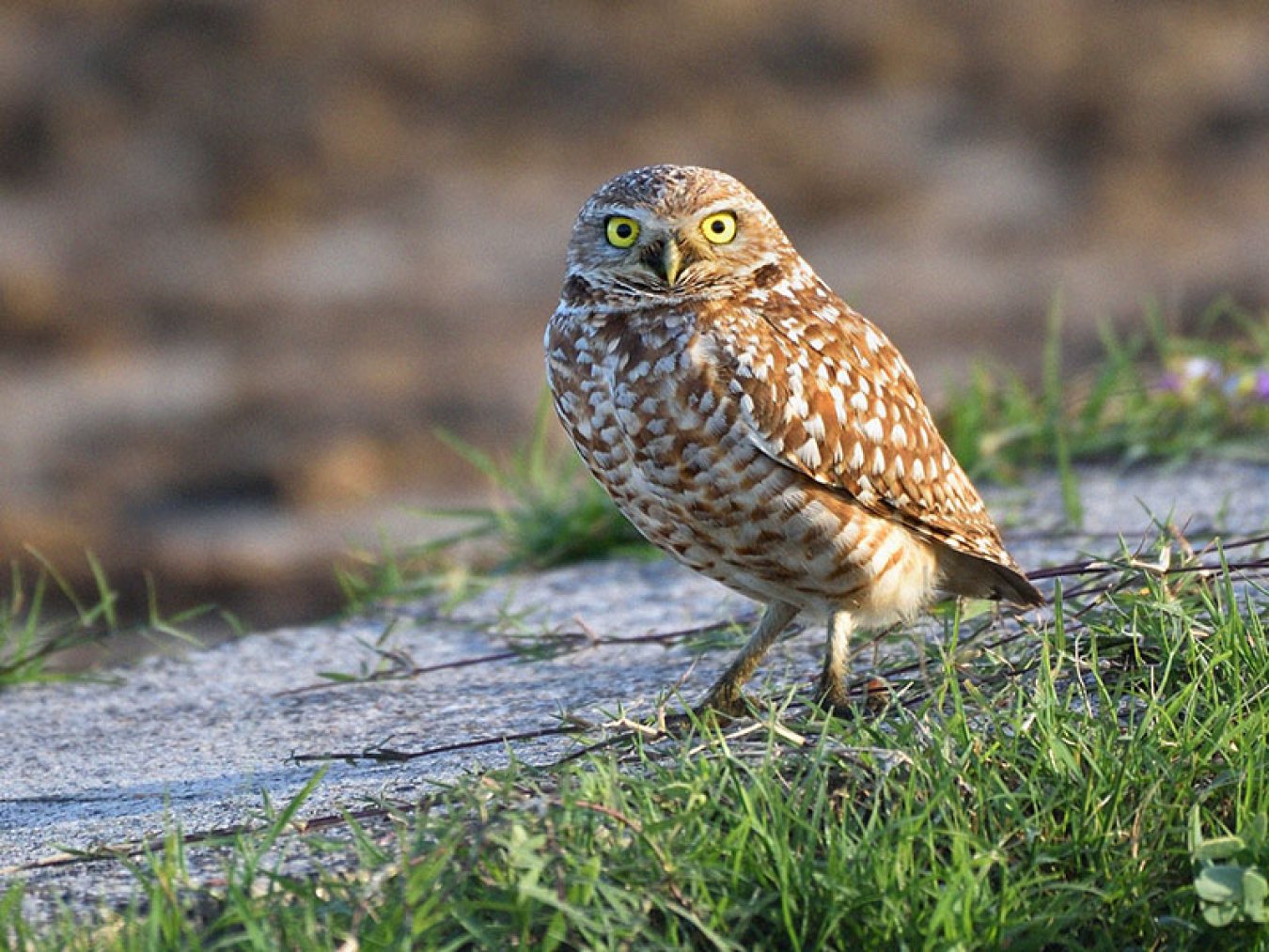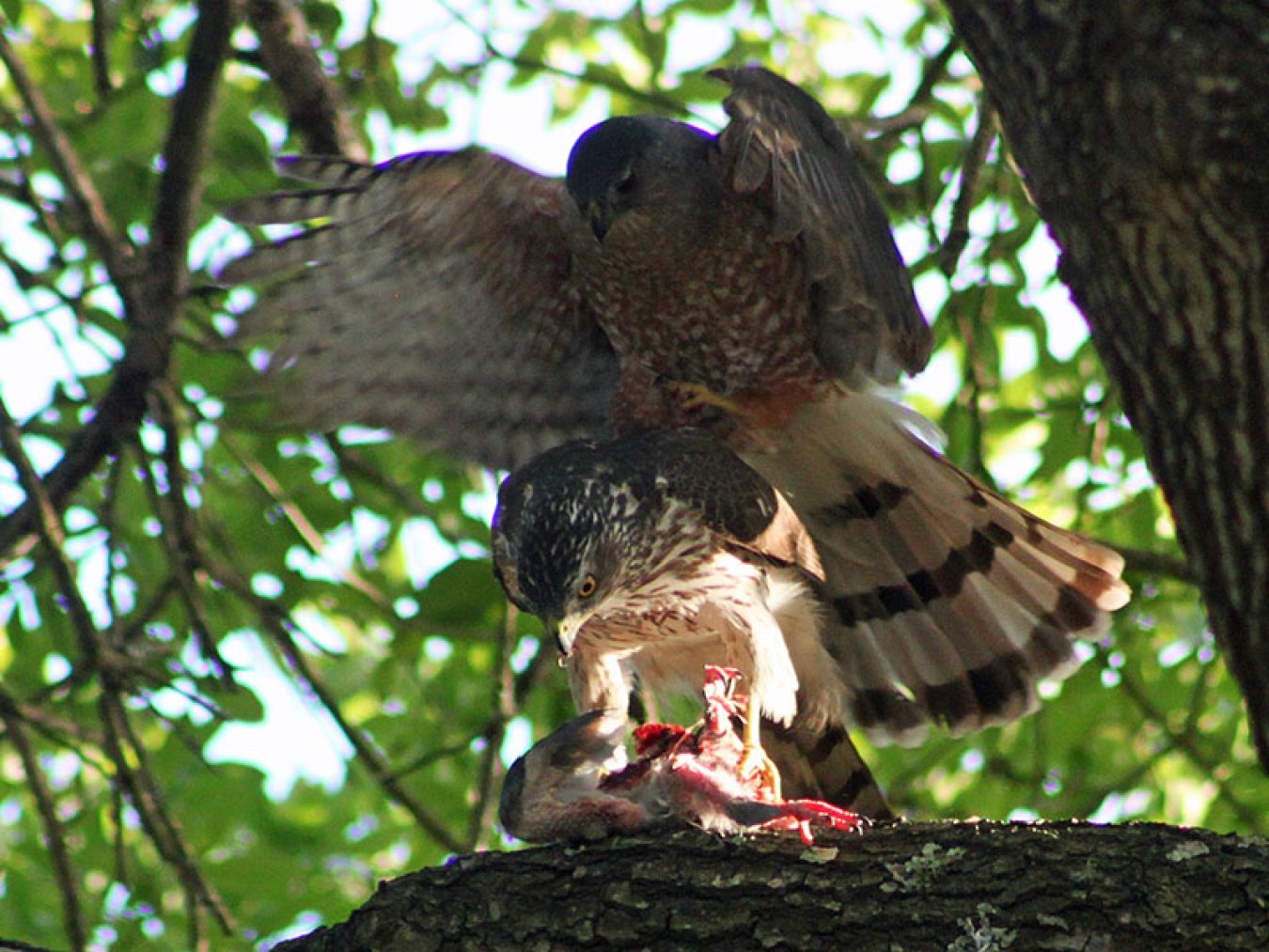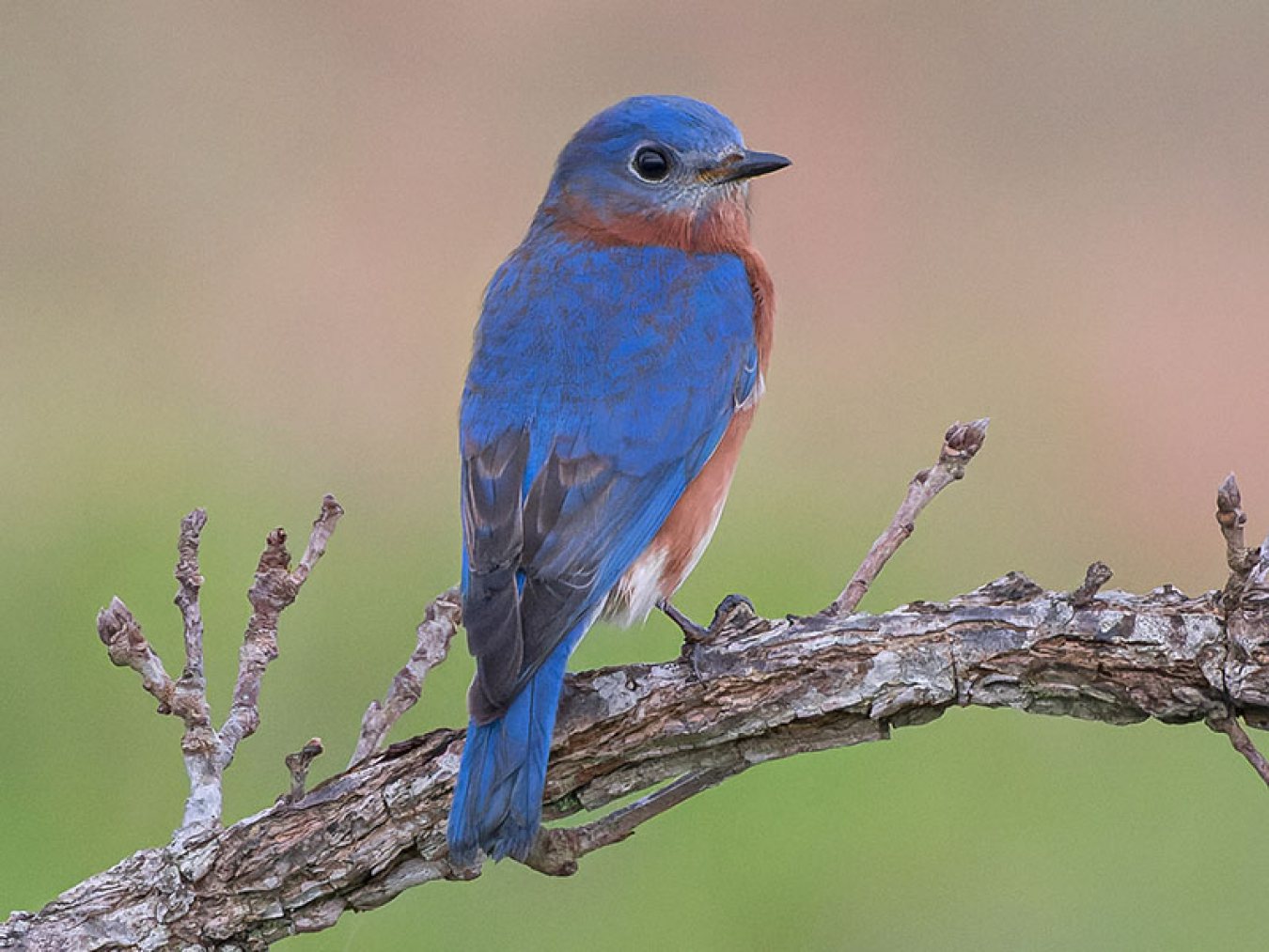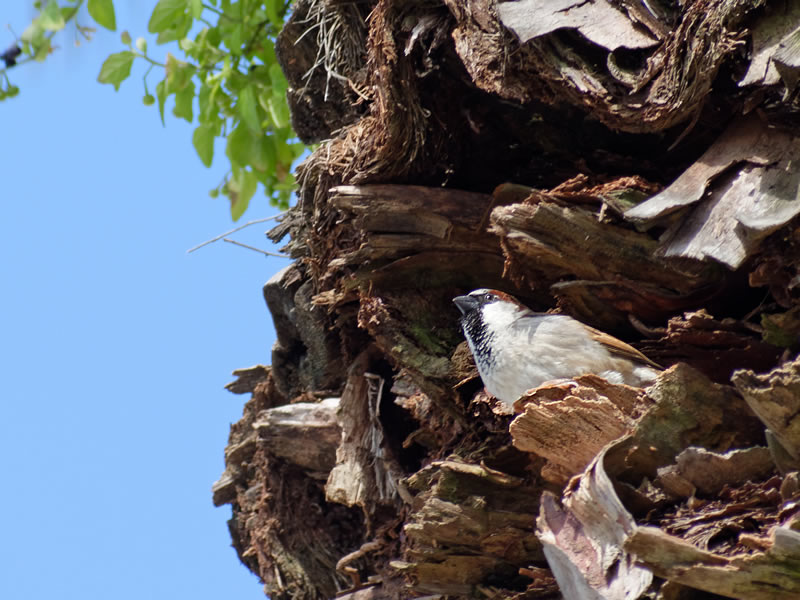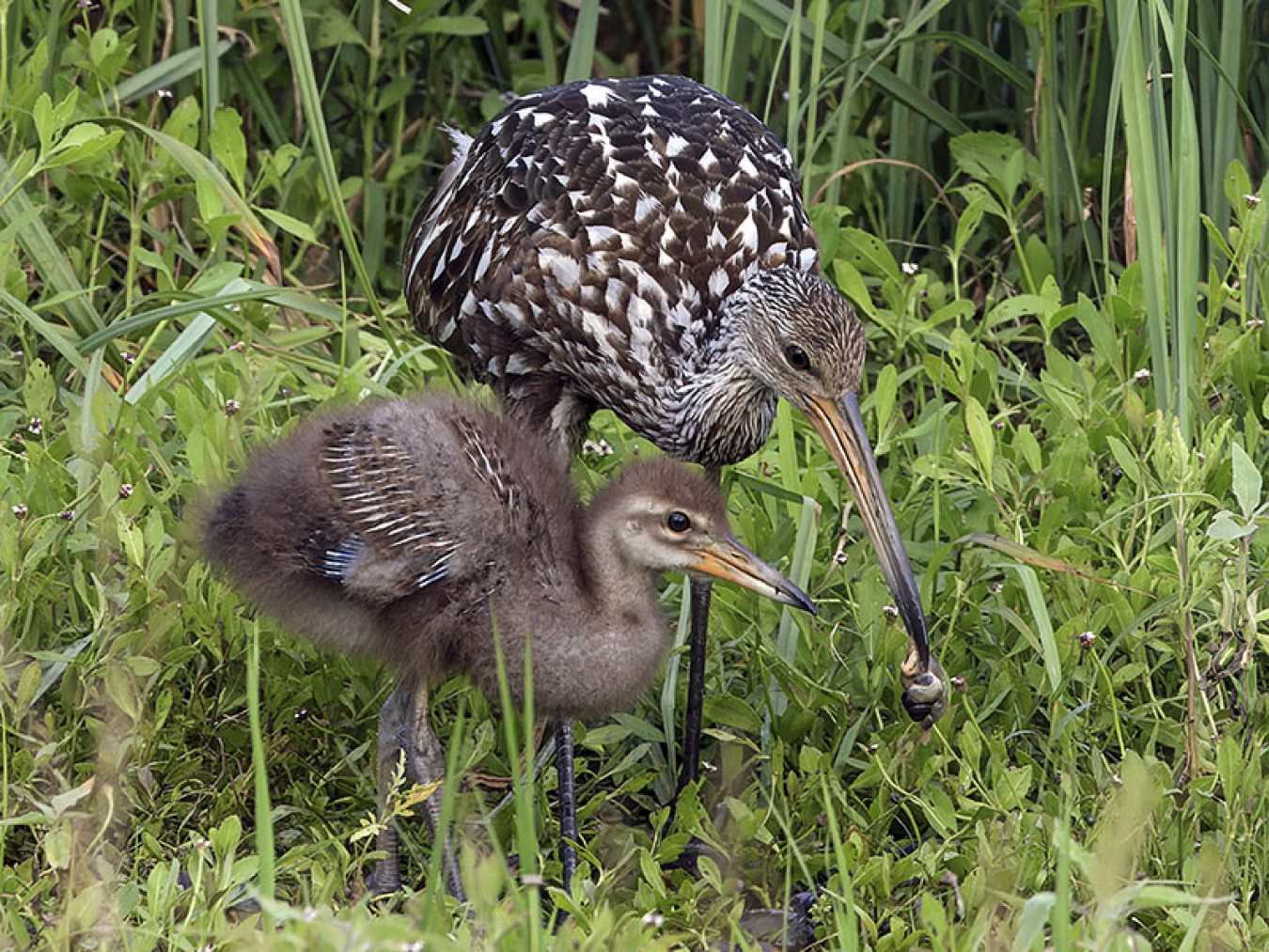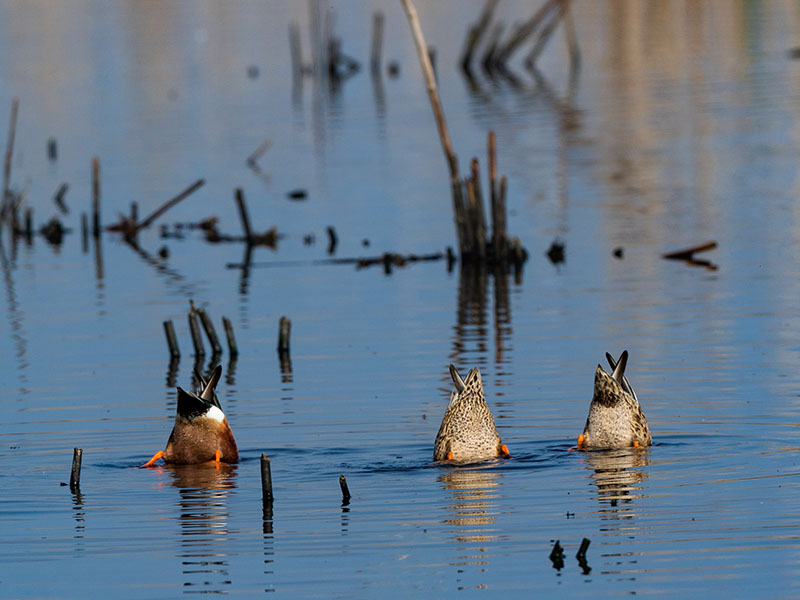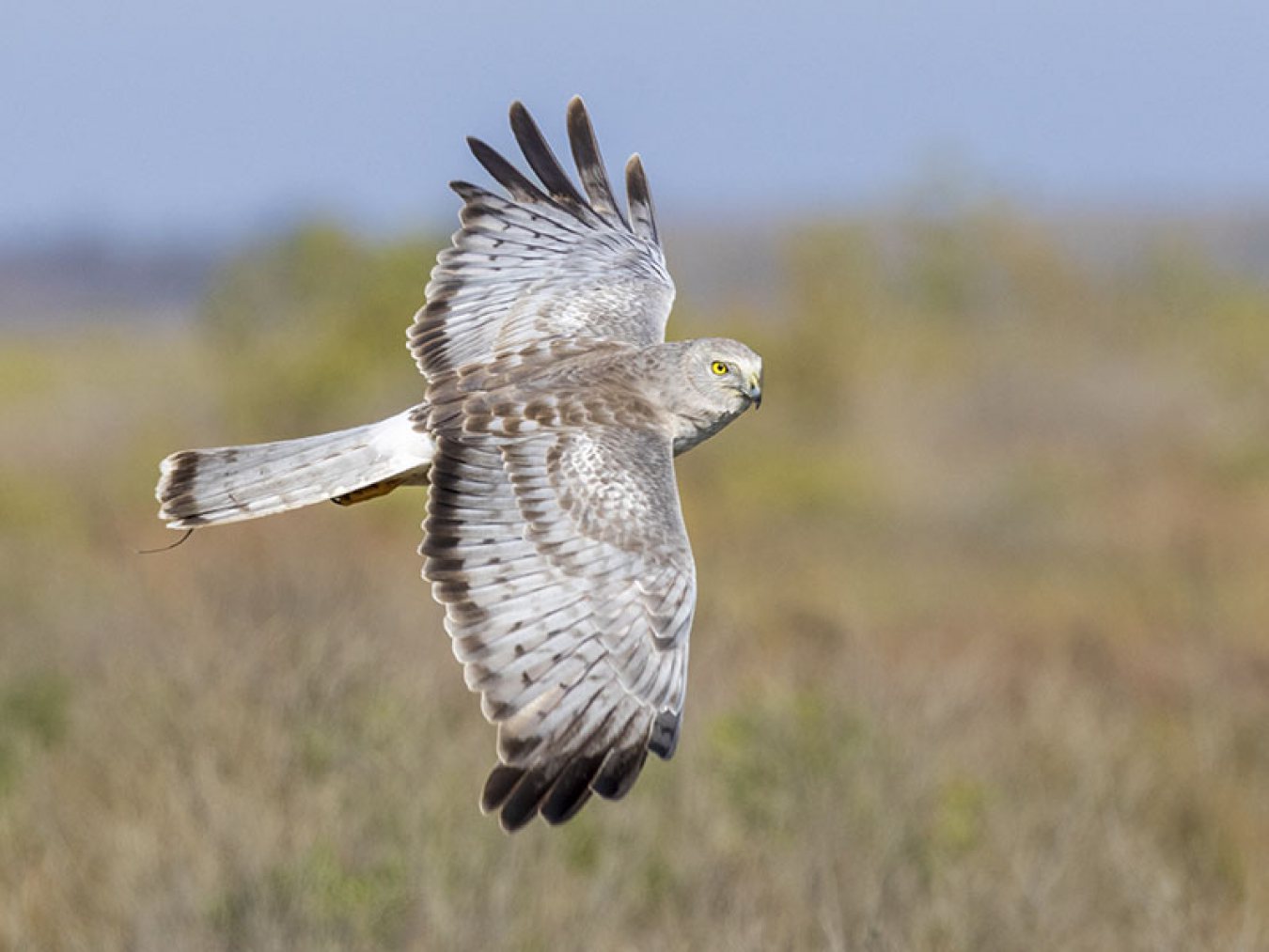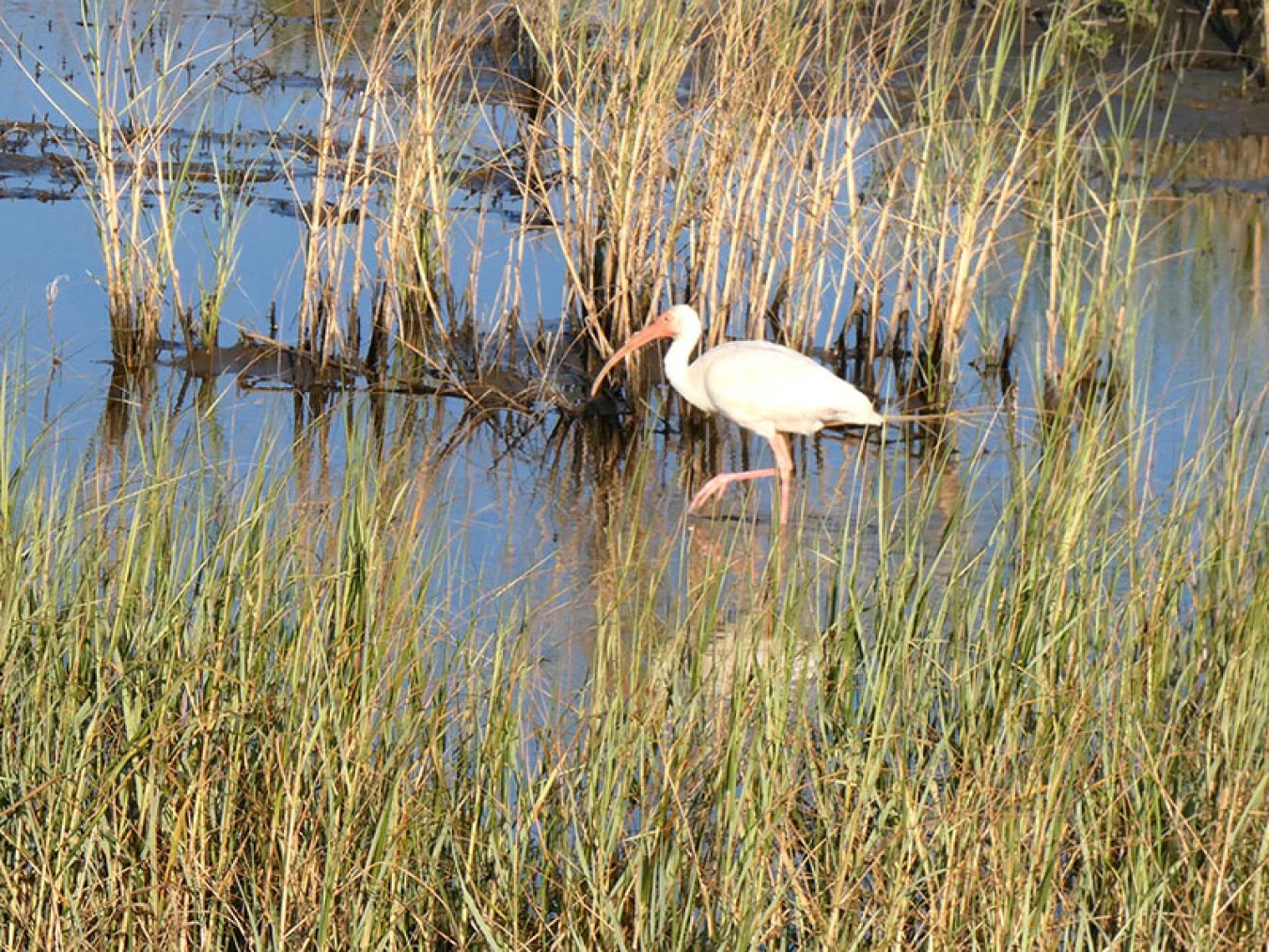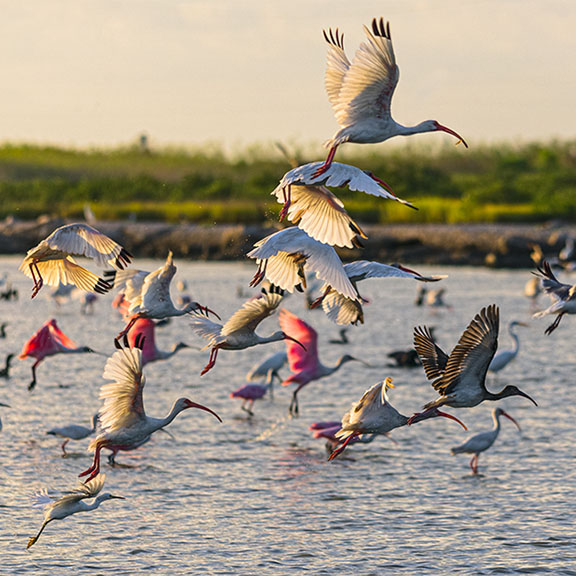
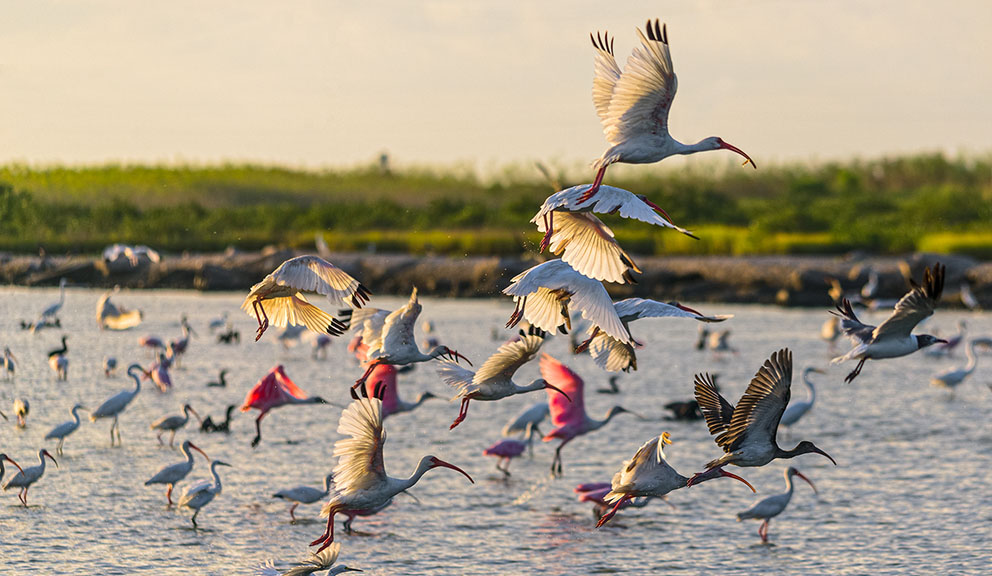

Bird Species
Below is our ever growing list of bird species that live in or migrate through the area.
Most of the photography was taken on the island but we have included shots taken in surrounding counties, many of which were taken during Featherfest.
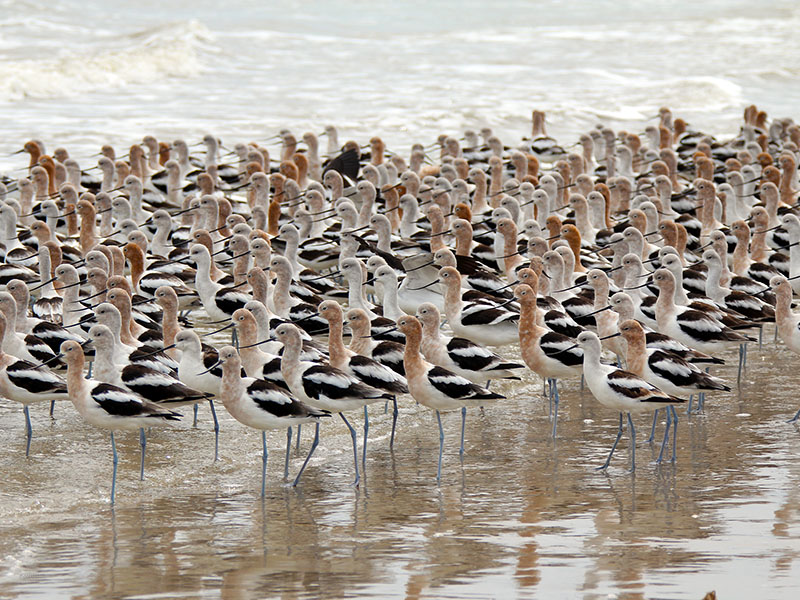
American Avocet
The American Avocet is a large wader that forages on beaches, mud flats, and the shores of prairie ponds
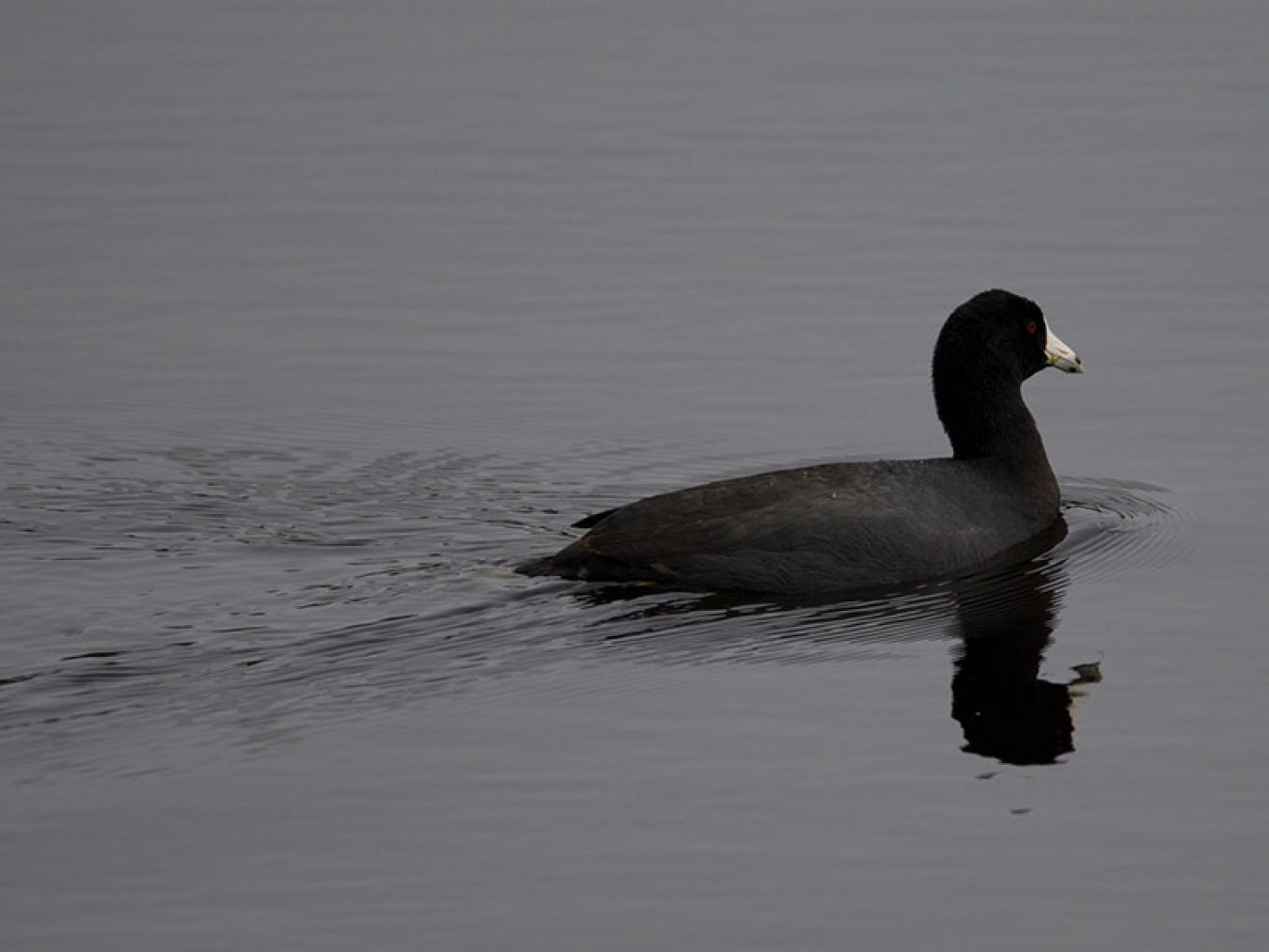
American Coot
The American Coot swims like a duck, but does not have webbed feet and are often see walking on the shore.
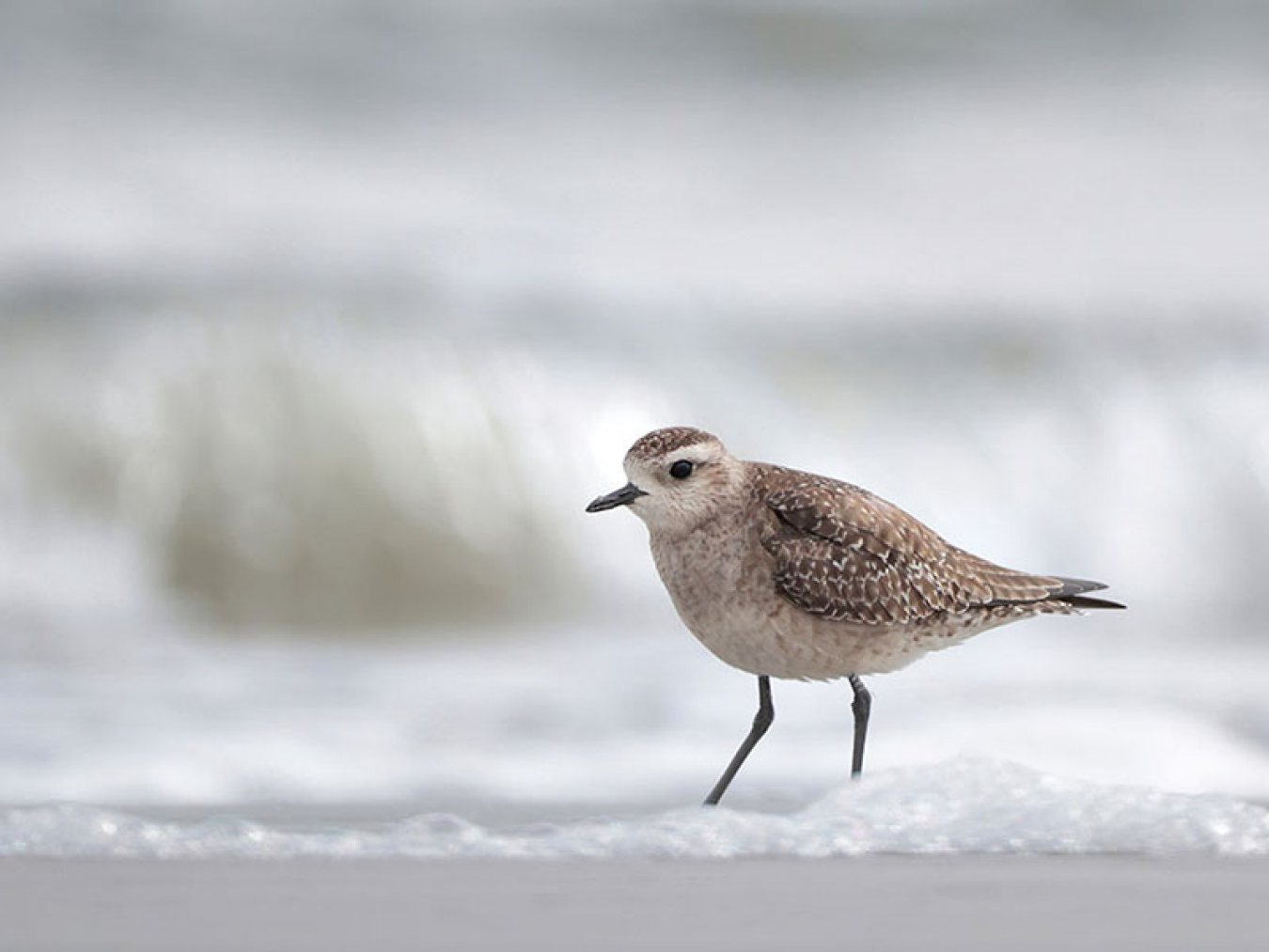
American Golden-Plover
This slender, long-winged plover makes an occasional brief stop on the island during its migration.
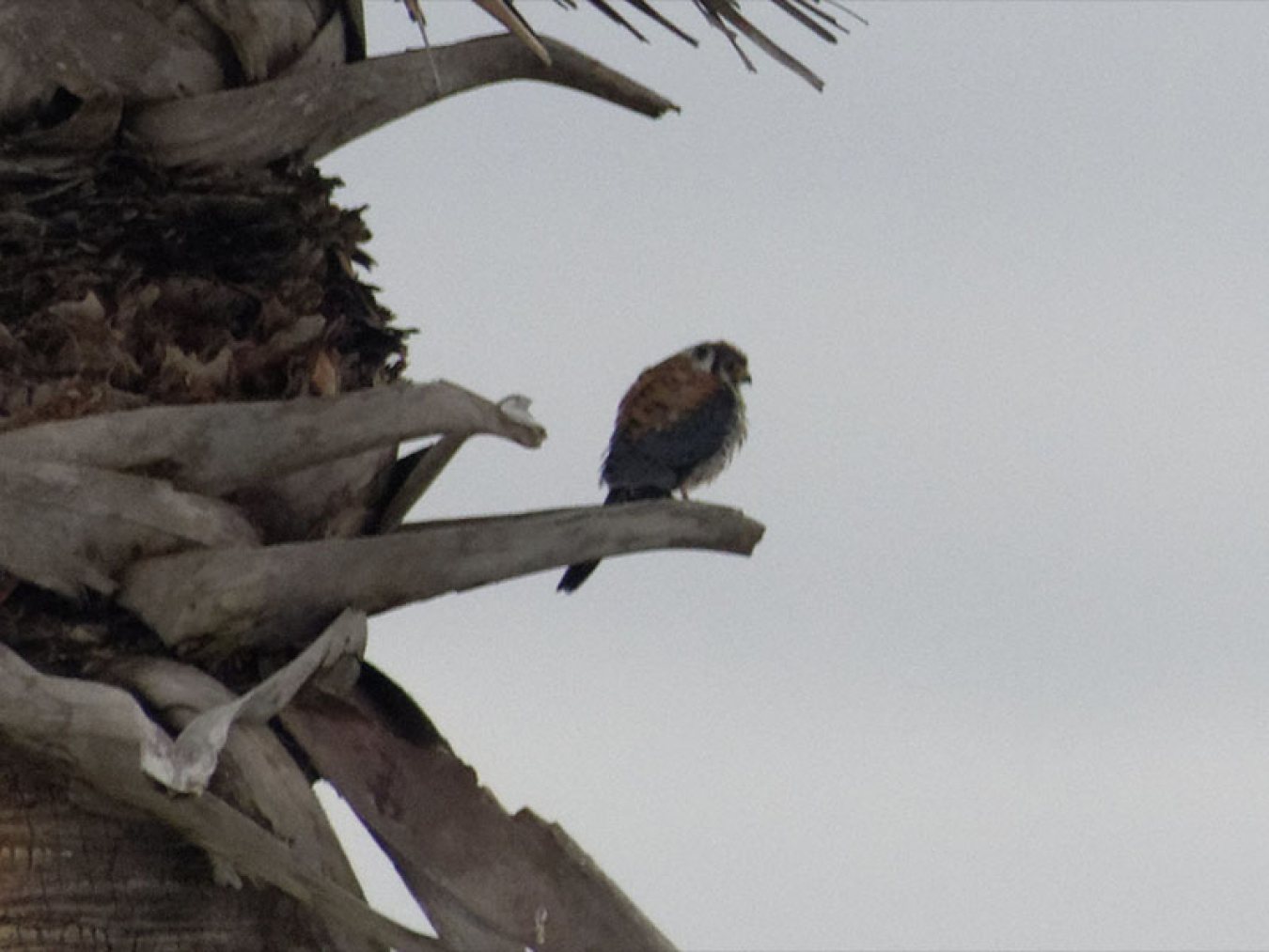
American Kestrel
The smallest North American falcon, the American Kestrel is rusty brown with black spots above and pale below.
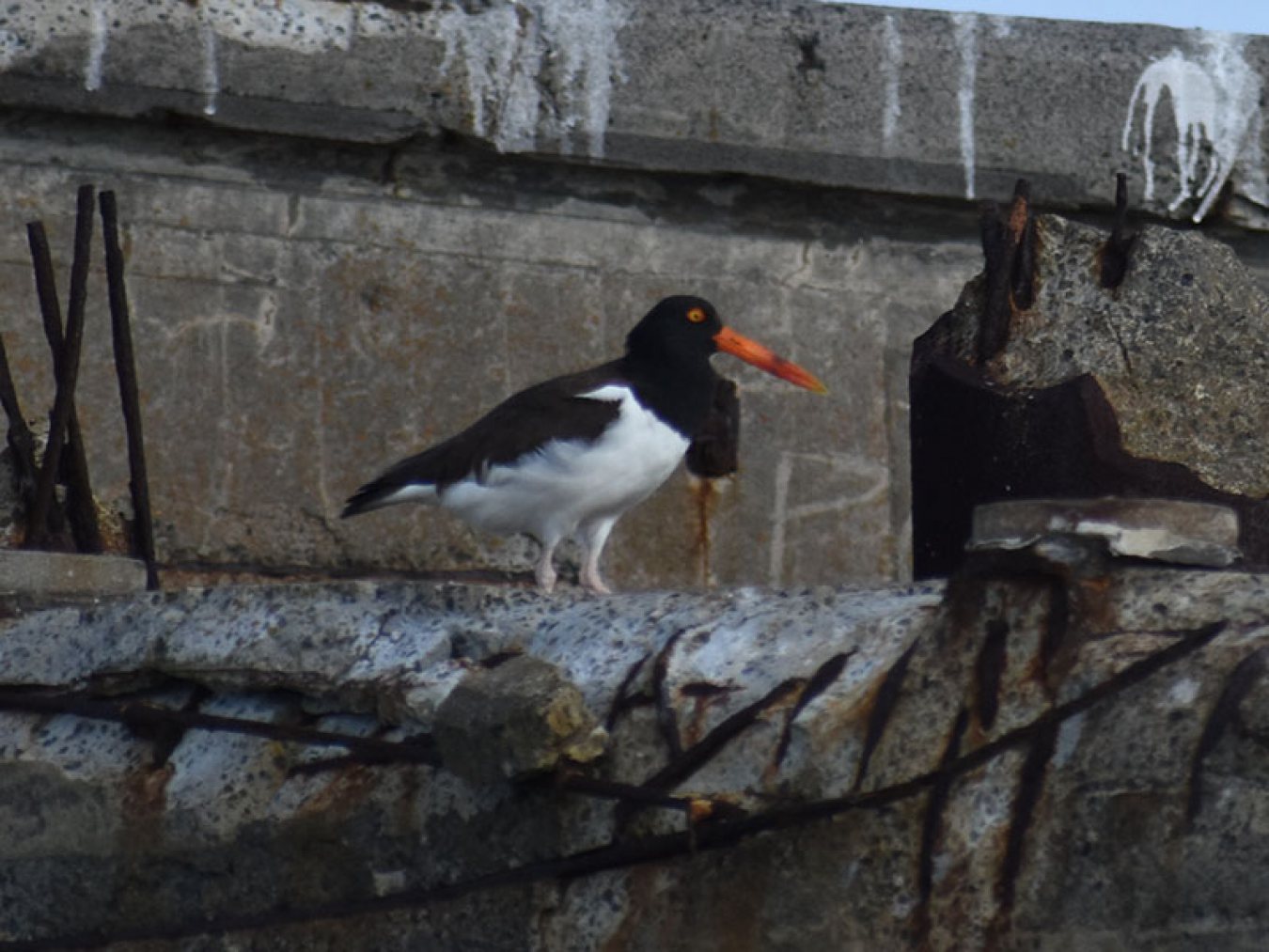
American Oystercatcher
A large chunky shorebird, the American Oystercatcher has a black head and breast, brown back and wings, and an orange-red bill.
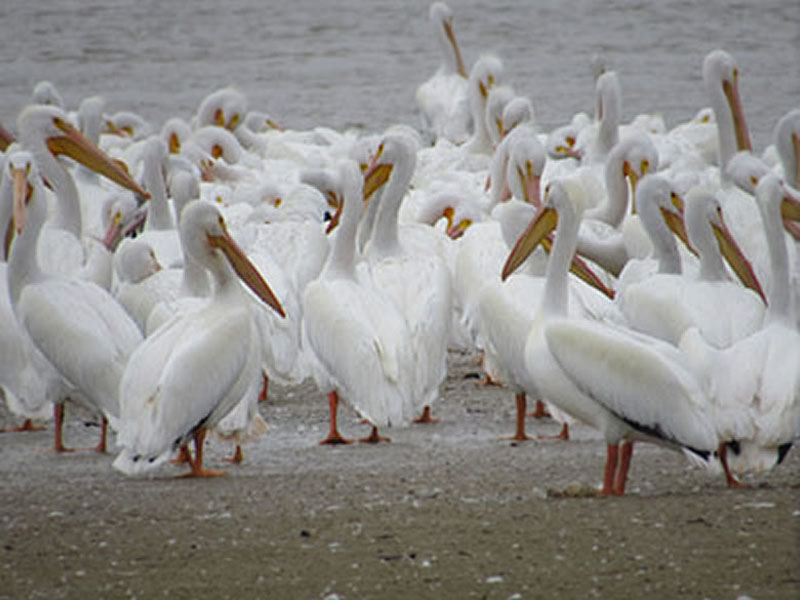
American White Pelican
The American White Pelican is a large aquatic soaring bird with a 9 foot wingspan – one of the largest in North America.
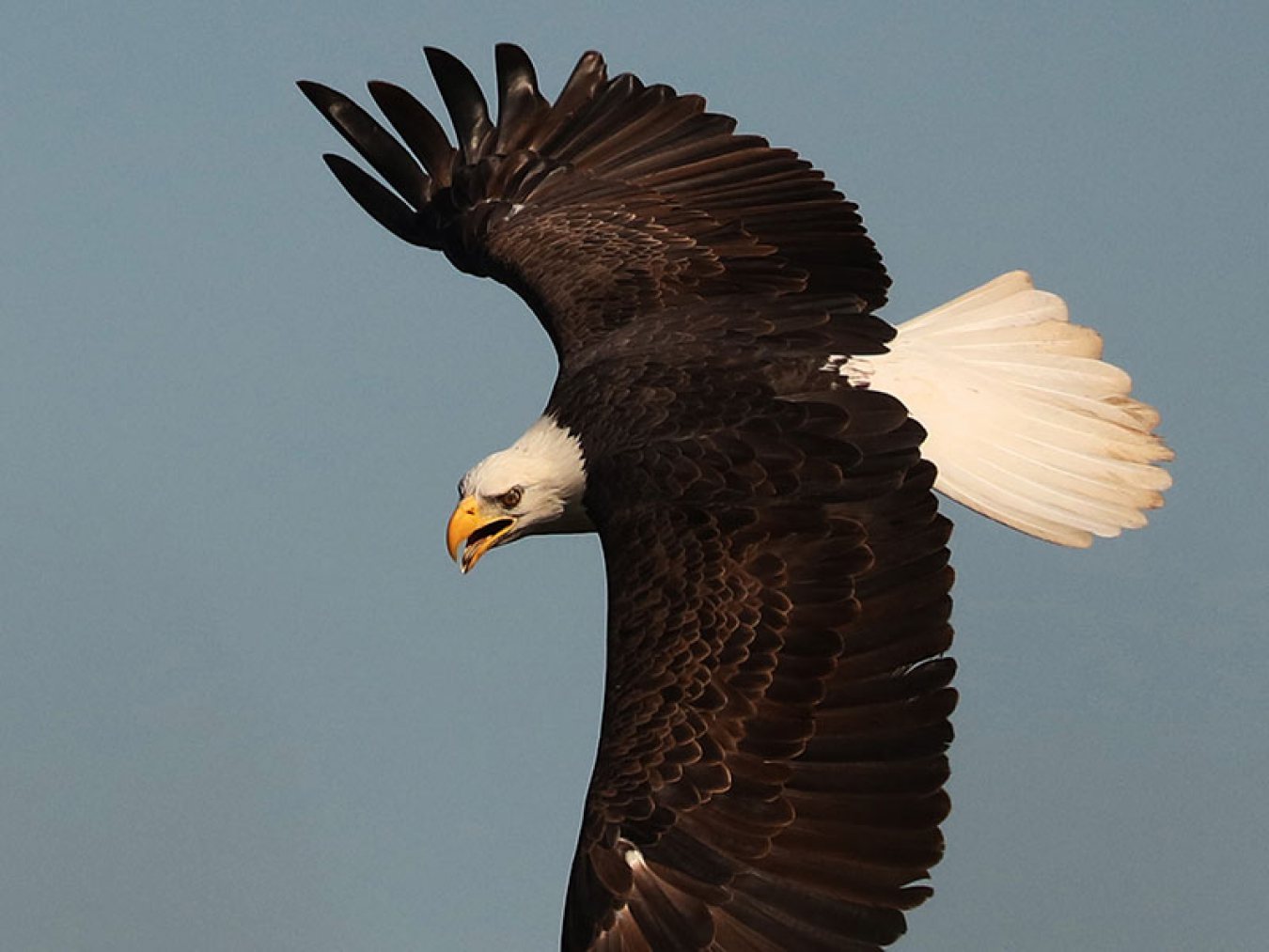
Bald Eagle
The national emblem of the United States, the majestic Bald Eagle has made a come back after declining during the early 20th century.
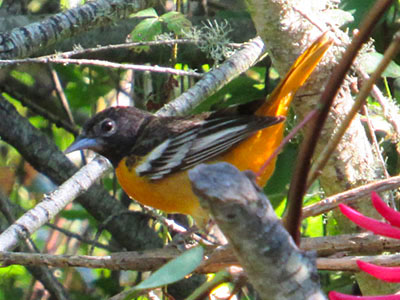
Baltimore Oriole
The Baltimore Oriole, a small icterid blackbird, is a migratory breeding bird, seen in Galveston during the spring.
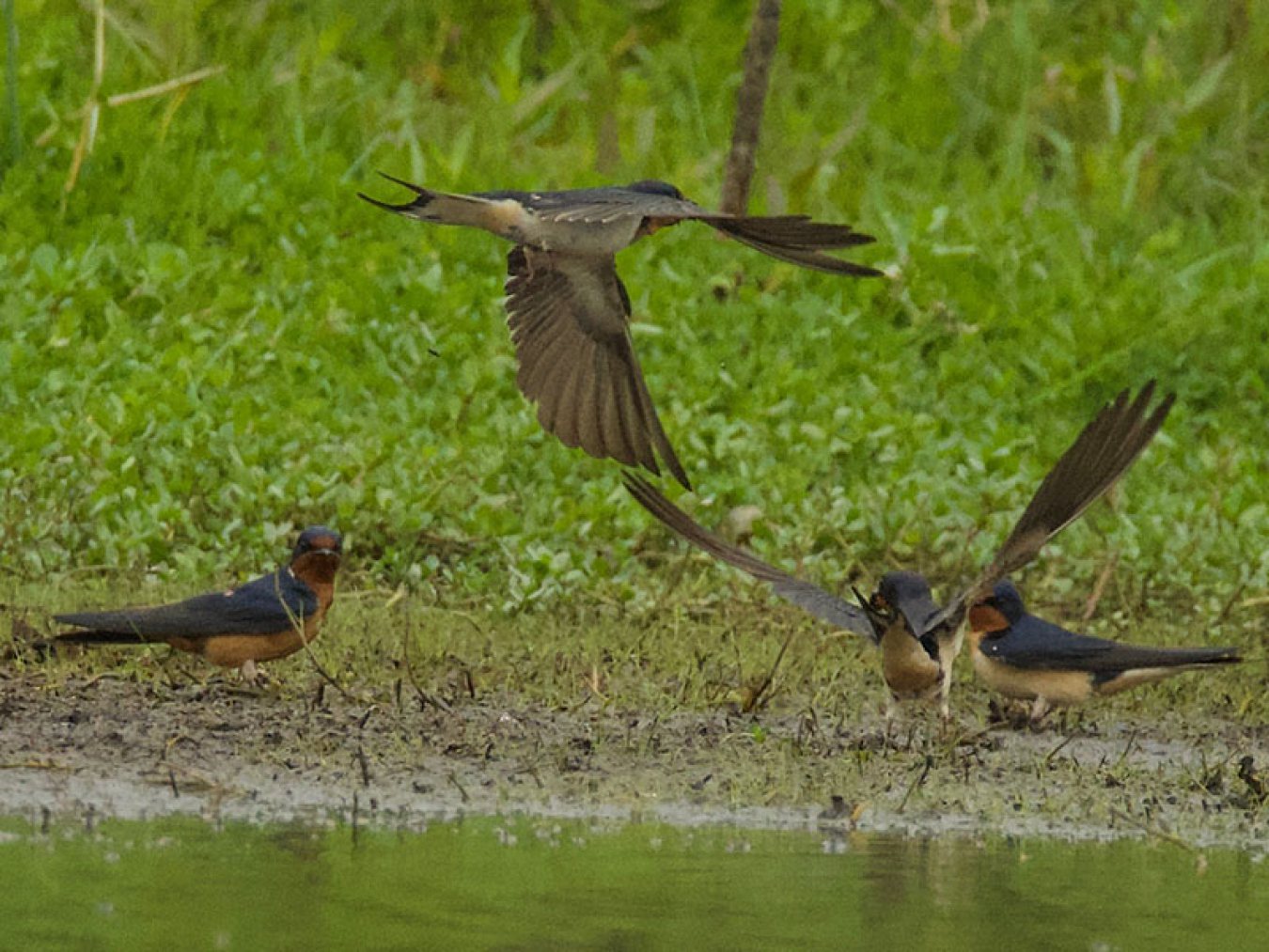
Barn Swallow
The blue coloring of the wings, back, face, and crown of the Barn Swallow contrasts with the reddish-brown underparts and the cinnamon-colored forehead and throat.
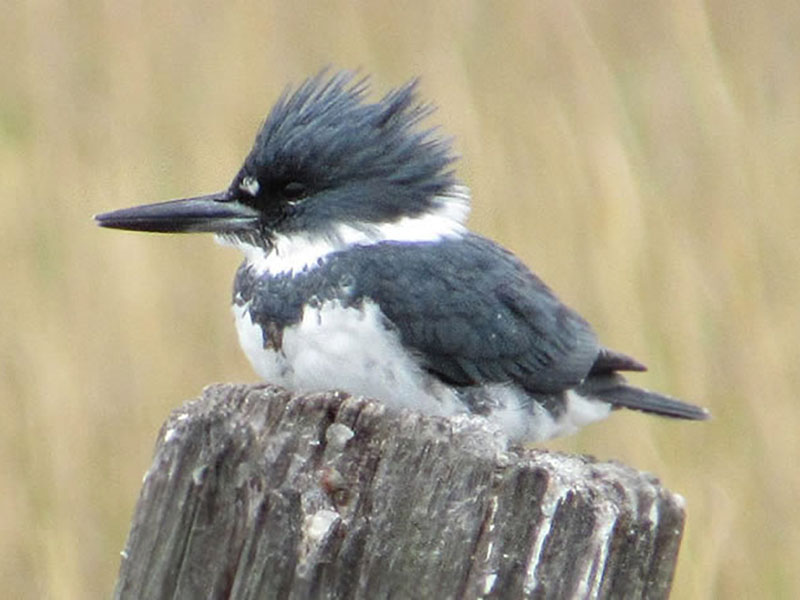
Belted Kingfisher
The Belted Kingfisher has a large head with a shaggy crest and a long, heavy black bill with a grey base.
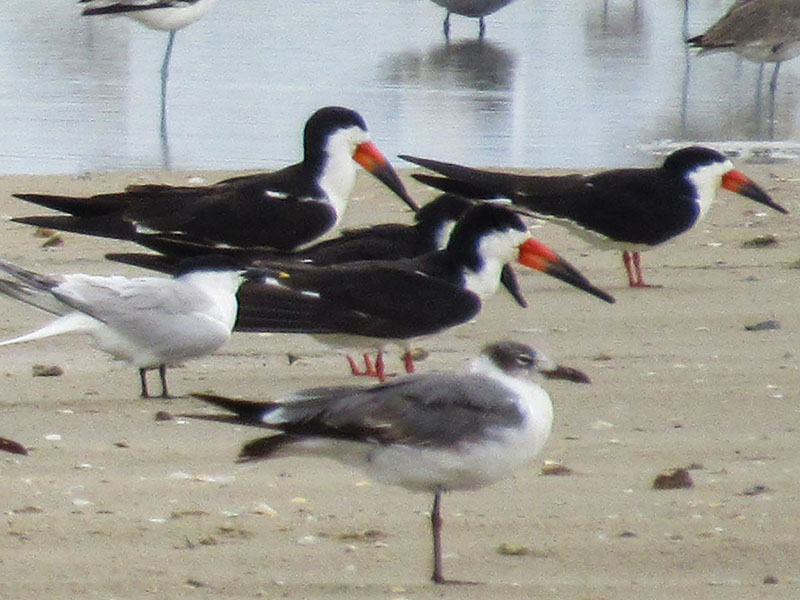
Black Skimmer
The Black Skimmer flies low along the water snapping up fish with is long lower mandible, while its long wings make short down strokes to avoid the water.
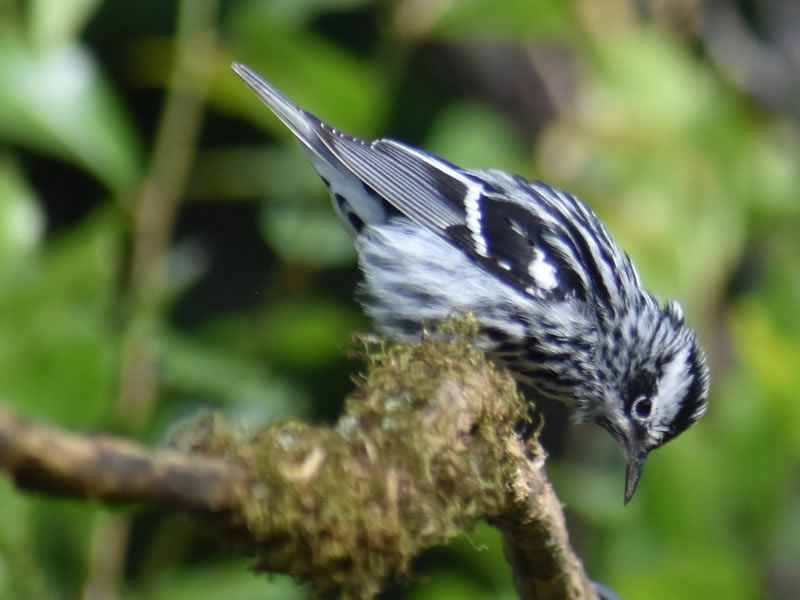
Black-and-white Warbler
Acting more like a creeper or nuthatch than other warblers, the Black-and-white Warbler climbs or creeps on tree trunks and limbs foraging on insects
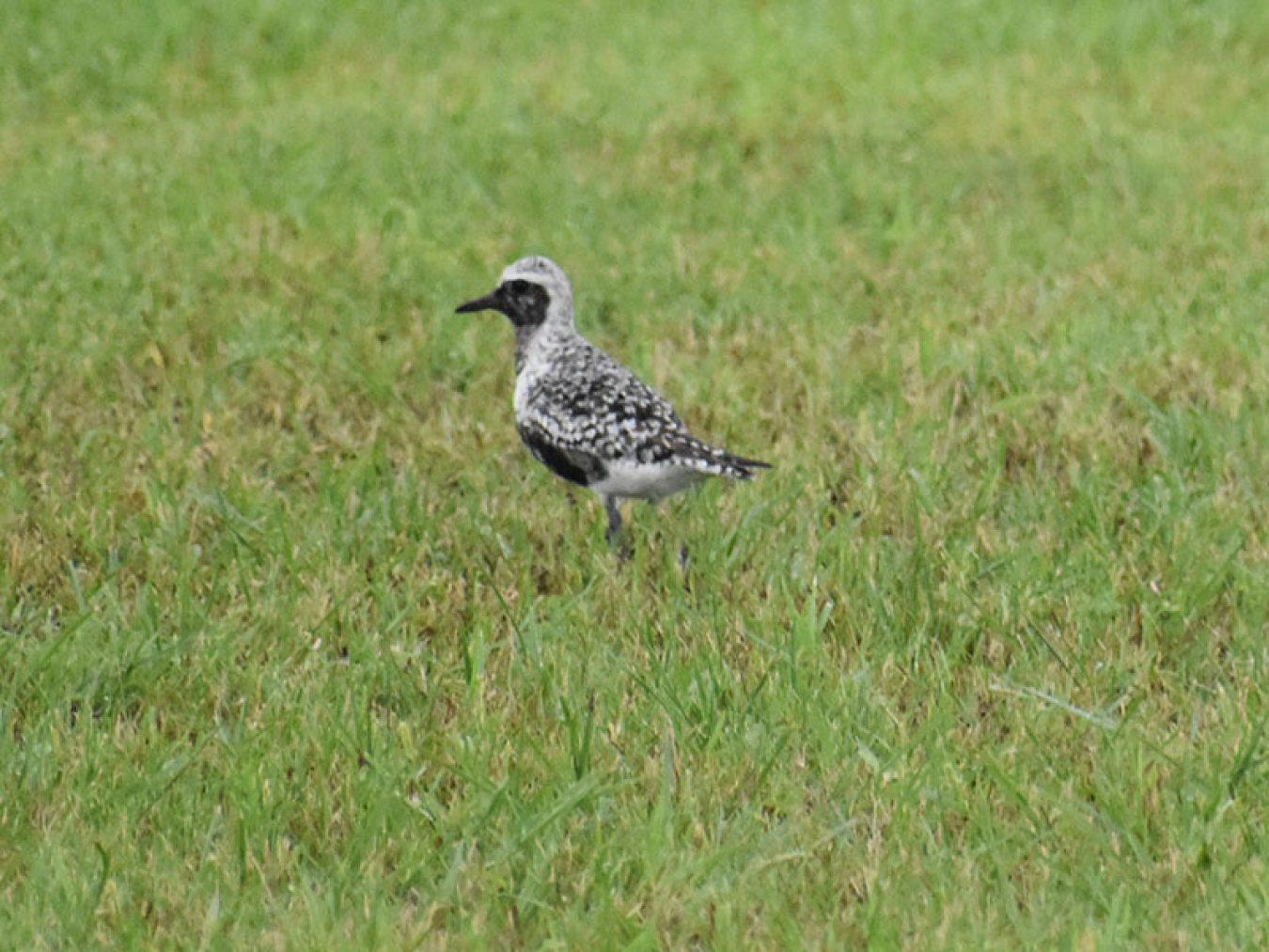
Black-bellied Plover
The Black-bellied Plover breeds in the Arctic and winters on the coast, including Galveston.
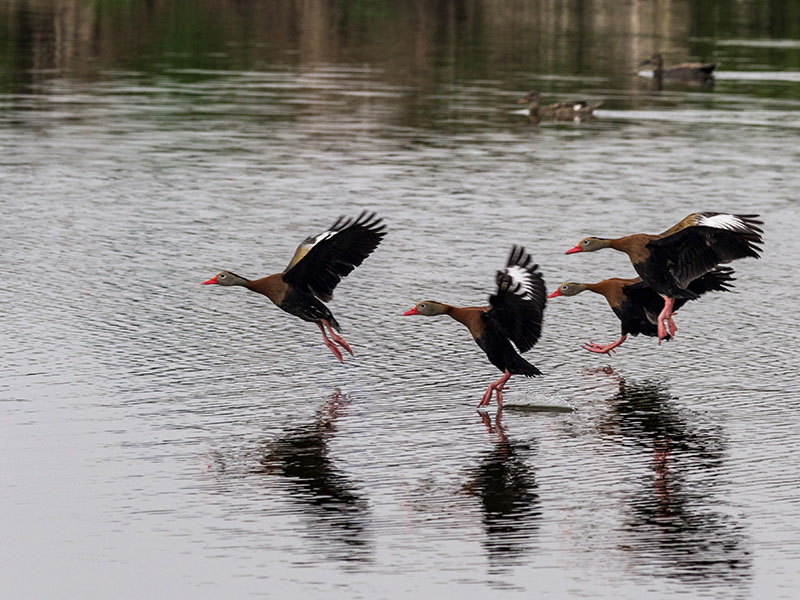
Black-bellied Whistling-Duck
The Black-bellied Whistling Duck is a mid-sized waterfowl species with a long red bill, long head and longish legs, pale gray head and mostly gray-brown plumage.
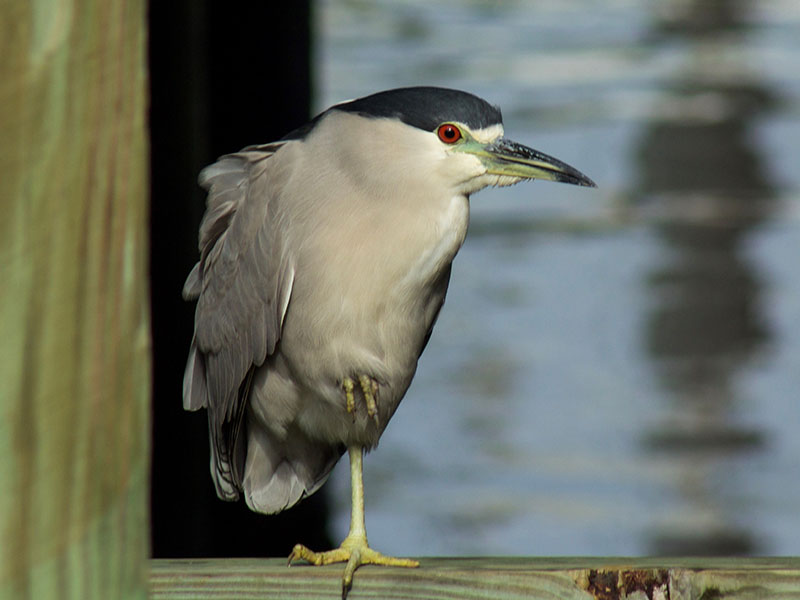
Black-crowned Night-Heron
Black-crowned Night-Herons do not fit the typical body form of the heron family, with shorter bills, legs, and necks.
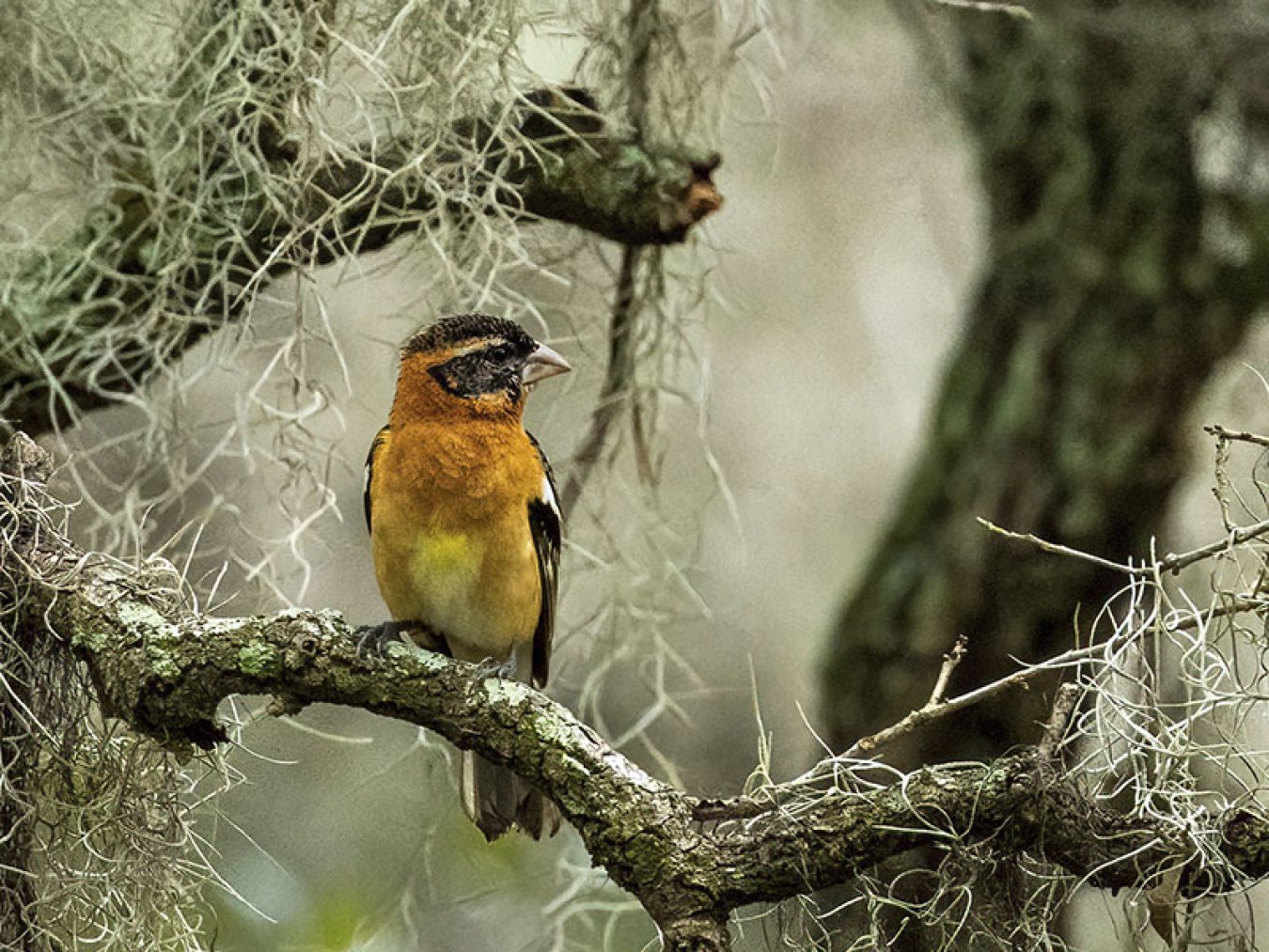
Black-headed Grosbeak
More common in Western North America, but it occasionally migrates through Galveston.
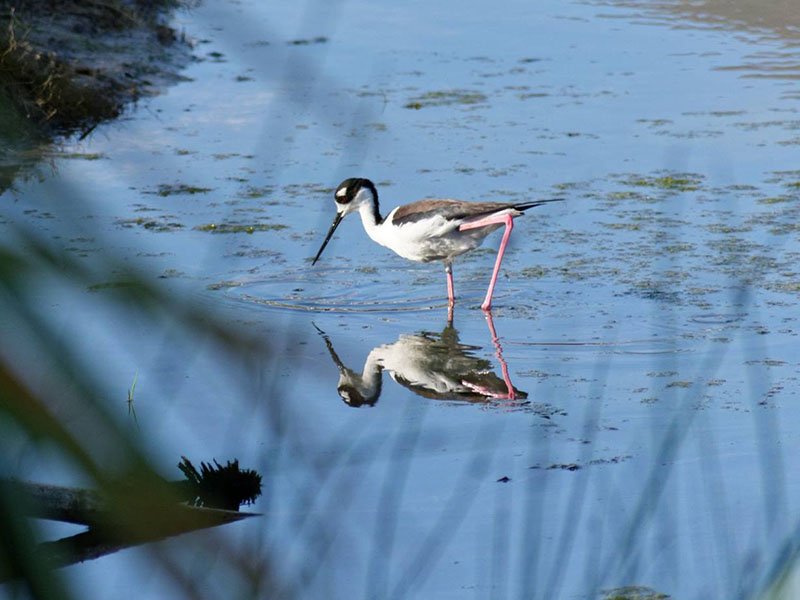
Black-necked Stilt
An abundant shorebird of our wetlands, mud flats, and beaches, Black-necked Stilts have long pink legs and a long thin black bill.
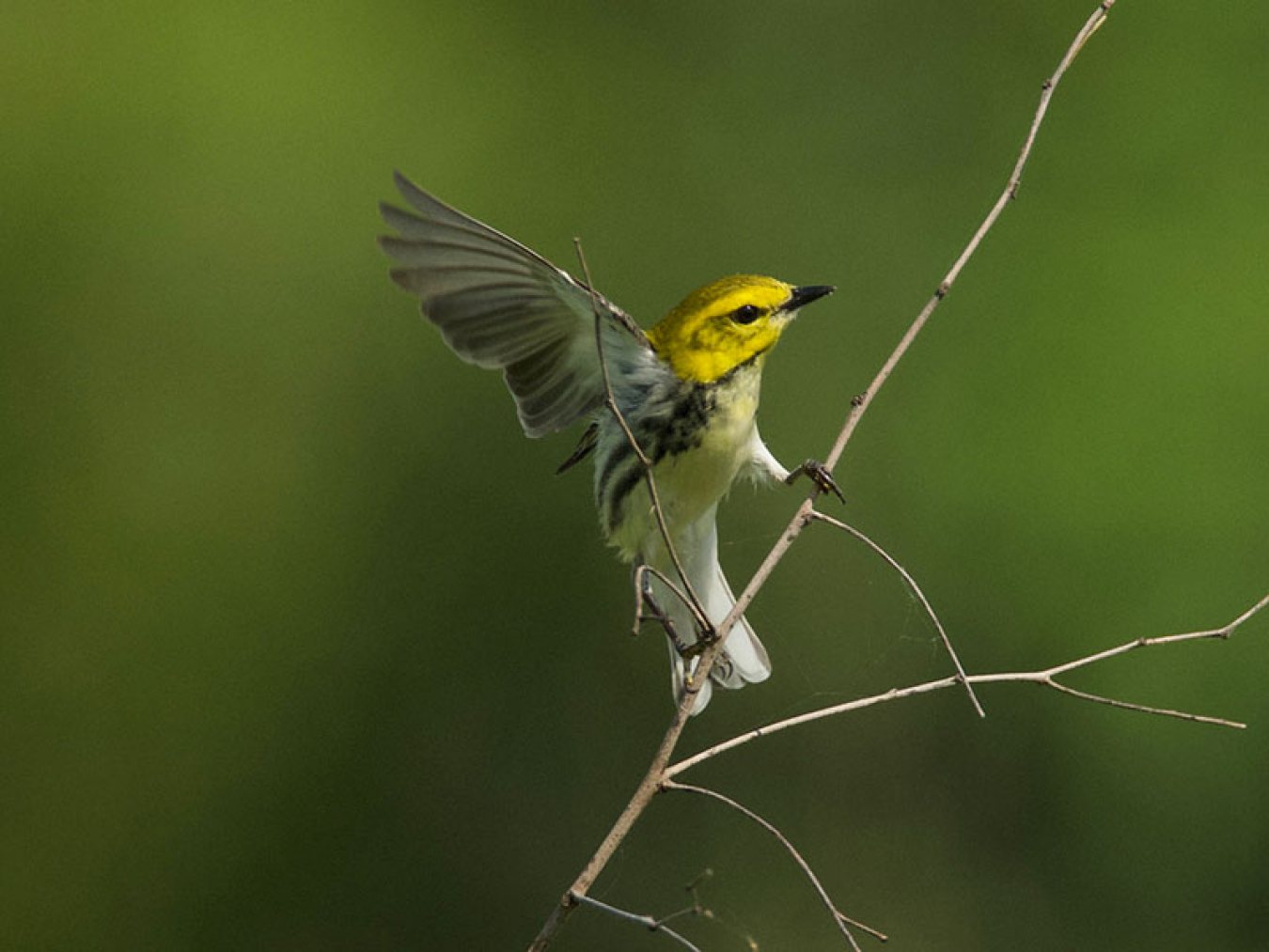
Black-throated Green Warbler
One of Galveston’s spring migrants, it is a medium-sized warbler with an olive-green body with white below, a yellow face and black on the front.
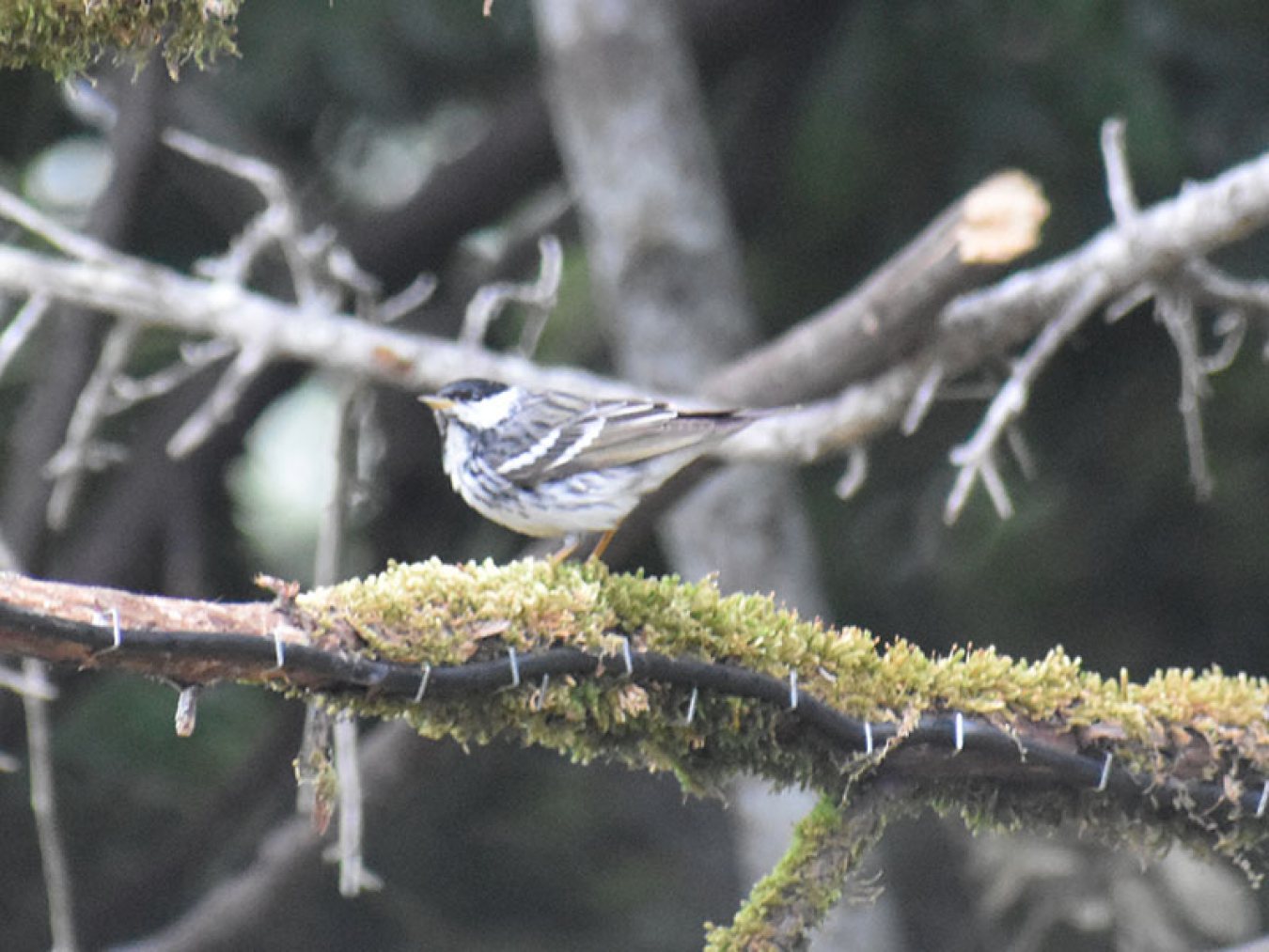
Blackpoll Warbler
The Blackpoll Warbler winters in Canada and the Arctic. Most migrate through Florida to and from South America, but some through Galveston.
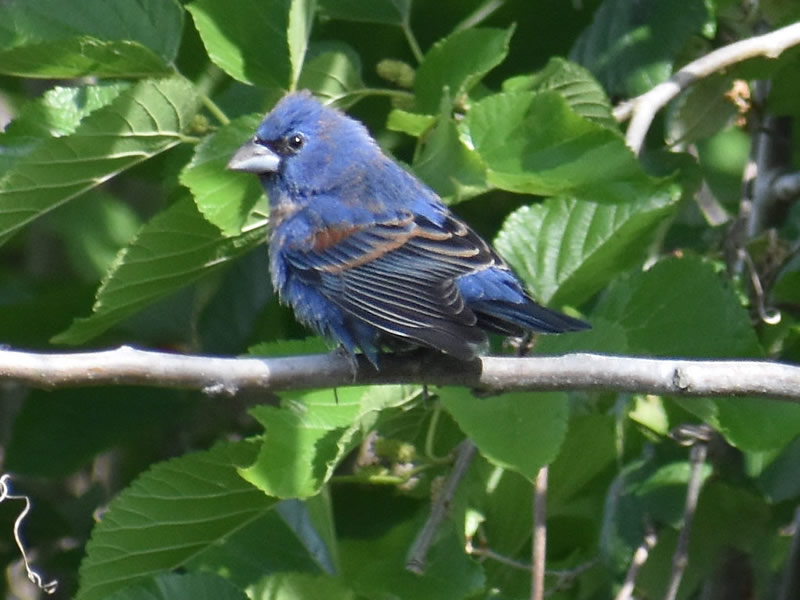
Blue Grosbeak
In the same family as the Northern Cardinal, the Blue Grosbeak is a stocky seed-eating songbird.
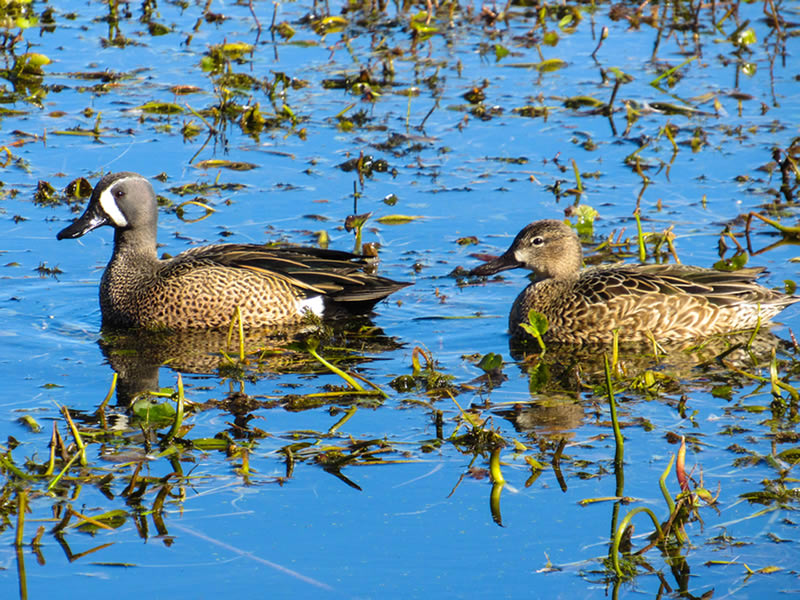
Blue-winged Teal
A relatively small dabbling duck, the Blue-winged Teal migrates south in early fall, some wintering on Galveston Island.
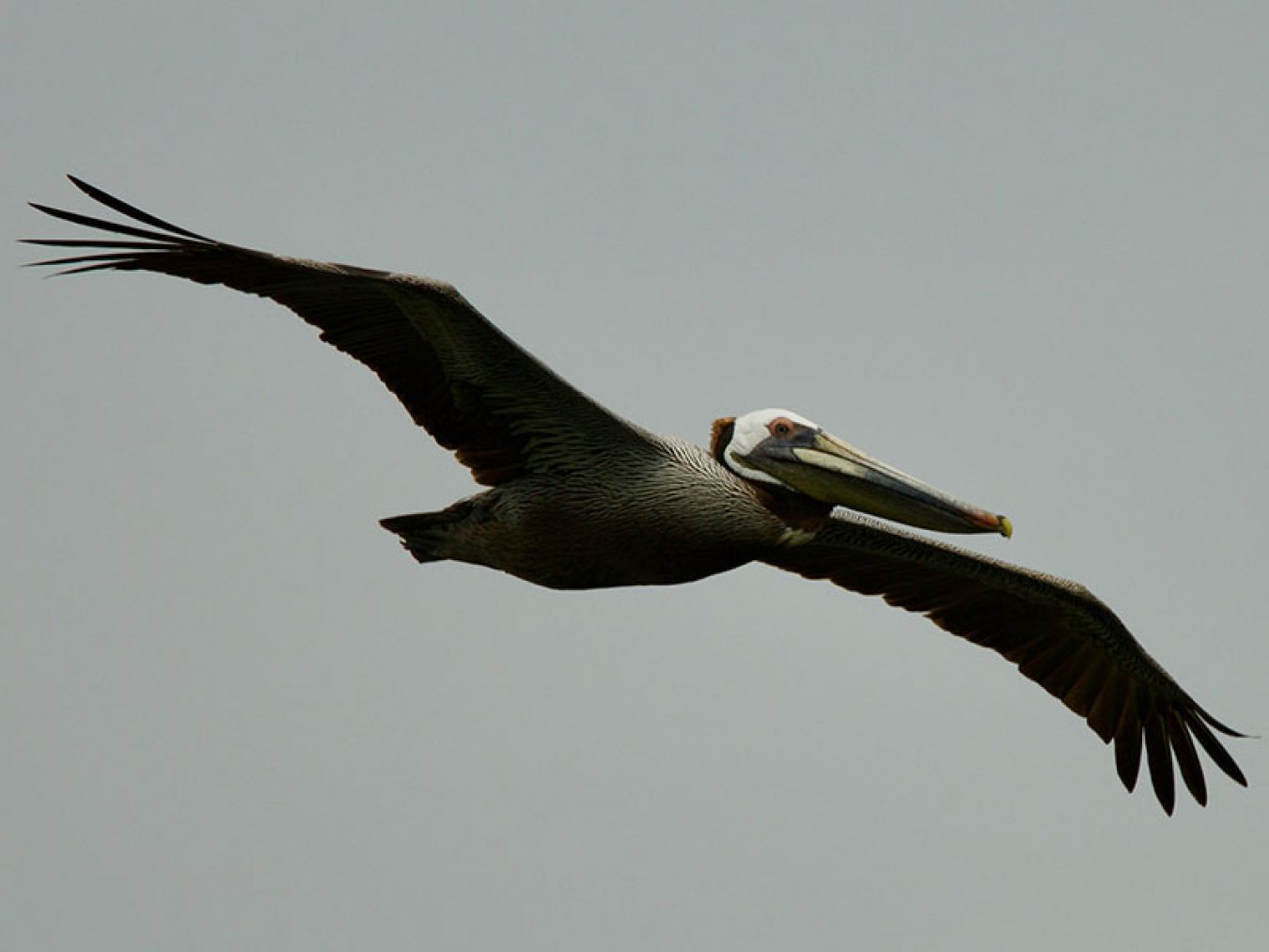
Brown Pelican
It’s hard not to spot groups of Brown Pelicans flapping and gliding along Galveston’s beaches.
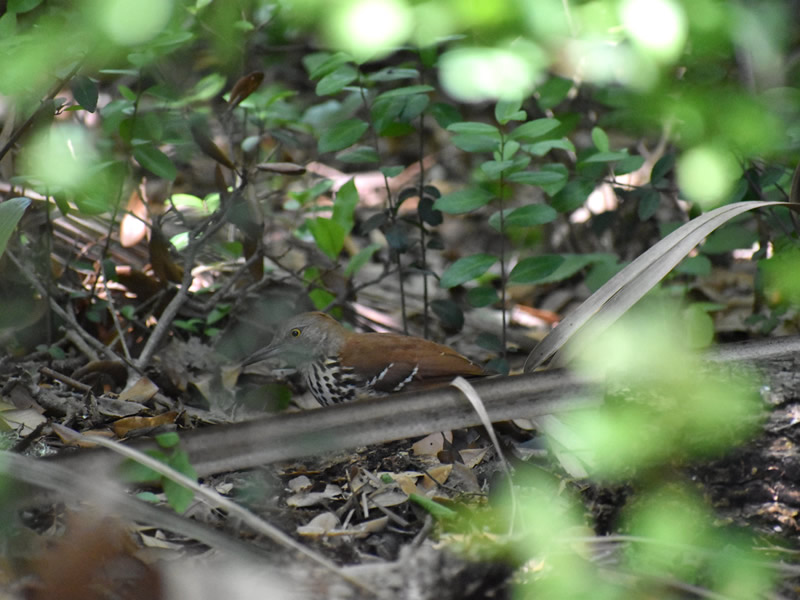
Brown Thrasher
Often hidden in shrubs and brush, Brown Thrashers can be hard to spot. You may hear its melodious song first.
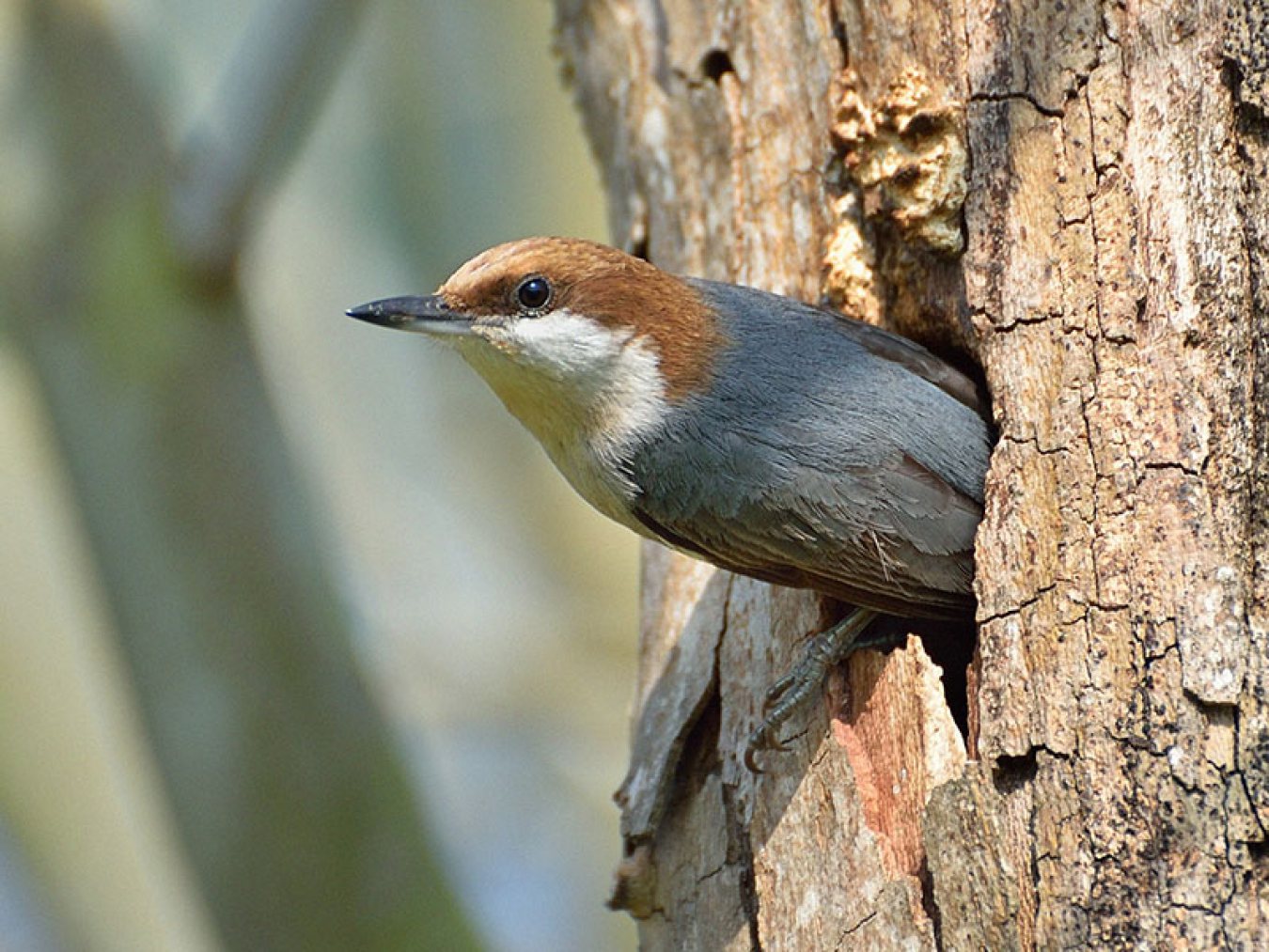
Brown-headed Nuthatch
A small compact nuthatch that forages by climbing up and down on the trunk and limbs of pines.
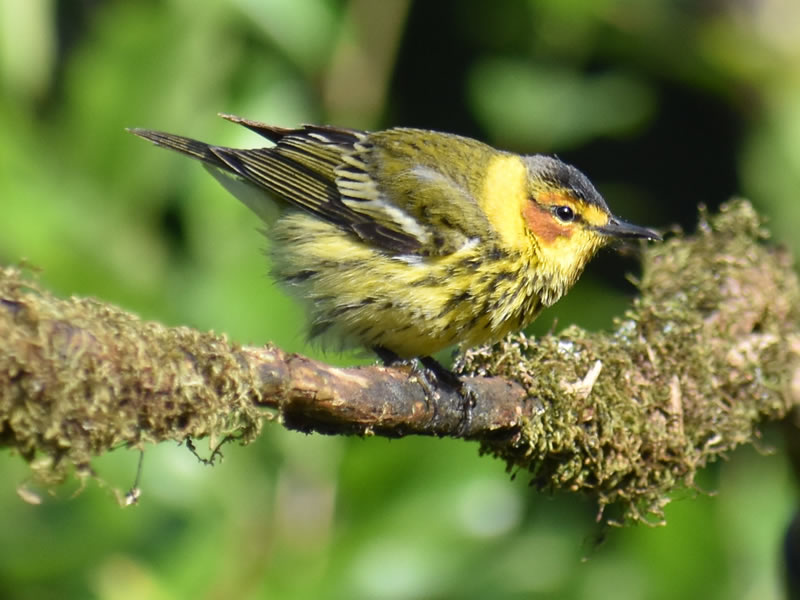
Cape May Warbler
The Cape May Warbler spends summers in northern spruce woods and migrates south for winter.
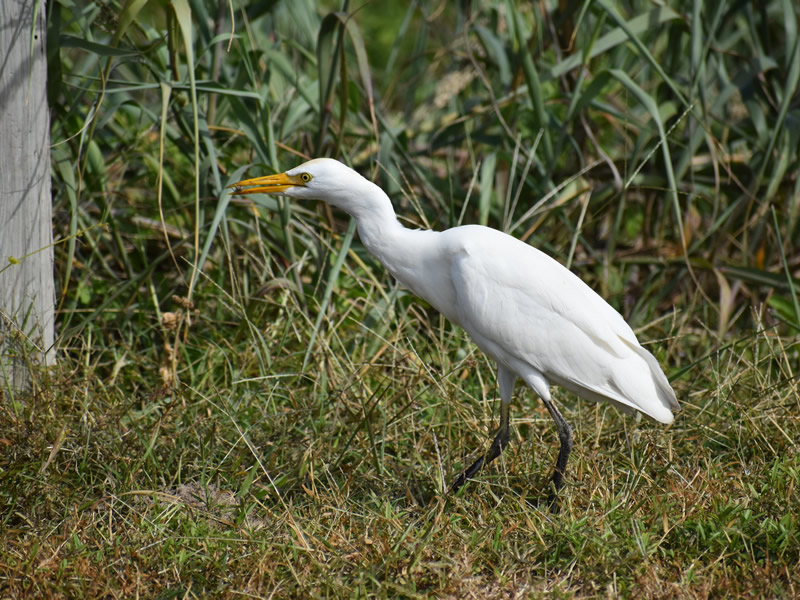
Cattle Egret
Unlike other herons and egrets, the Cattle Egret spends more time in dry fields than streams and ponds.
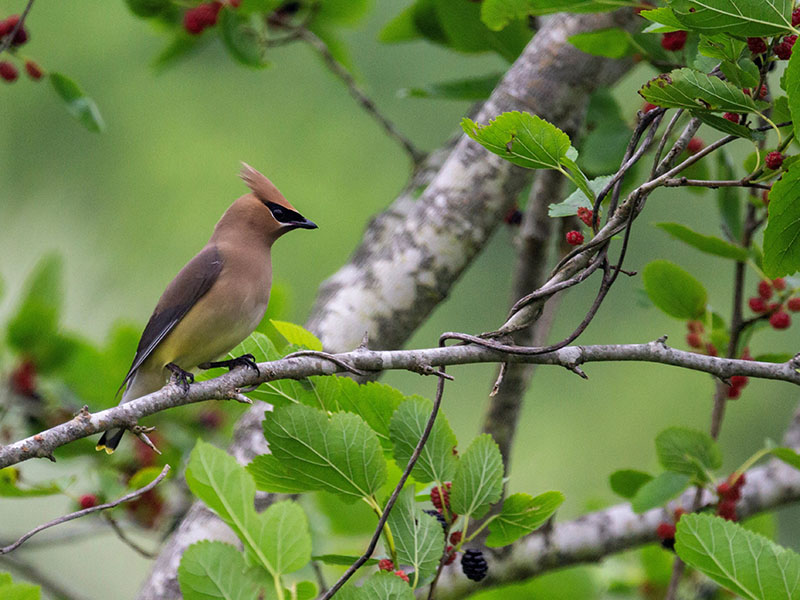
Cedar Waxwing
The Cedar Waxwing is a medium-sized, mostly brown, gray, and yellow bird named for its wax-like wing tips.
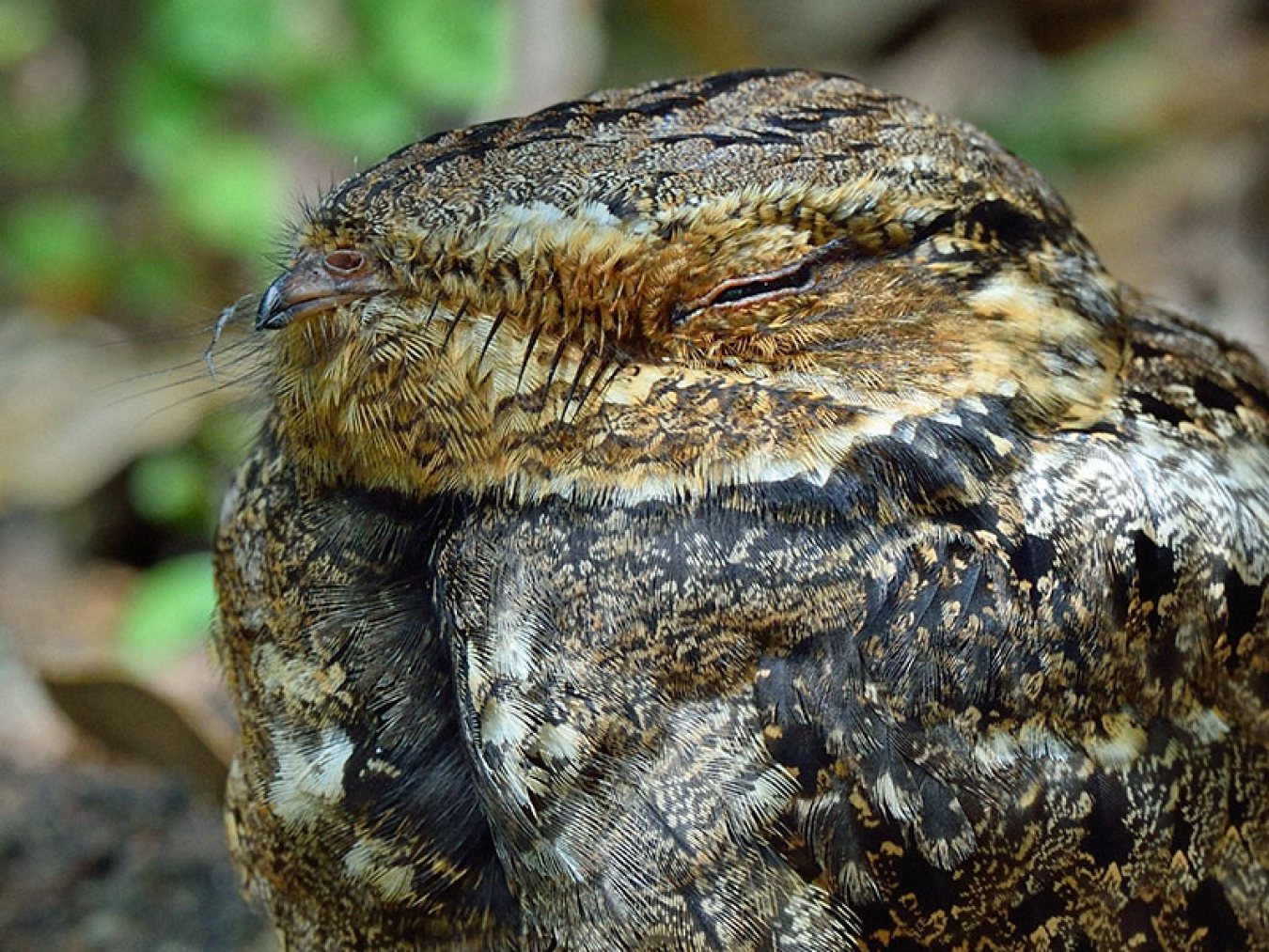
Chuck-will’s-widow
You may hear the Chuck-will’s-widow singing its name before you see it, as its leafy camouflage makes it hard to spot.
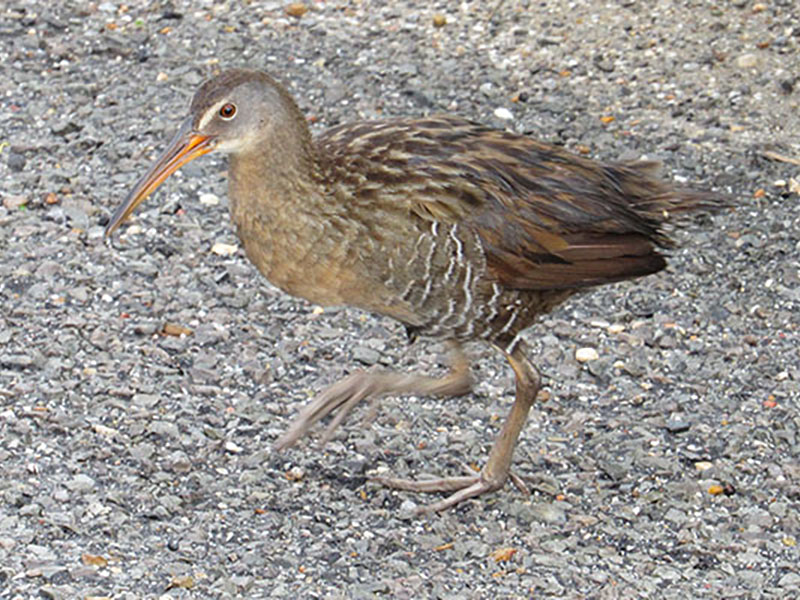
Clapper Rail
A chicken-sized bird that rarely flies and hides in dense cover, but occasionally can be seen on the edge of marshes or tidal creeks.
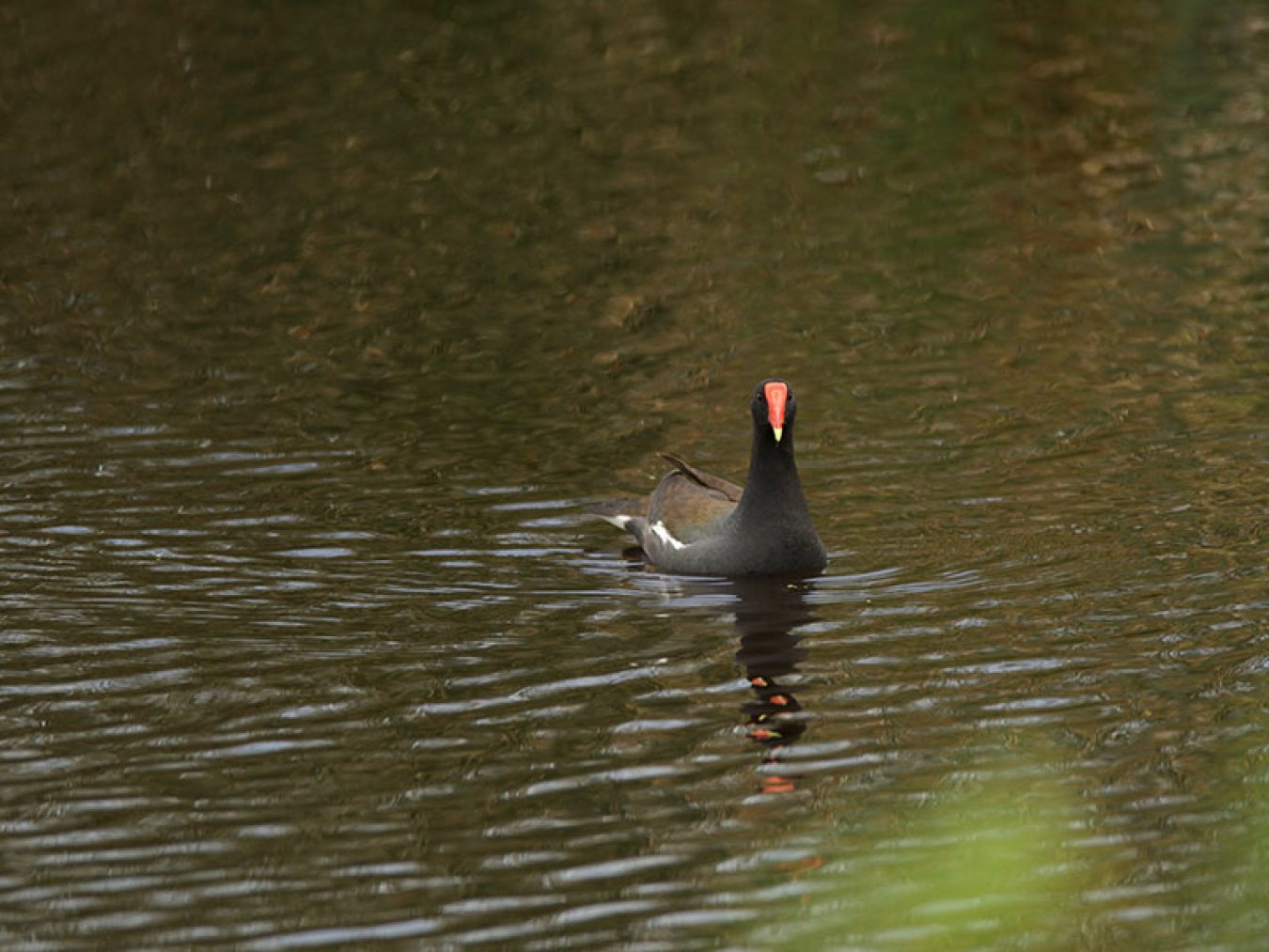
Common Gallinule
A medium-sized marsh birds with long legs and toes, Common Gallinule is charcoal gray with a white stripe down their side and white outer tail feathers.
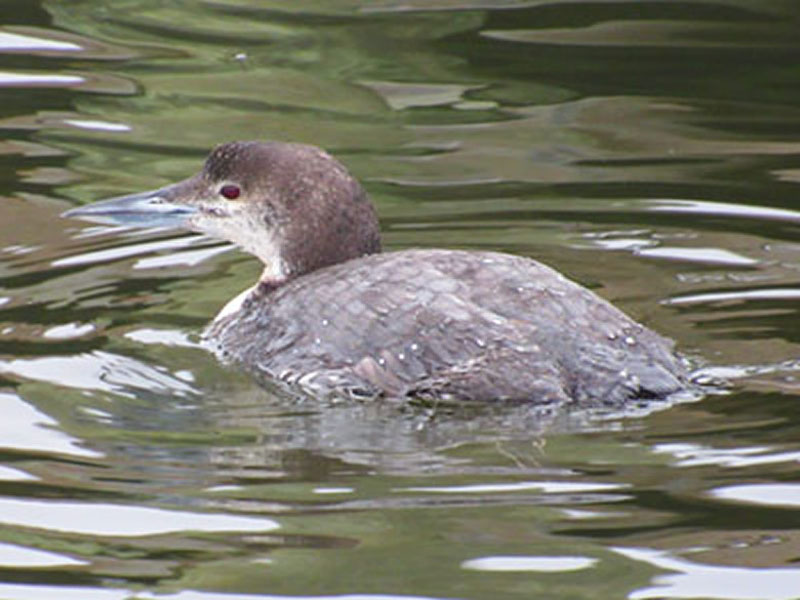
Common Loon
The Common Loon is a large member of the loon, or diver, family. They can be found wintering on Galveston Island.
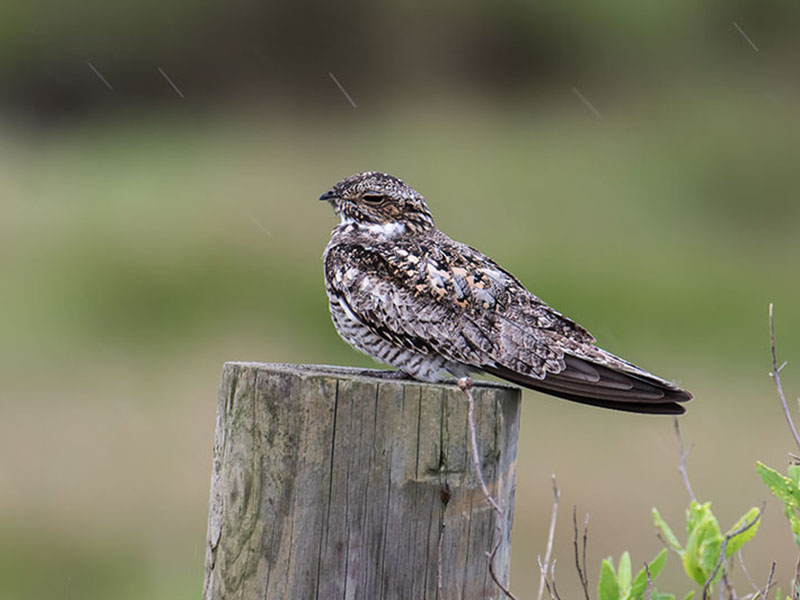
Common Nighthawk
A medium-sized nocturnal bird, its presence and identity are often revealed by its nasal cries and is difficult to spot during the day.
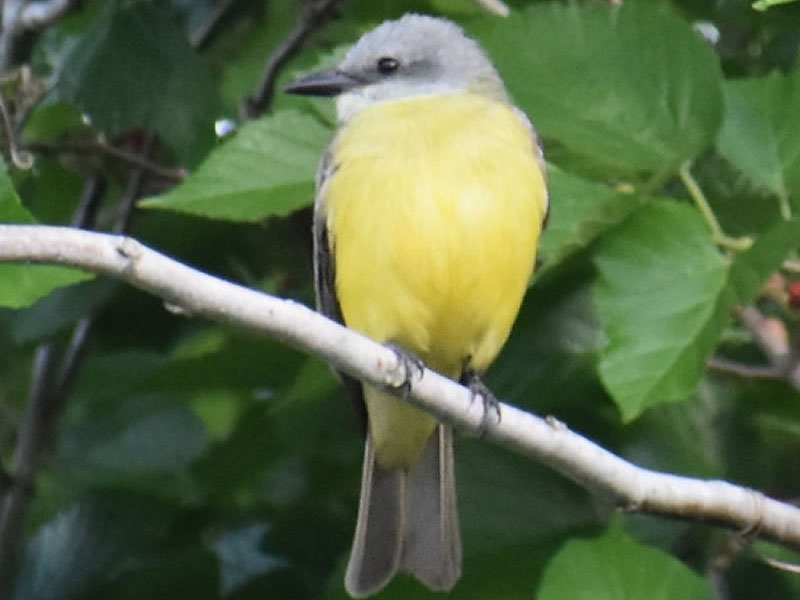
Couch’s Kingbird
A brightly colored flycatcher, the Couch’s Kingbird is found from the Texas coast to the Yucatan Peninsula, Belize, and Guatemala.
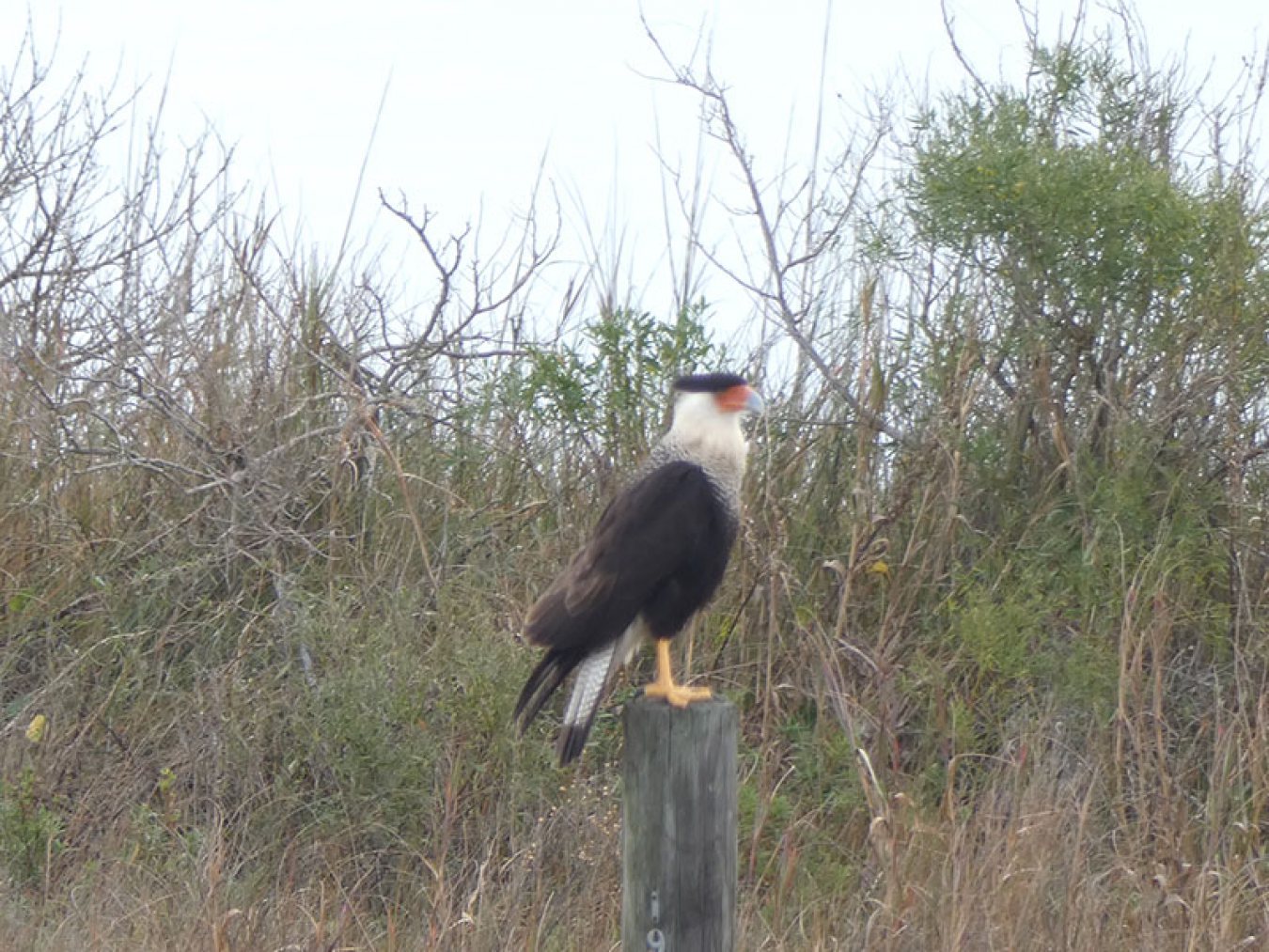
Crested Caracara
The Crested Caracara is a large black and white falcon with long yellow-orange legs and yellow-orange skin around the bill.
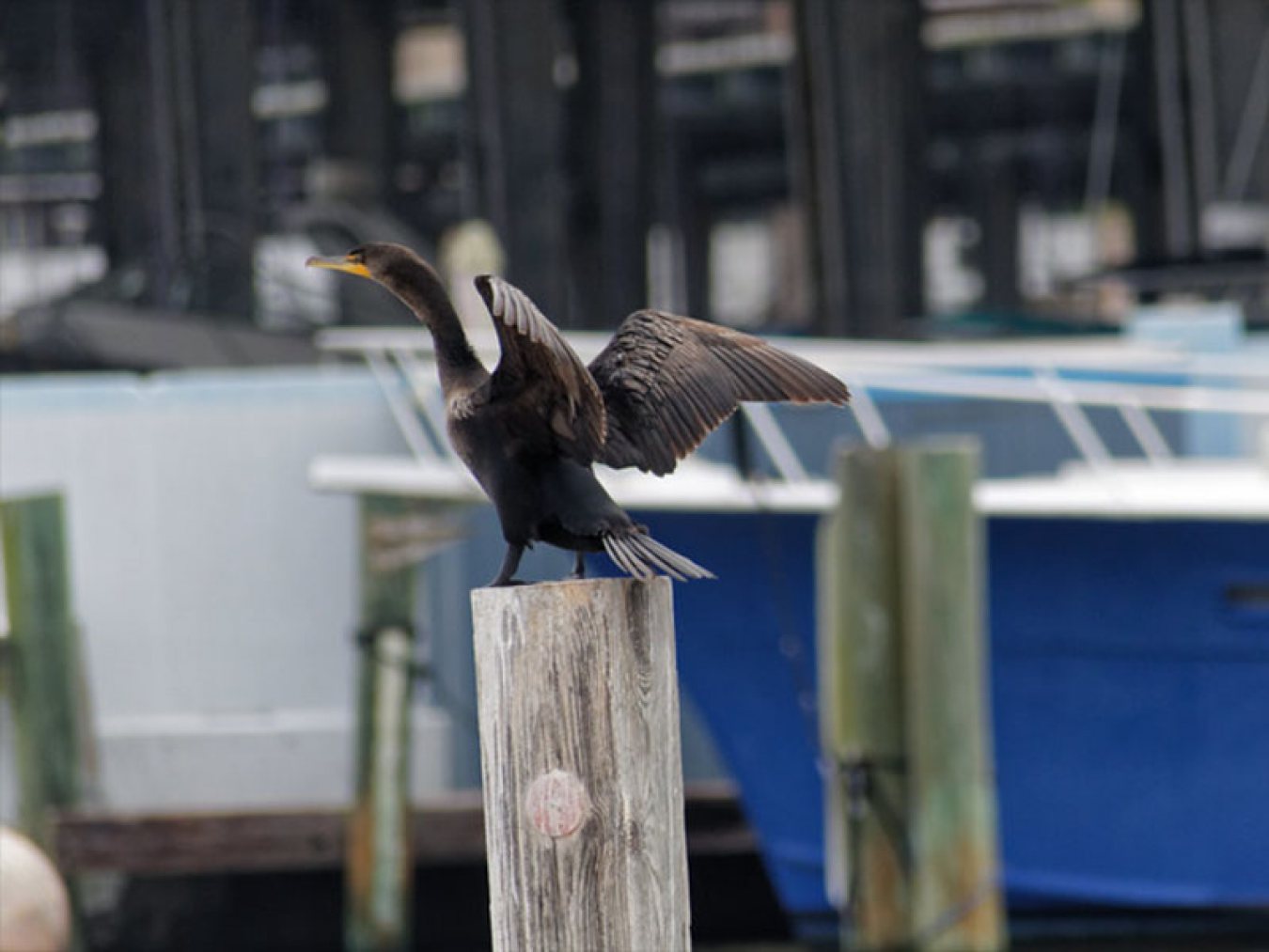
Double-crested Cormorant
A long-bodied dark colored diving bird, the Double-crested Cormorant floats in the water with neck and head above the surface.
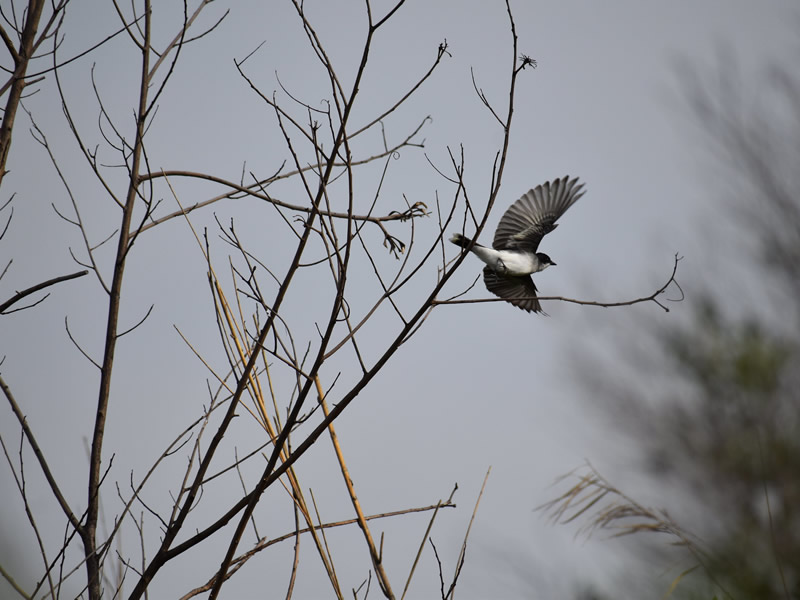
Eastern Kingbird
The Eastern Kingbird is a common medium-sized songbird that is blackish above and white below.
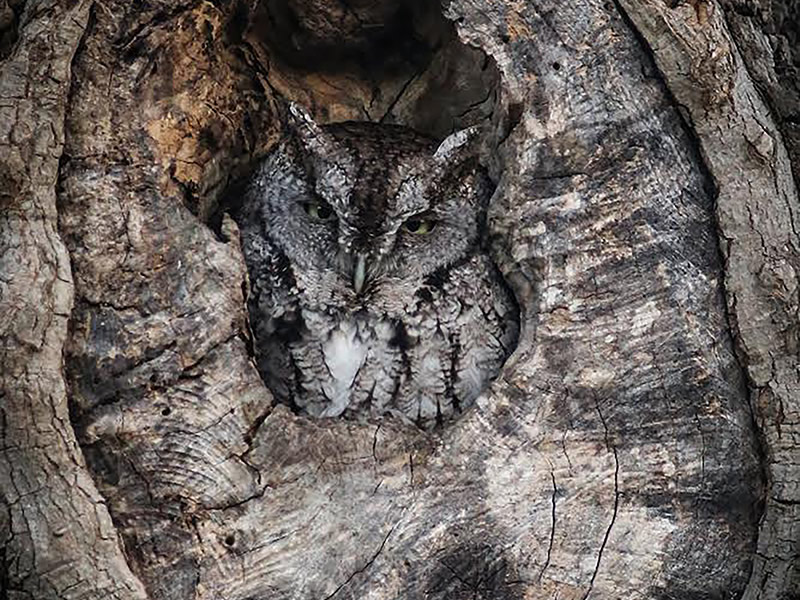
Eastern Screech Owl
A small robin-sized owl, the Eastern Screech Owl roosts during the day in holes or nooks then forages at dusk and night.
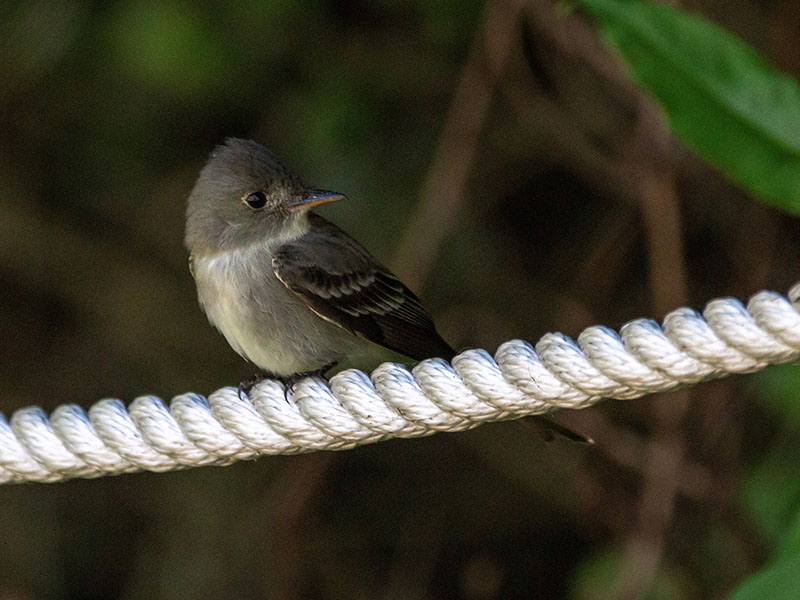
Eastern Wood-Pewee
A small tyrant flycatcher that can be seen on Galveston Island during migration from South America north to South East Canada.
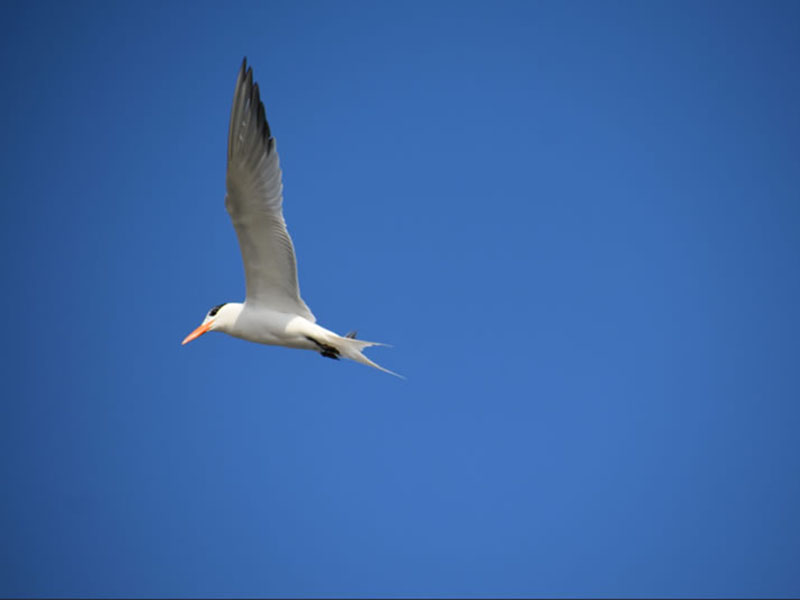
Forster’s Tern
Forster’s Tern look similar to Common Tern but are more of a marsh bird and winter along the southern US coasts.
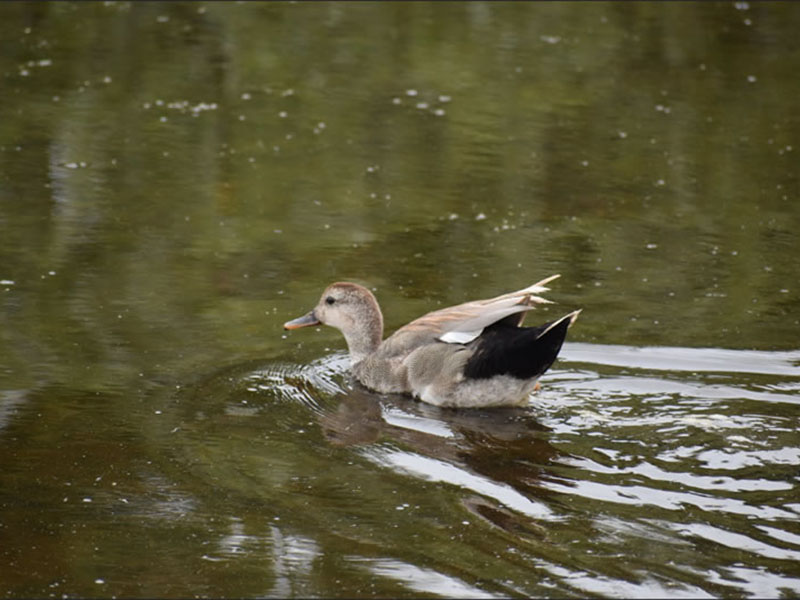
Gadwall
A common dabbling duck about the size of Mallards, the Gadwall forages while swimming, eating from the surface or tipping forward.
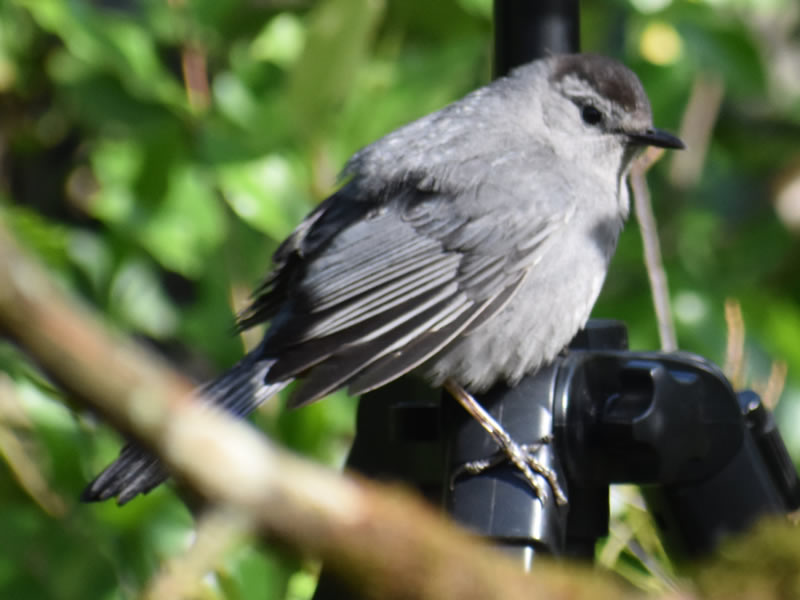
Gray Catbird
The Gray Catbird often hides in shrubs making a variety of sounds, including a catlike mewing.
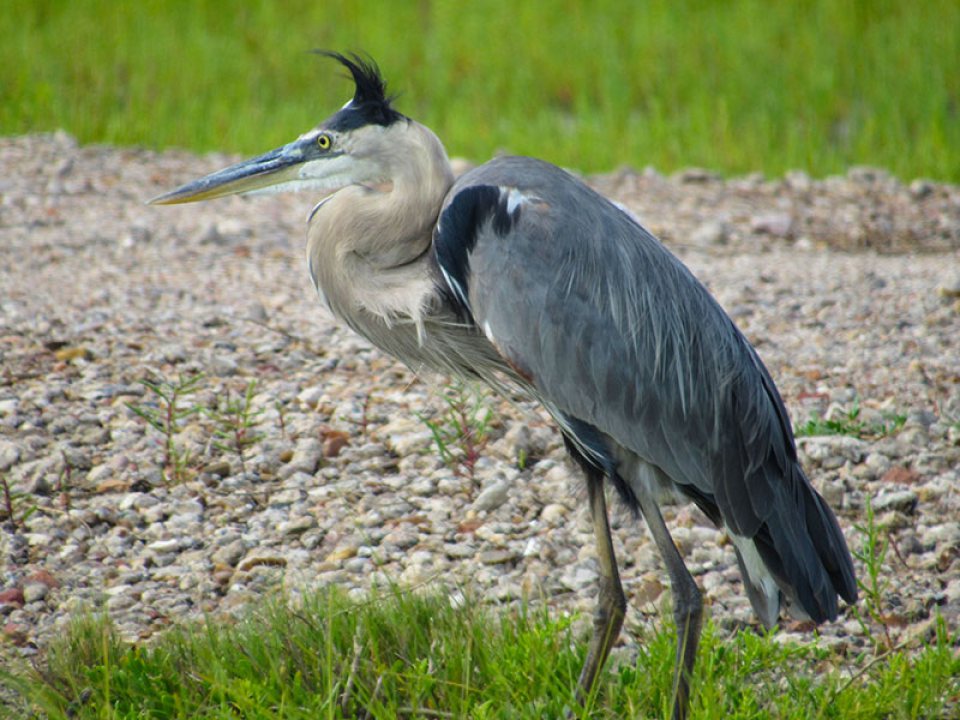
Great Blue Heron
The stately Great Blue Heron, impressive in size alone at 4½ feet tall, adapts to a wide variety of habitats from freshwater or saltwater wetlands to dry fields.
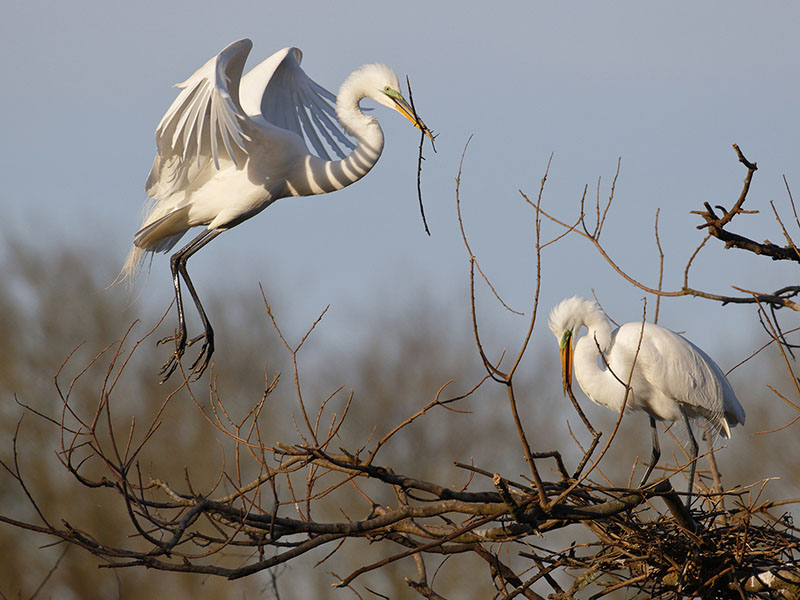
Great Egret
Abundant year-round on the island, The Great Egret is a large heron with all-white plumage, a yellowish-orange bill, black legs, and an S-curved neck.
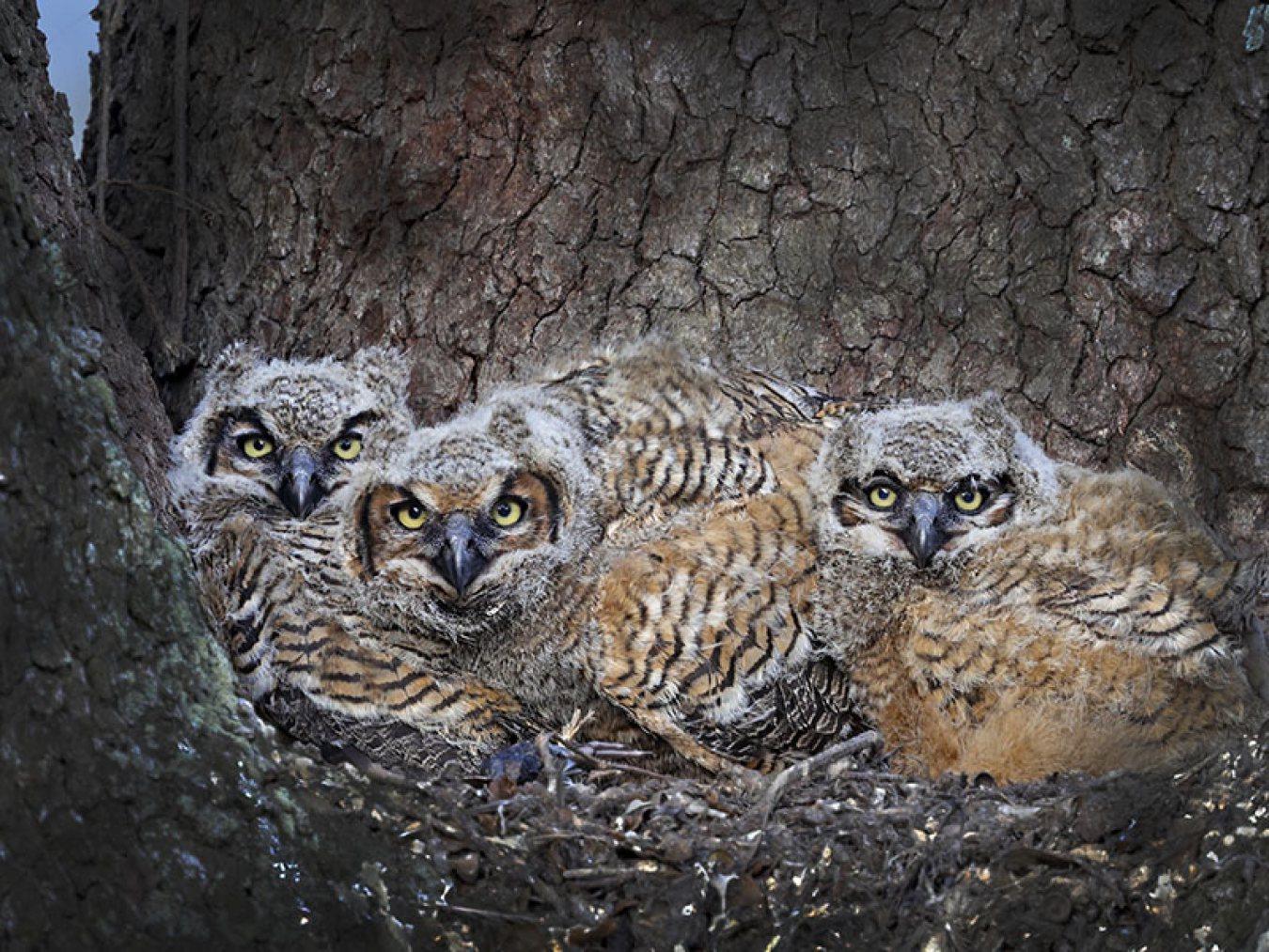
Great Horned Owl
A big owl with feathered tufts, yellow eyes and a deep hoot, the Great Horned Owl is an aggressive and powerful hunter.
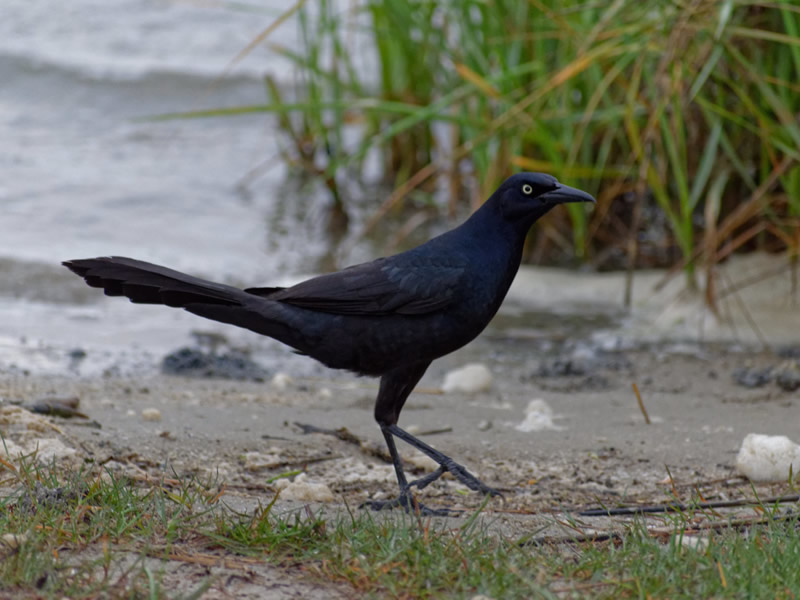
Great-tailed Grackle
The male Great-tailed Grackle has an over sized tail and iridescent black and purple feathers. The female is brown and about half the size of the male.
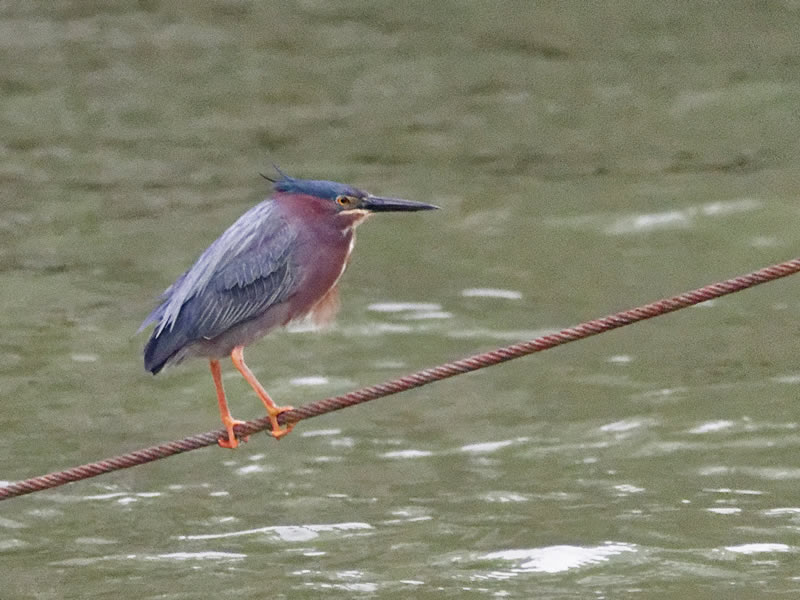
Green Heron
Relative to other herons, Green Herons are short and stocky. It’s neck is often drawn in.
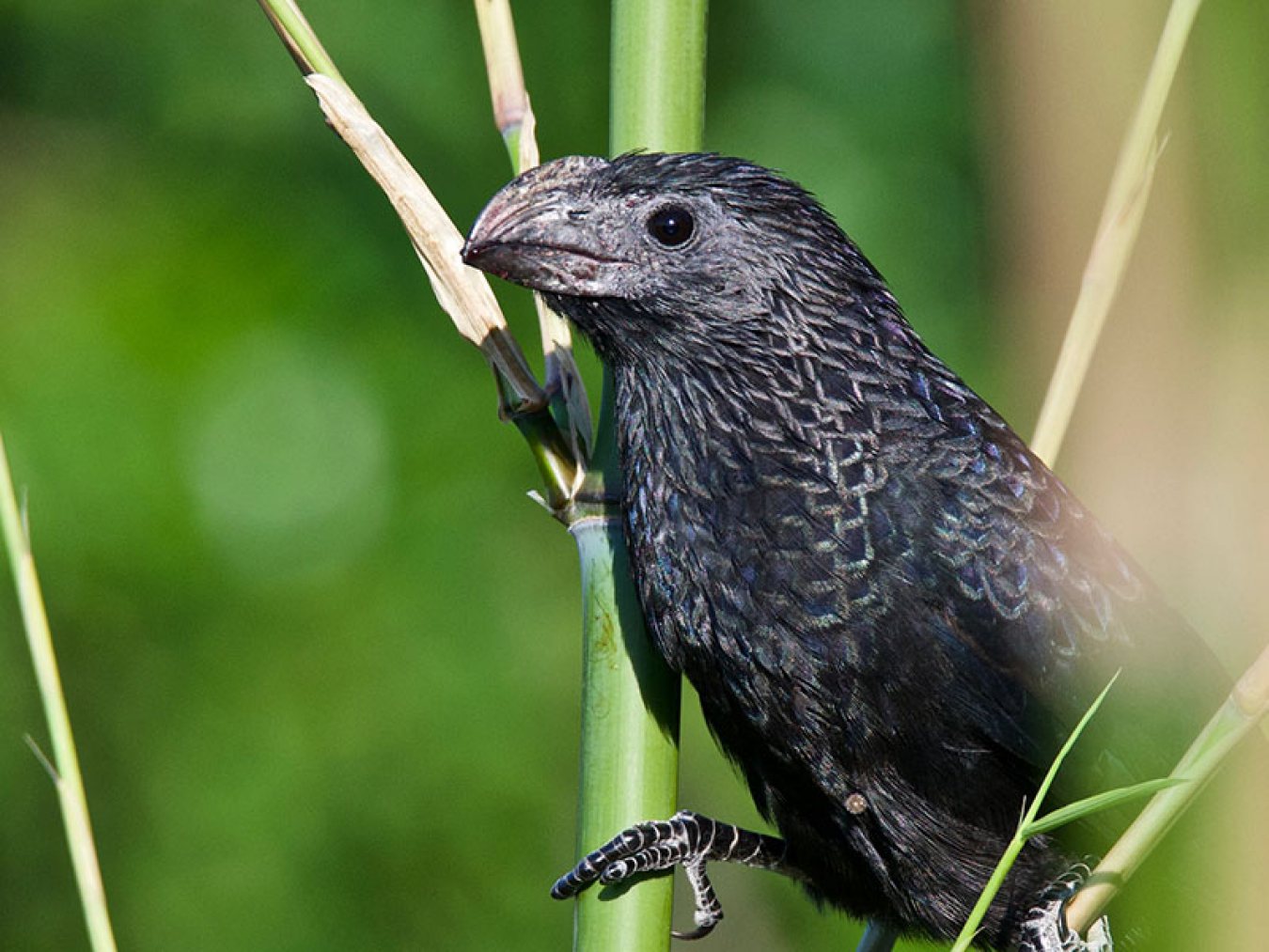
Groove-billed Ani
A scruffy-looking all-black cuckoo, the Groove-billed Ani has a tall flattened bill with narrow grooves.
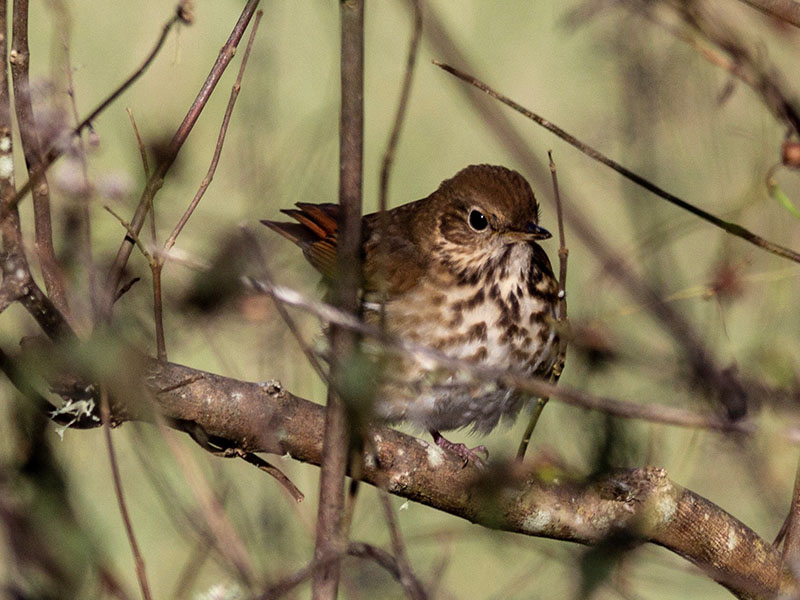
Hermit Thrush
The Hermit Thrush is more compact and stockier than other North American Catharus thrushes, with relatively longer wings.
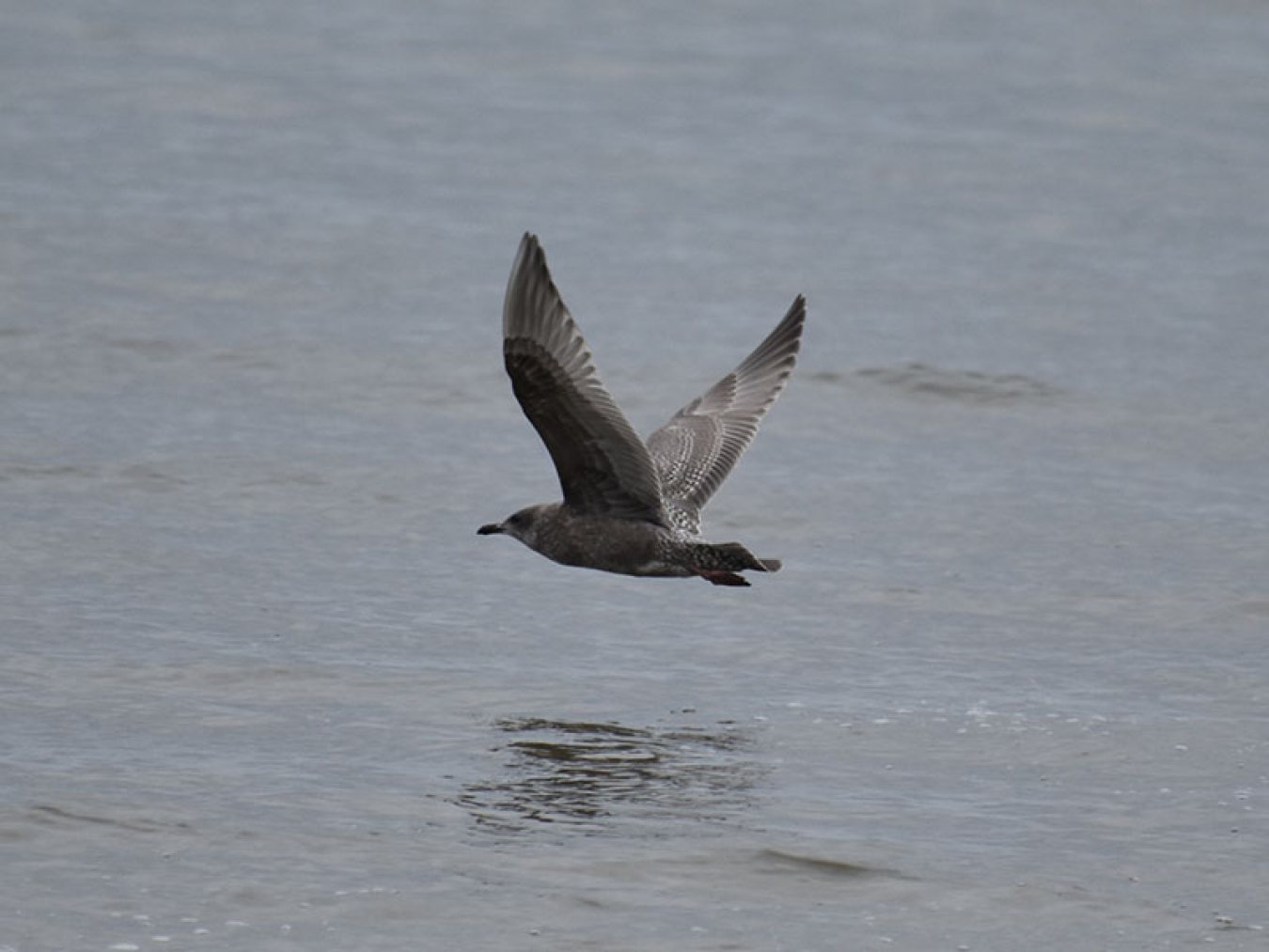
Herring Gull
A large gull with a large bill, Herring Gulls have light-gray backs, black wingtips, and white head with white under.
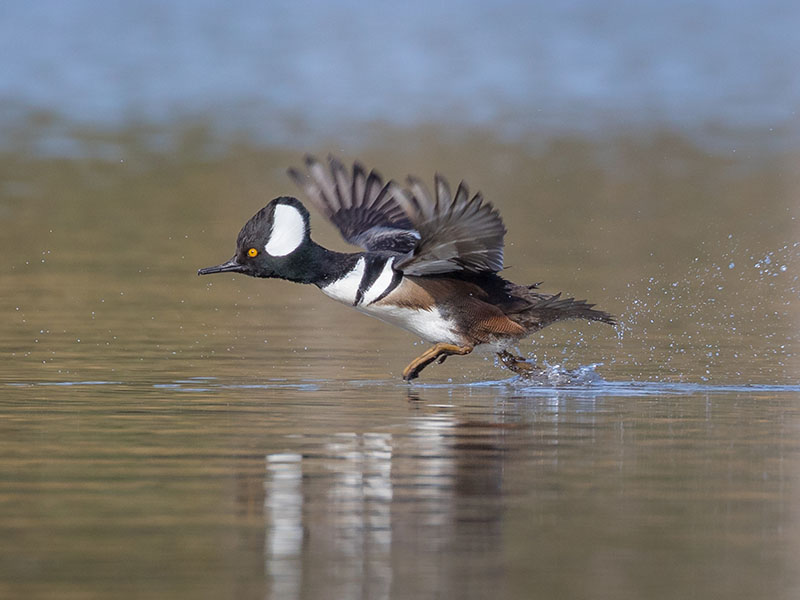
Hooded Merganser
Mergansers specialize in eating fish by diving and swimming underwater. The Hooded Merganser is the smallest of the three native to North America.
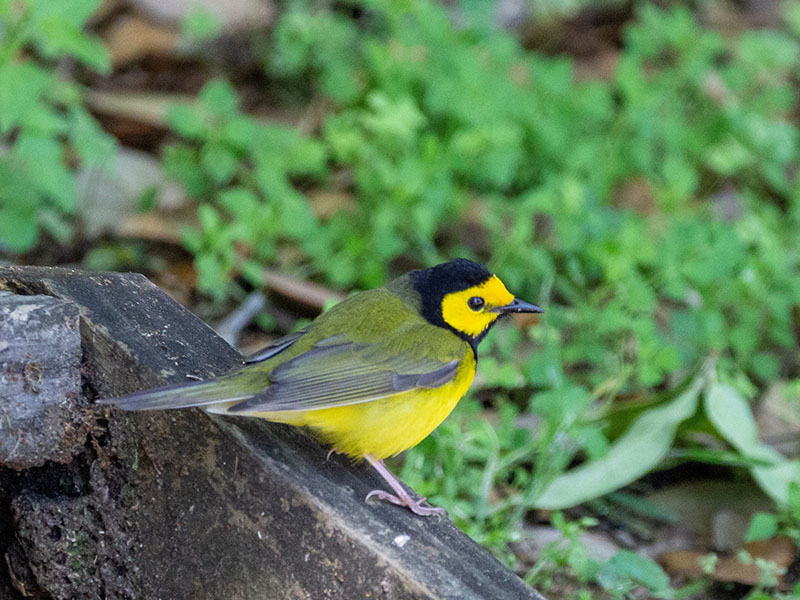
Hooded Warbler
The Hooded Warbler is a mid-sized warbler with a plain olive/green-brown back, and yellow underparts.
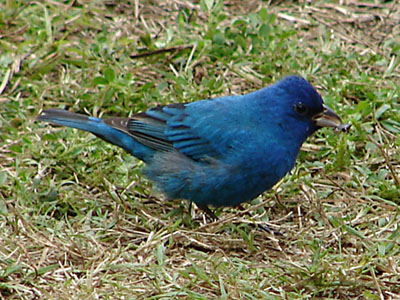
Indigo Bunting
Indigo Buntings are spring migrants to the island, traveling in small flocks and foraging for seeds on the ground.
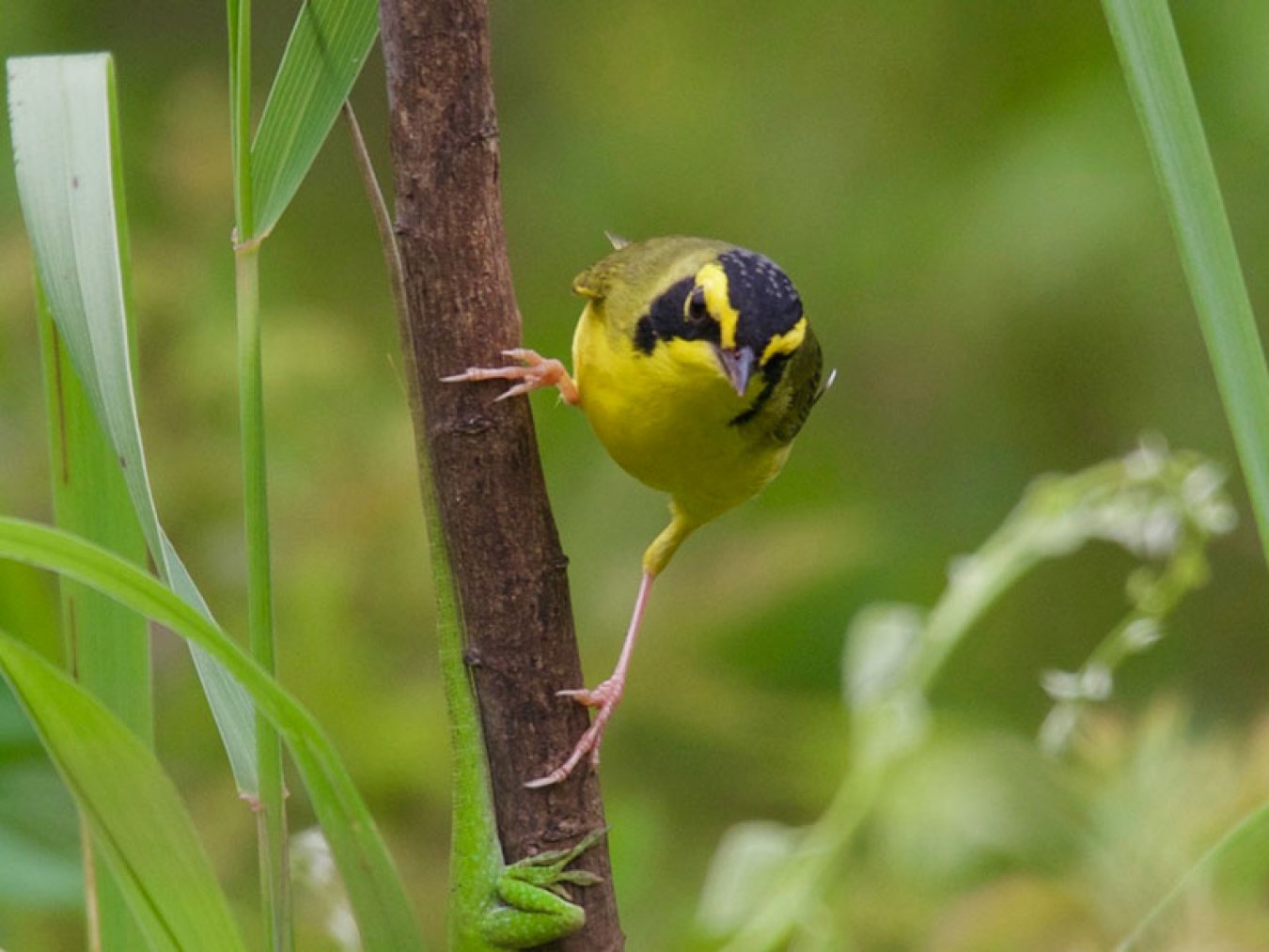
Kentucky Warbler
A medium-sized warbler with long legs, the Kentucky Warbler is yellow below with olive-green above with “sideburns” and crown.
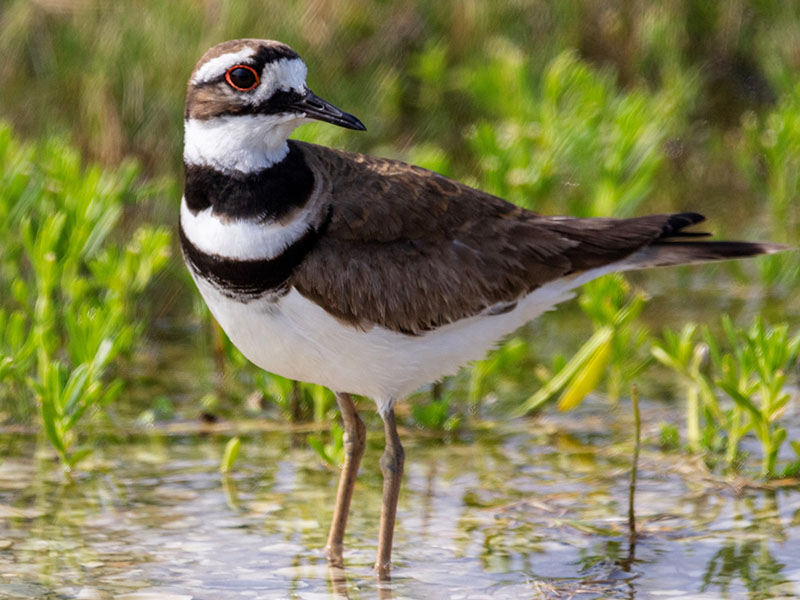
Killdeer
The Killdeer is a large plover found in the Americas. It’s common name comes from its often-heard call.
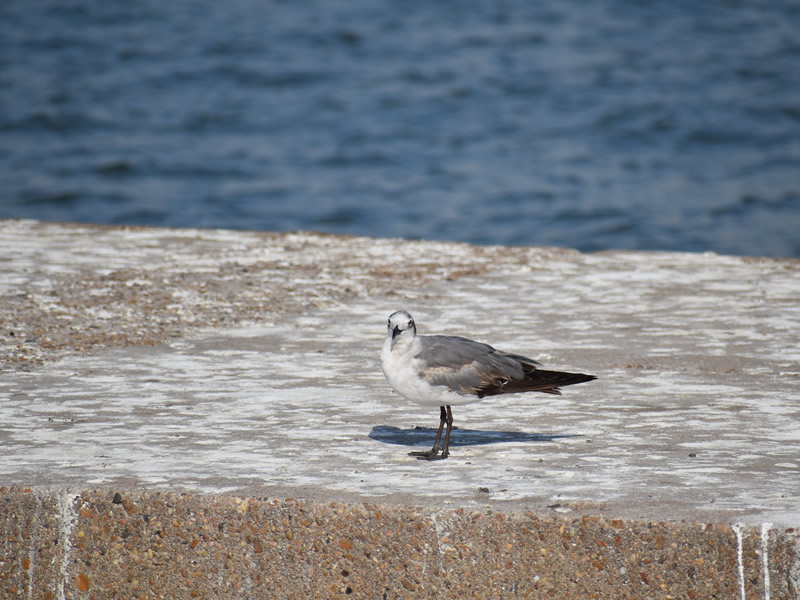
Laughing Gull
A medium-sized gull with fairly long wings and long legs, the Laughing Gull is gray above, white below, and has a black hood.
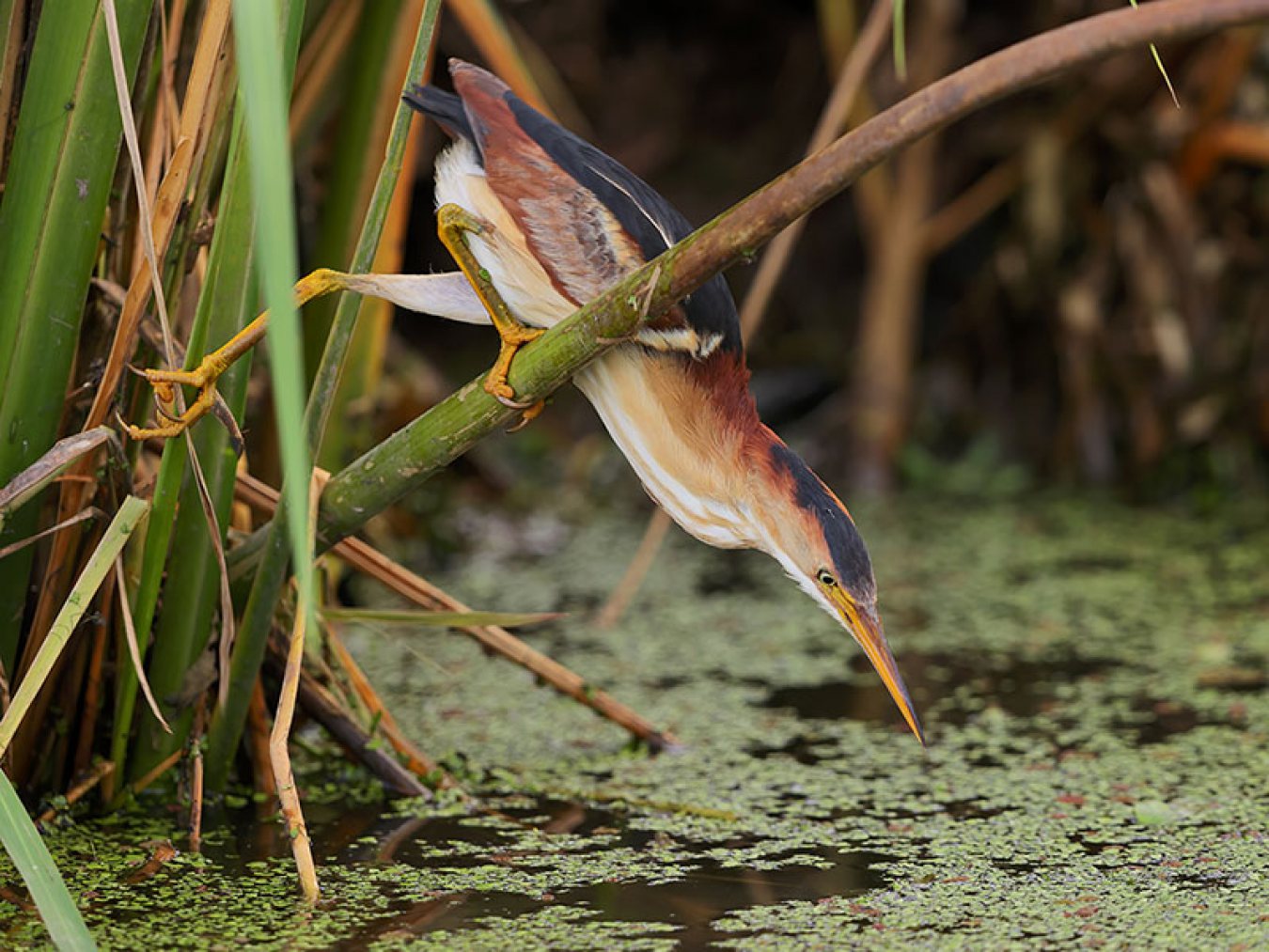
Least Bittern
The Least Bittern has adapted to marsh life, easily navigating through cattails and reeds
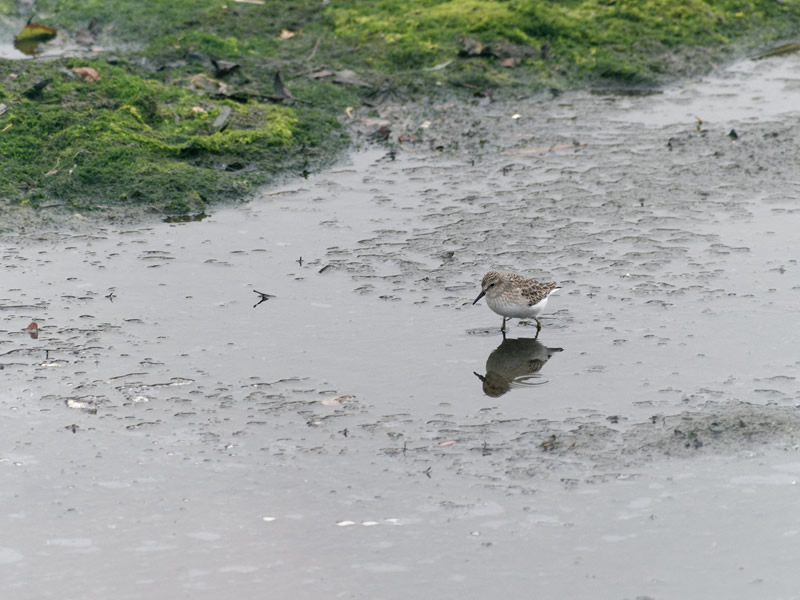
Least Sandpiper
The Least Sandpiper is the smallest member of the sandpiper family. It walks slowly foraging for tiny crustaceans, insects and snails in mud and sand.
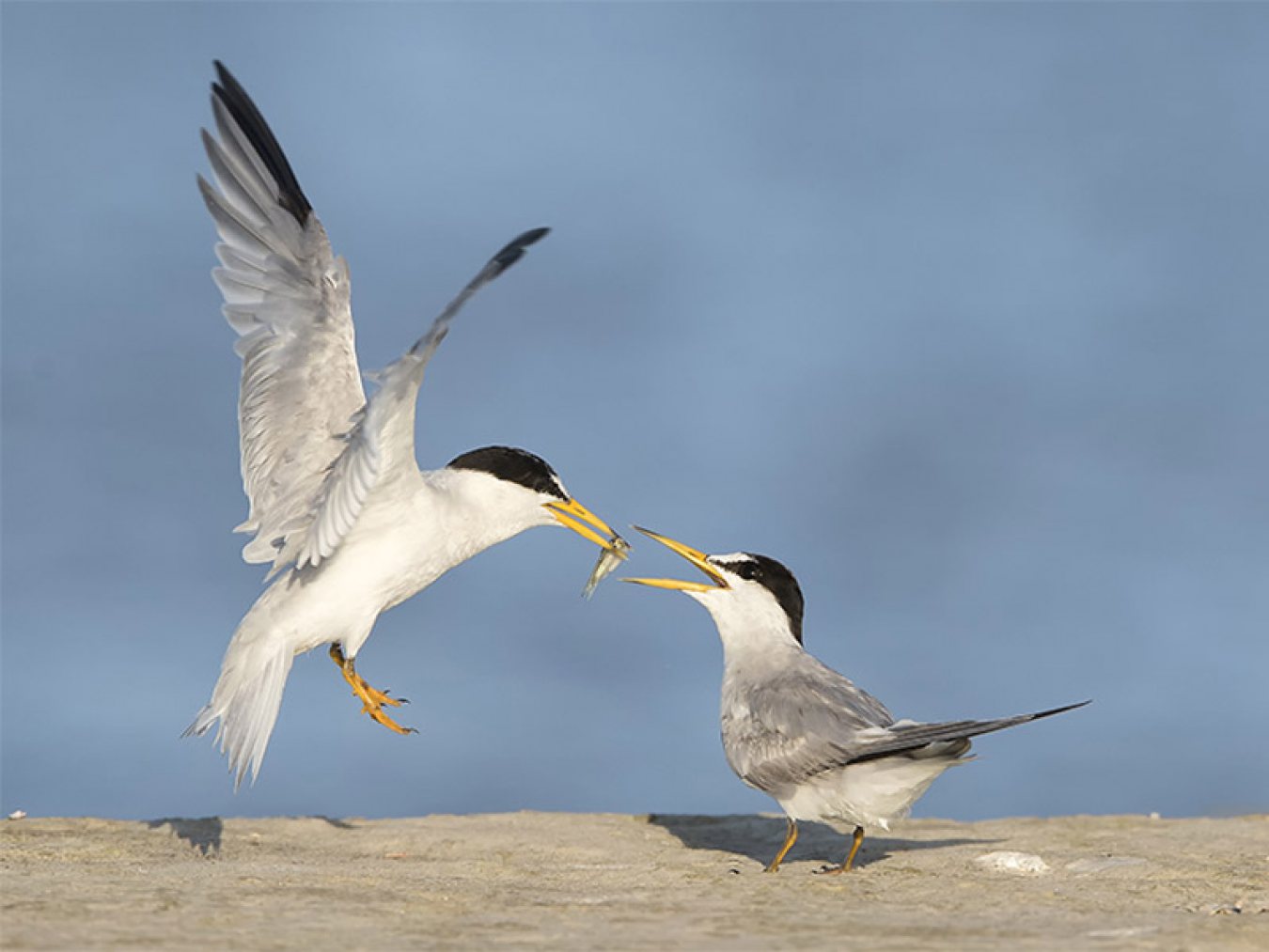
Least Tern
It’s the smallest of the North American terns with a thin yellow bill and small narrow pointed wings.
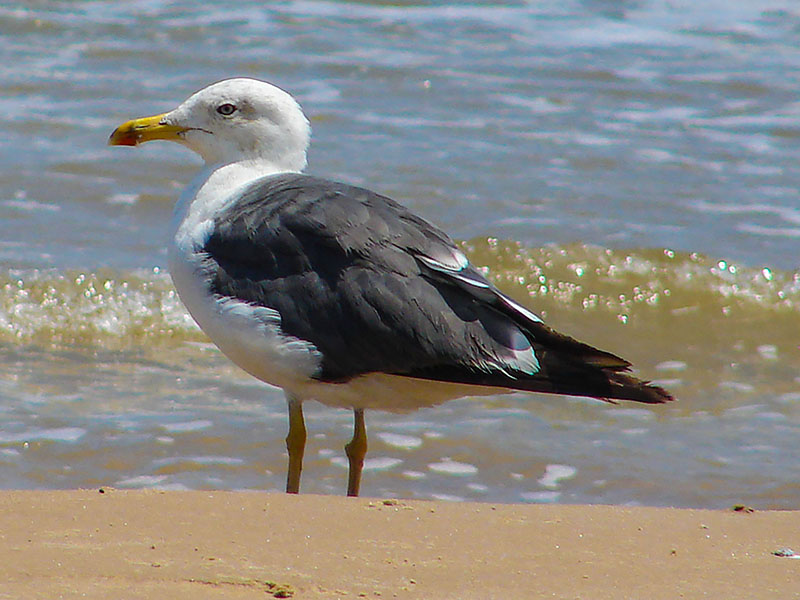
Lesser Black-backed Gull
The Lesser Black-backed Gull is a European gull that winters on Galveston Island, probably migrating from Iceland or Greenland.
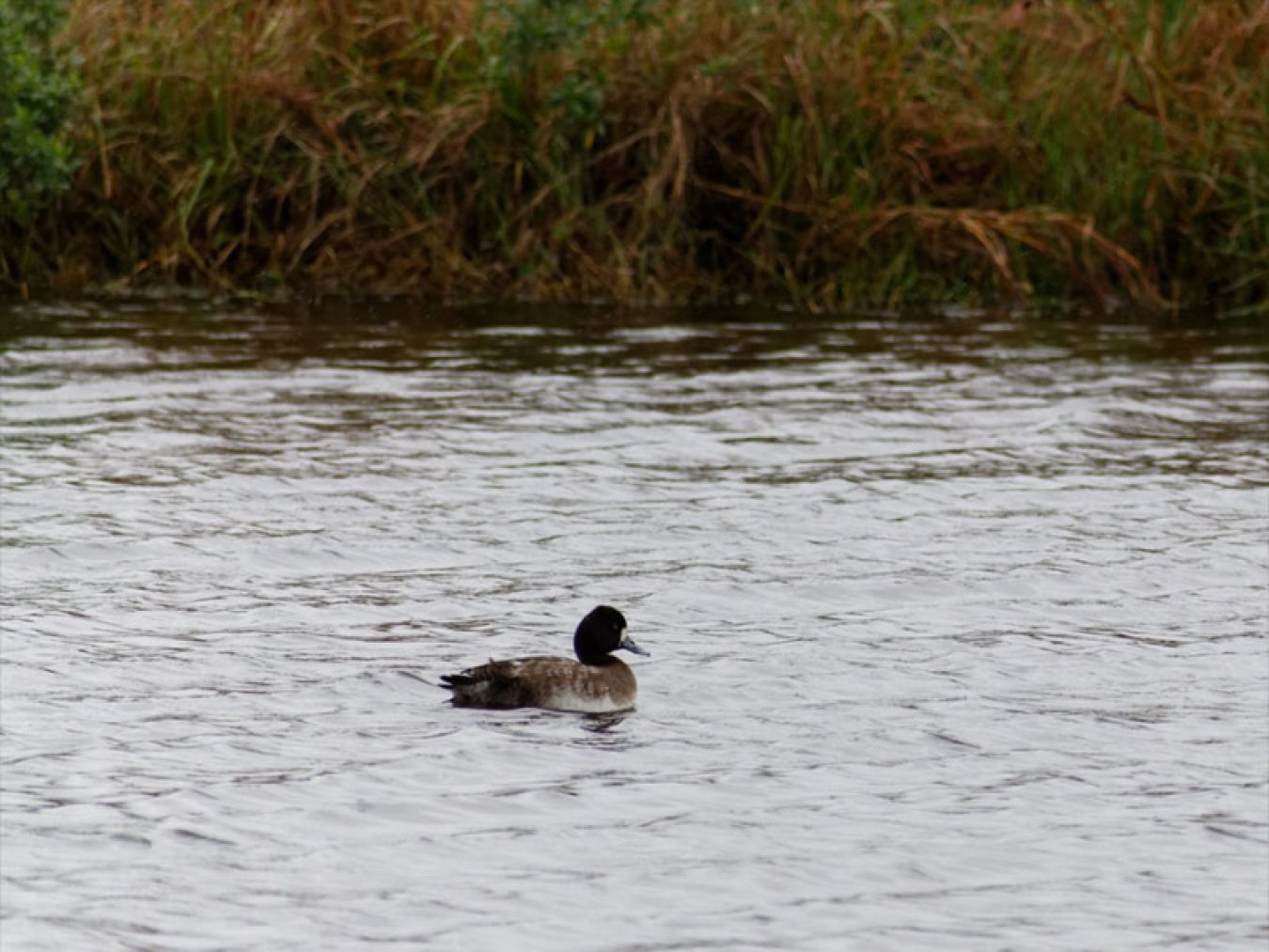
Lesser Scaup
A medium-sized diving duck, the Lesser Scaup has a tall peaked head – the male’s being glossy black and female’s brown.

Lesser Yellowlegs
A grayish brown bird with yellow legs, the Lesser Yellowleg breeds in Northern Canada and Alaska and can be found in Galveston during the winter.
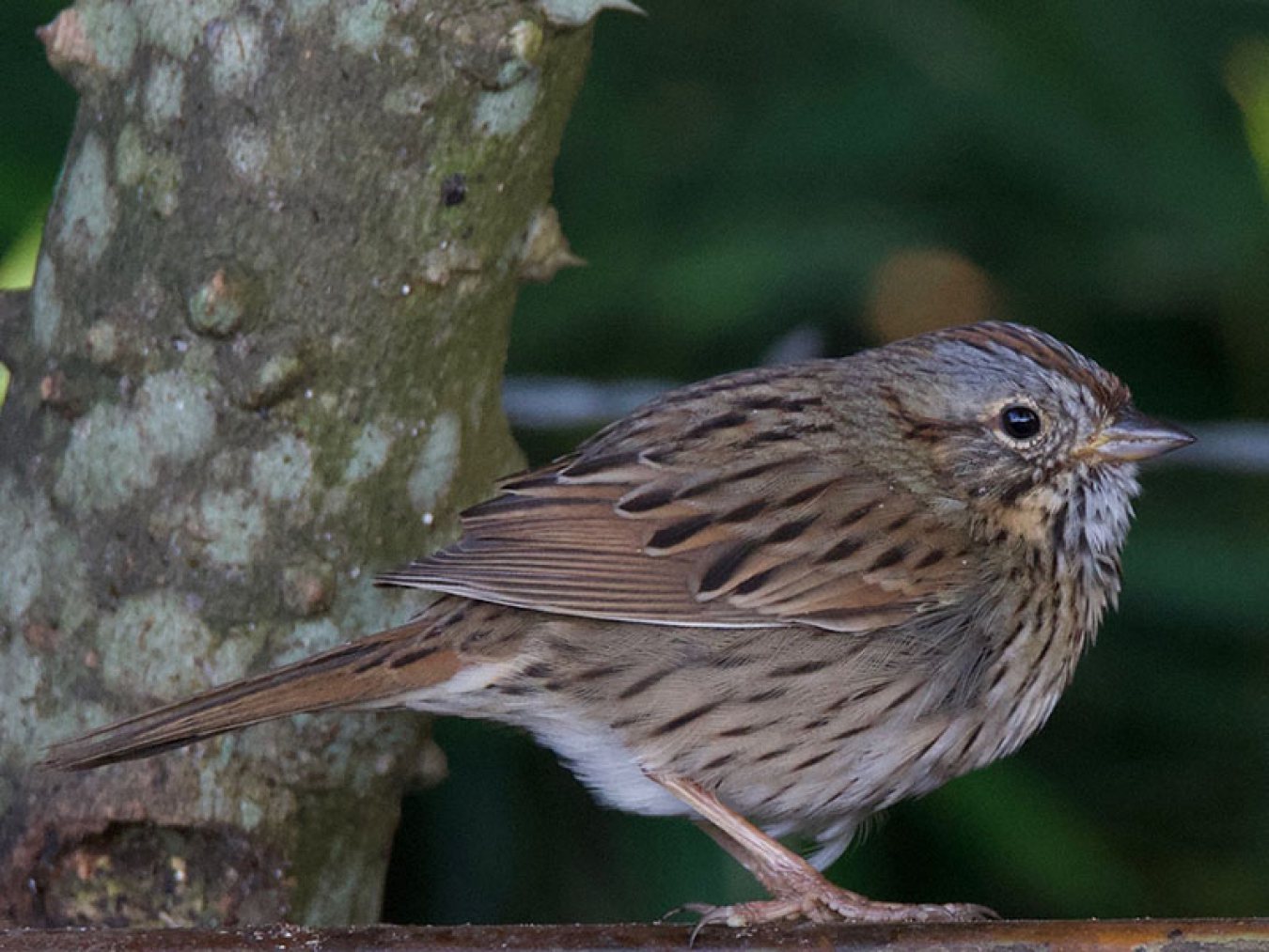
Lincoln’s Sparrow
A medium-sized sparrow, the Lincoln’s Sparrow has distinctive dark streaks and white belly.
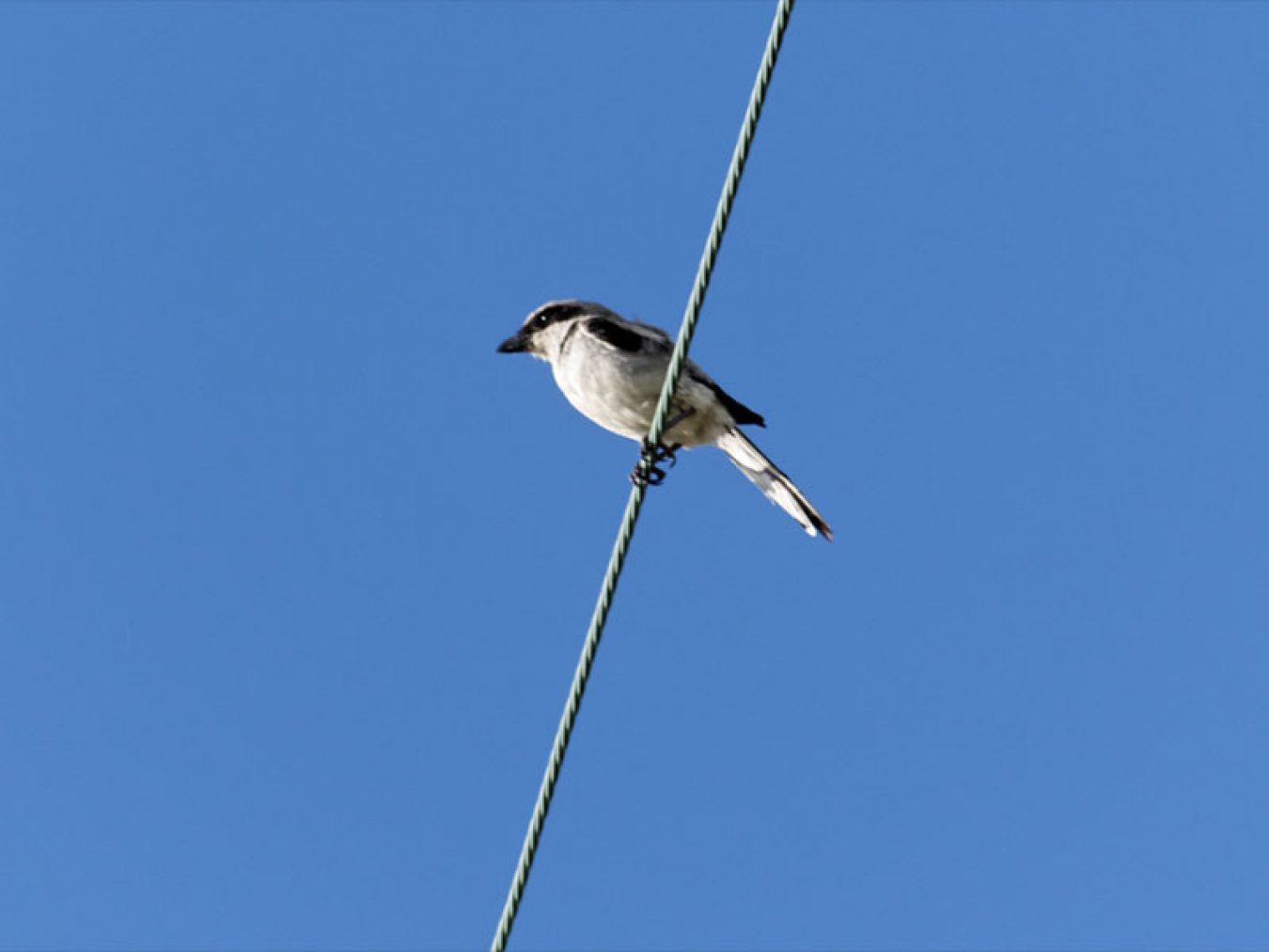
Loggerhead Shrike
A thick-bodied songbird with a big head, long tail, and a thick, hooked bill, the Loggerhead Shrike perches scanning for prey.
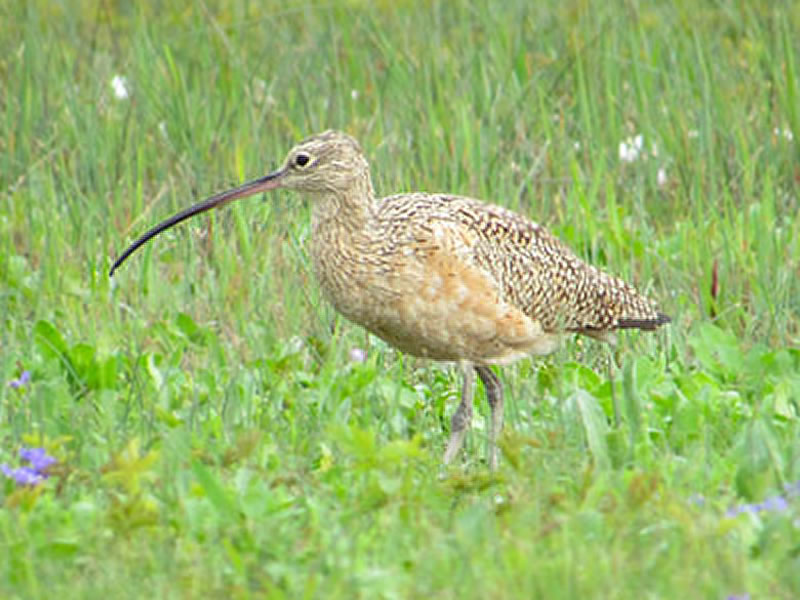
Long-billed Curlew
This large shorebird has an incredibly long, curved bill that it uses to probe deep into the ground for invertebrates.
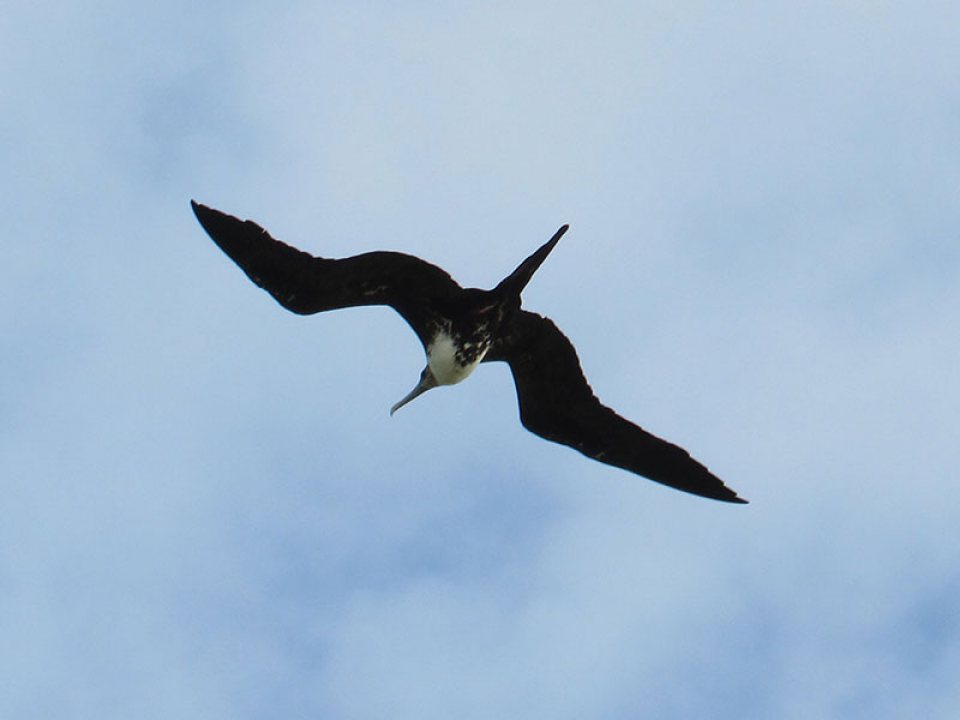
Magnificent Frigatebird
Frigatebirds are amazing aerialists, staying on the wing for weeks at a time, rarely needing to flap and steering with their tails.
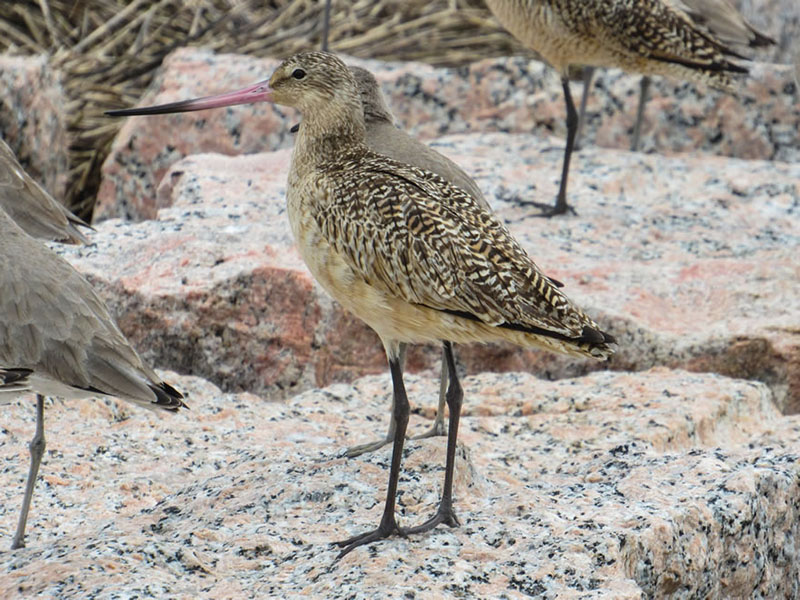
Marbled Godwit
This big sandpiper spends the summer in the northern Great Plains and arrives on Galveston Island late summer.
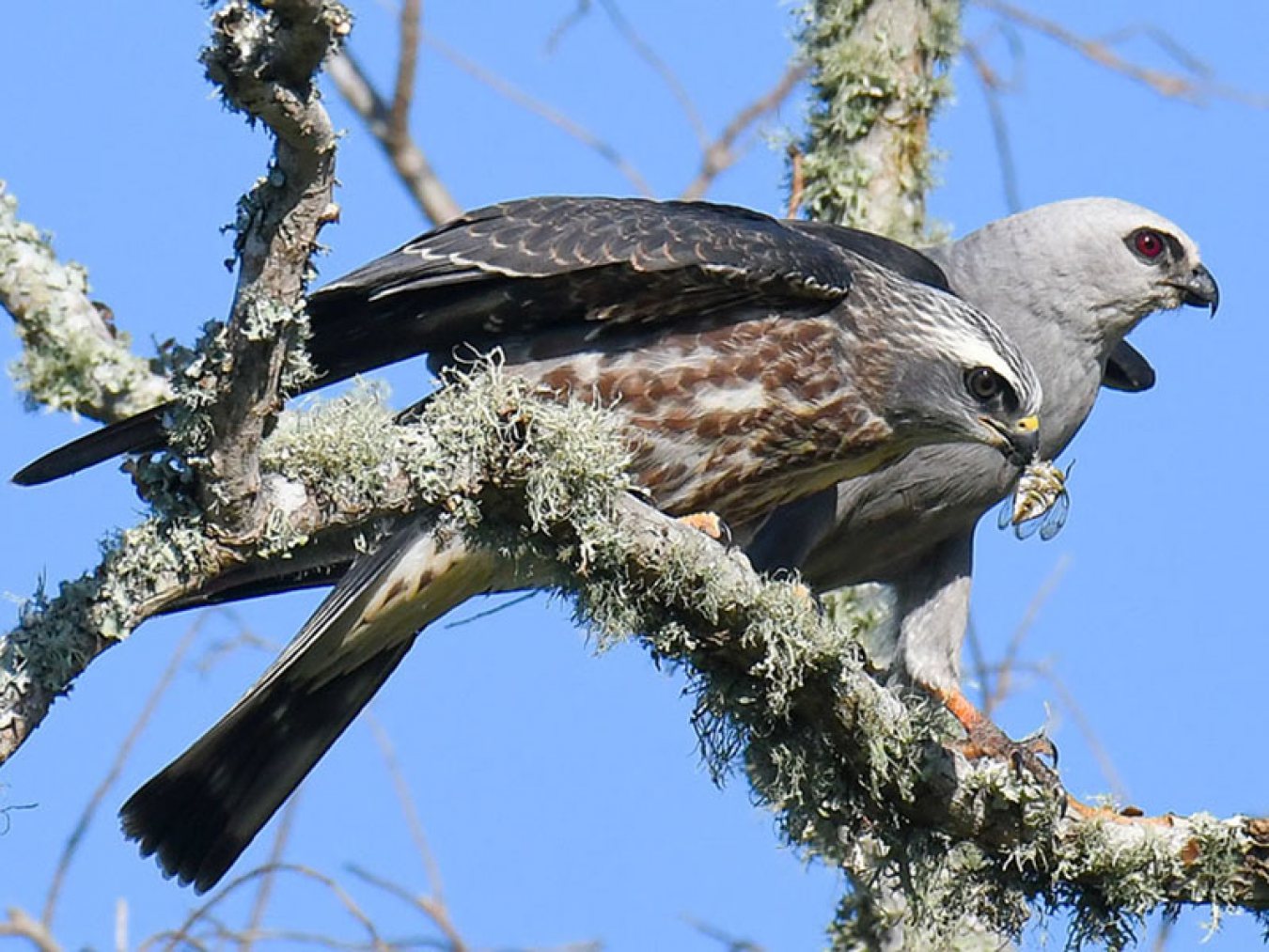
Mississippi Kite
The Mississippi Kite is a small slender raptor that spends much of its time gracefully gliding in circles looking for insects to swoop on.
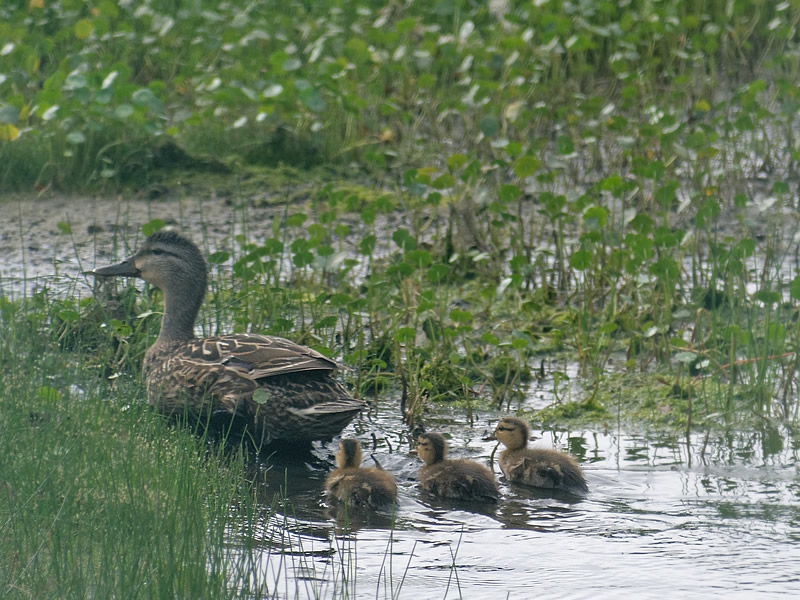
Mottled Duck
Similar in size and a close cousin to the Mallard, the Mottled Duck feeds at the surface or tips over for submerged vegetation.
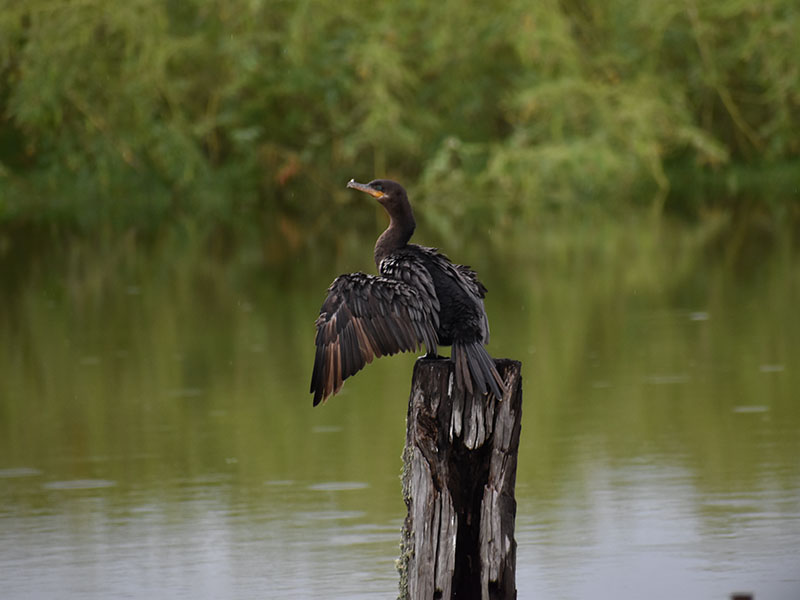
Neotropic Cormorant
A nearly all-black lanky diving waterbird, the Neotropic Cormorant forages by diving from the surface and swimming underwater.
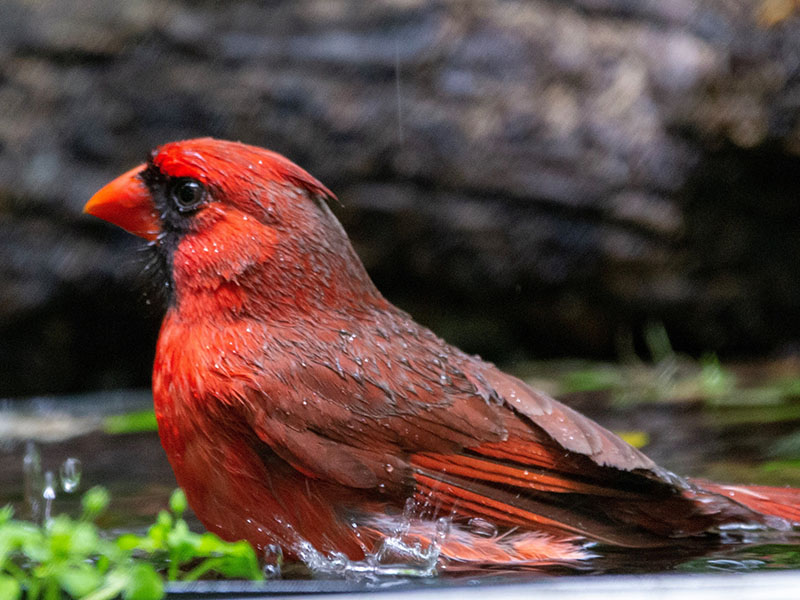
Northern Cardinal
The Northern Cardinal is a mid-sized songbird with a distinctive crest on the head and a mask on the face which is black in the male and gray in the female.
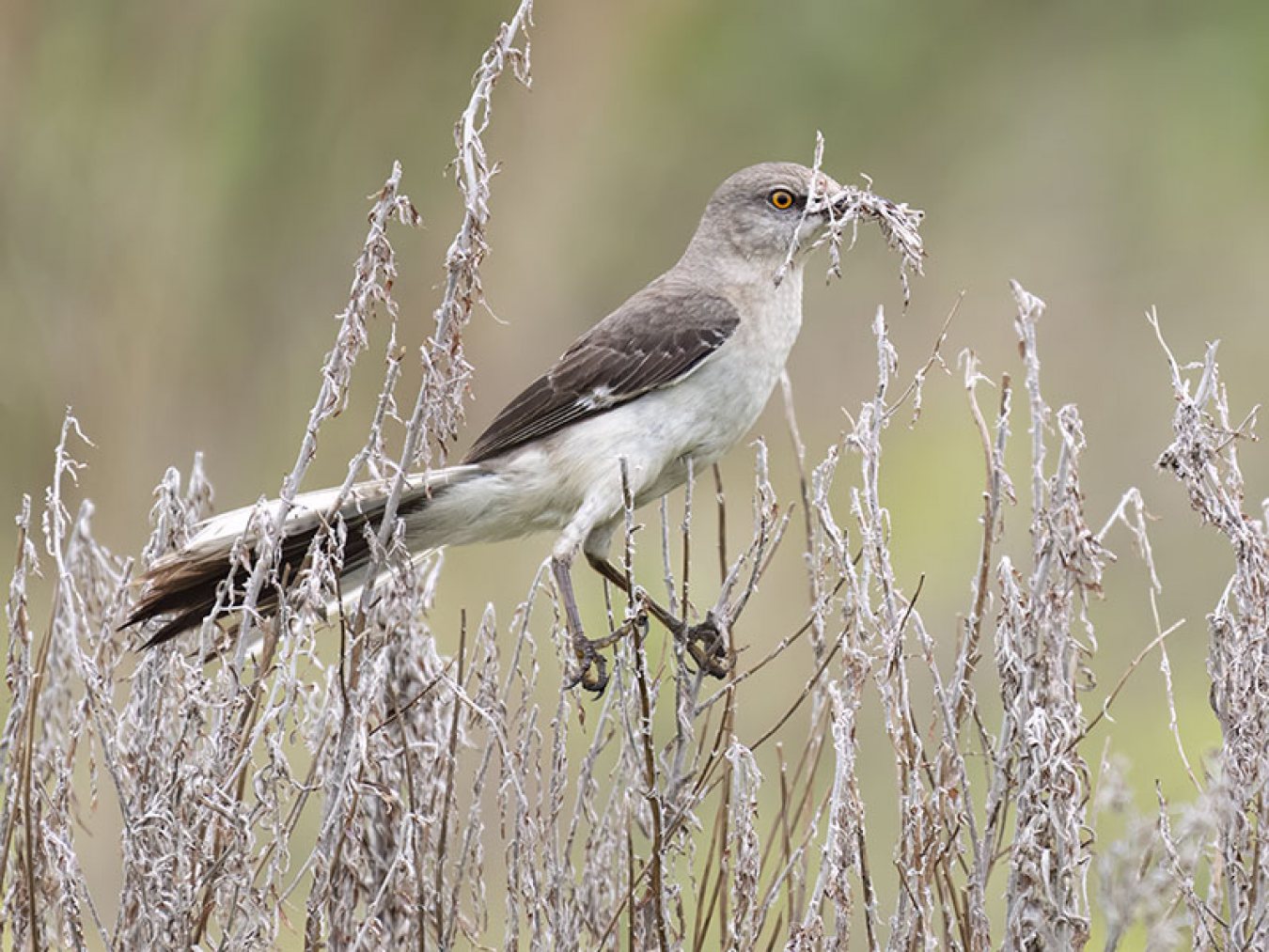
Northern Mockingbird
The state bird of Texas, the Northern Mockingbird sings all day and in to the night with a variety of songs imitating other birds.
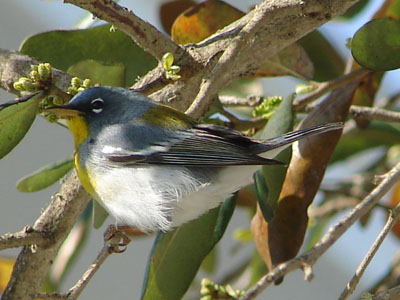
Northern Parula
The Northern Parula is one of the smaller North American migratory warblers. They winter in northern Central America and migrate through Galveston in the spring.
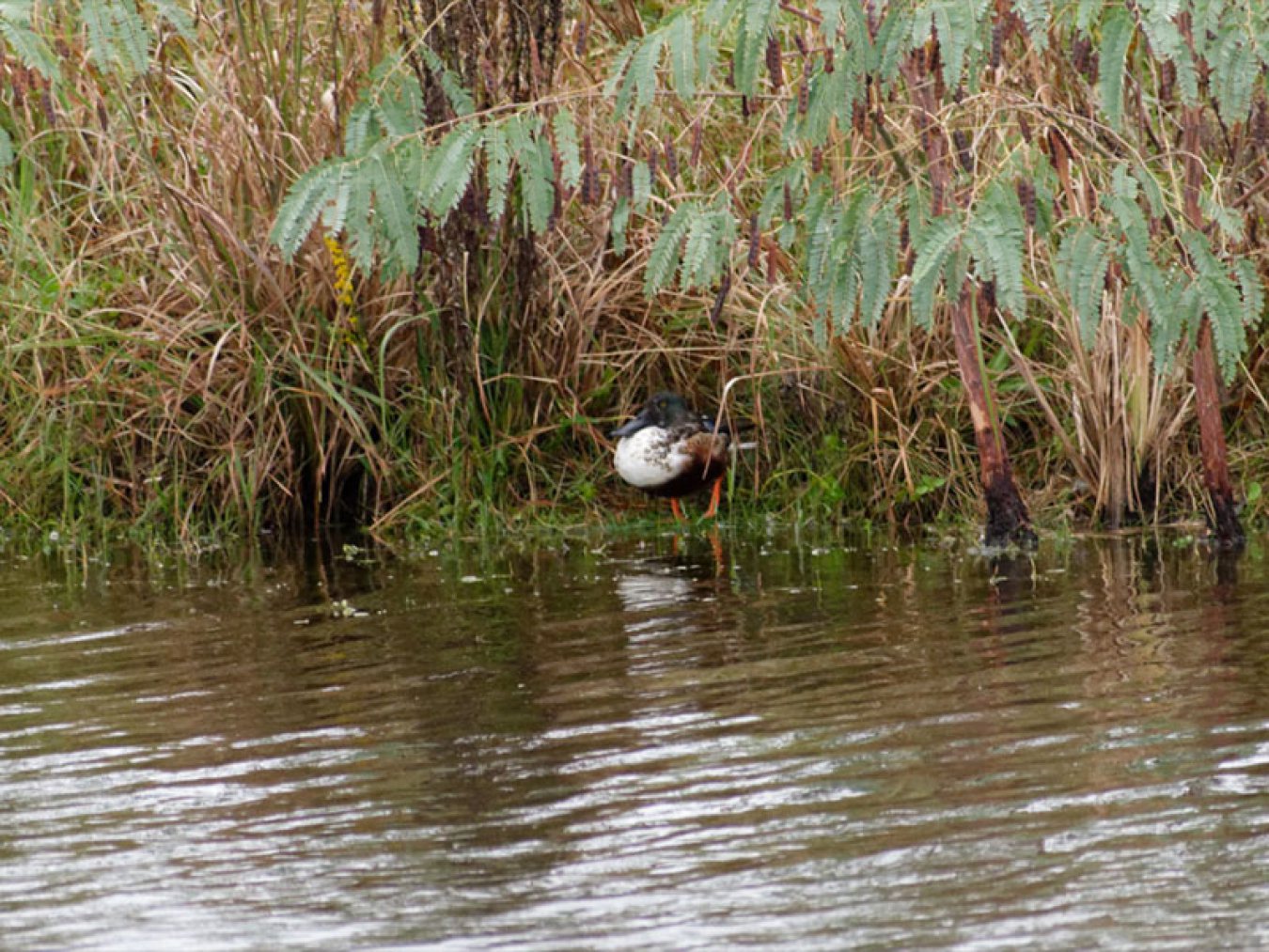
Northern Shoveler
A dabbling duck, the Northern Spoveler sweeps its big spatulate bill side to side to strain food while swimming.
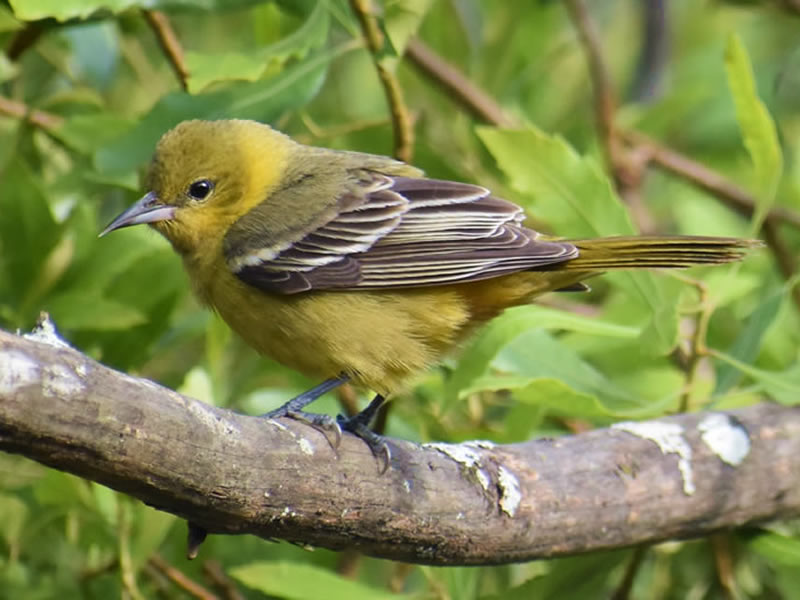
Orchard Oriole
Smaller than the Baltimore Oriole, the Orchard Oriole is a slim songbird with a sharply pointed tail.
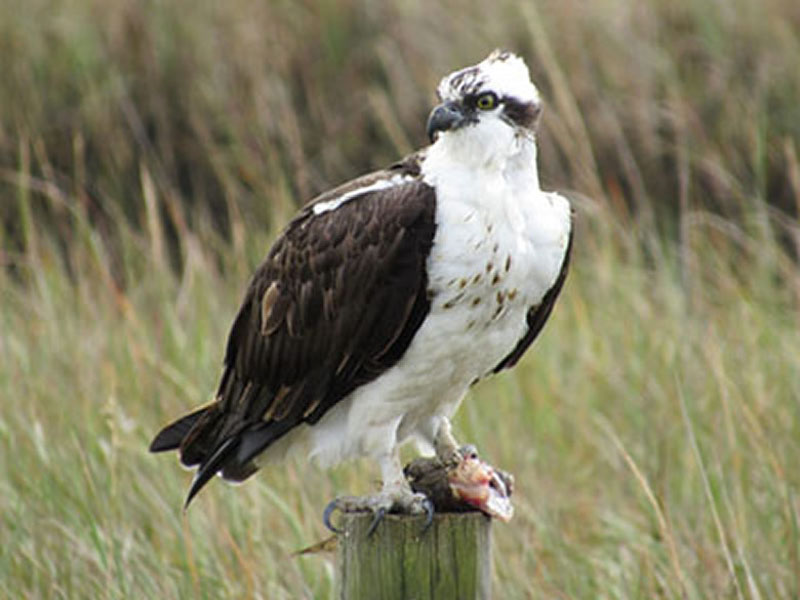
Osprey
Formerly known as Fish Hawks, Ospreys feed almost exclusively on live fish, which they catch by diving towards the water feet first.
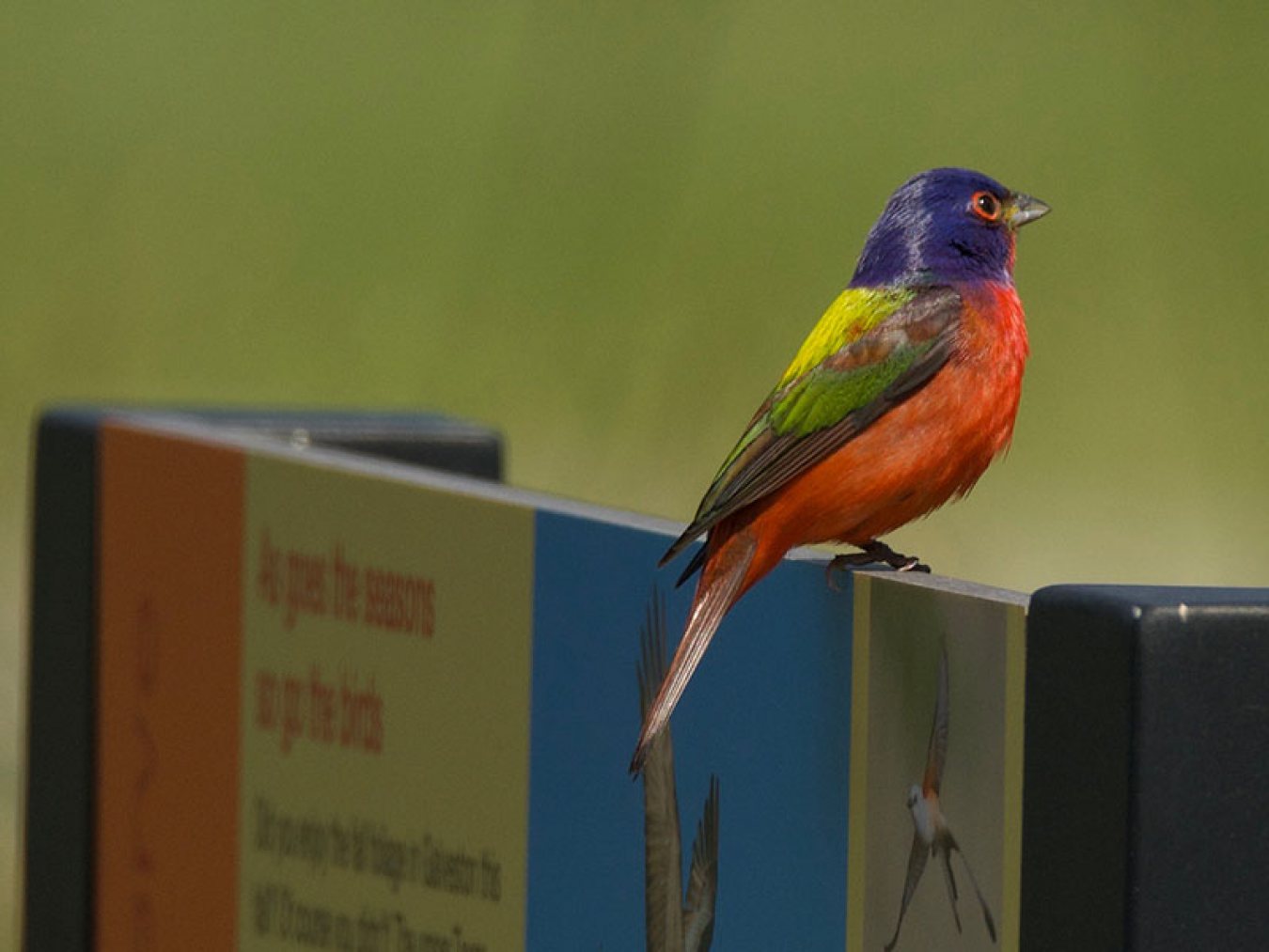
Painted Bunting
In the cardinal family of birds, the shy and secretive Painted Bunting is often described as the most beautiful bird in North America.
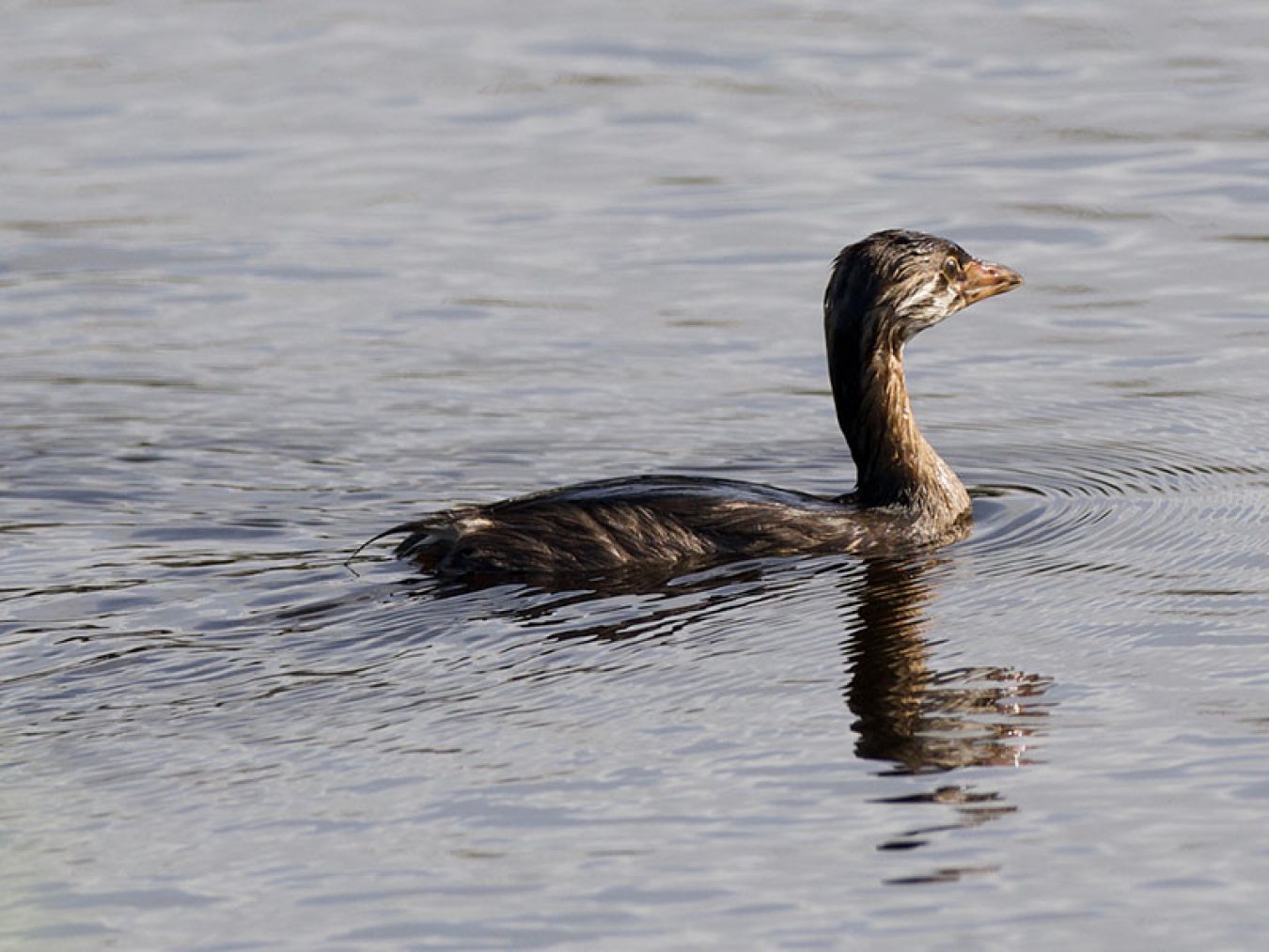
Pied-billed Grebe
A small, chunky waterbird, the Pied-billed Grebe can be found in ponds on Galveston’s west-end.
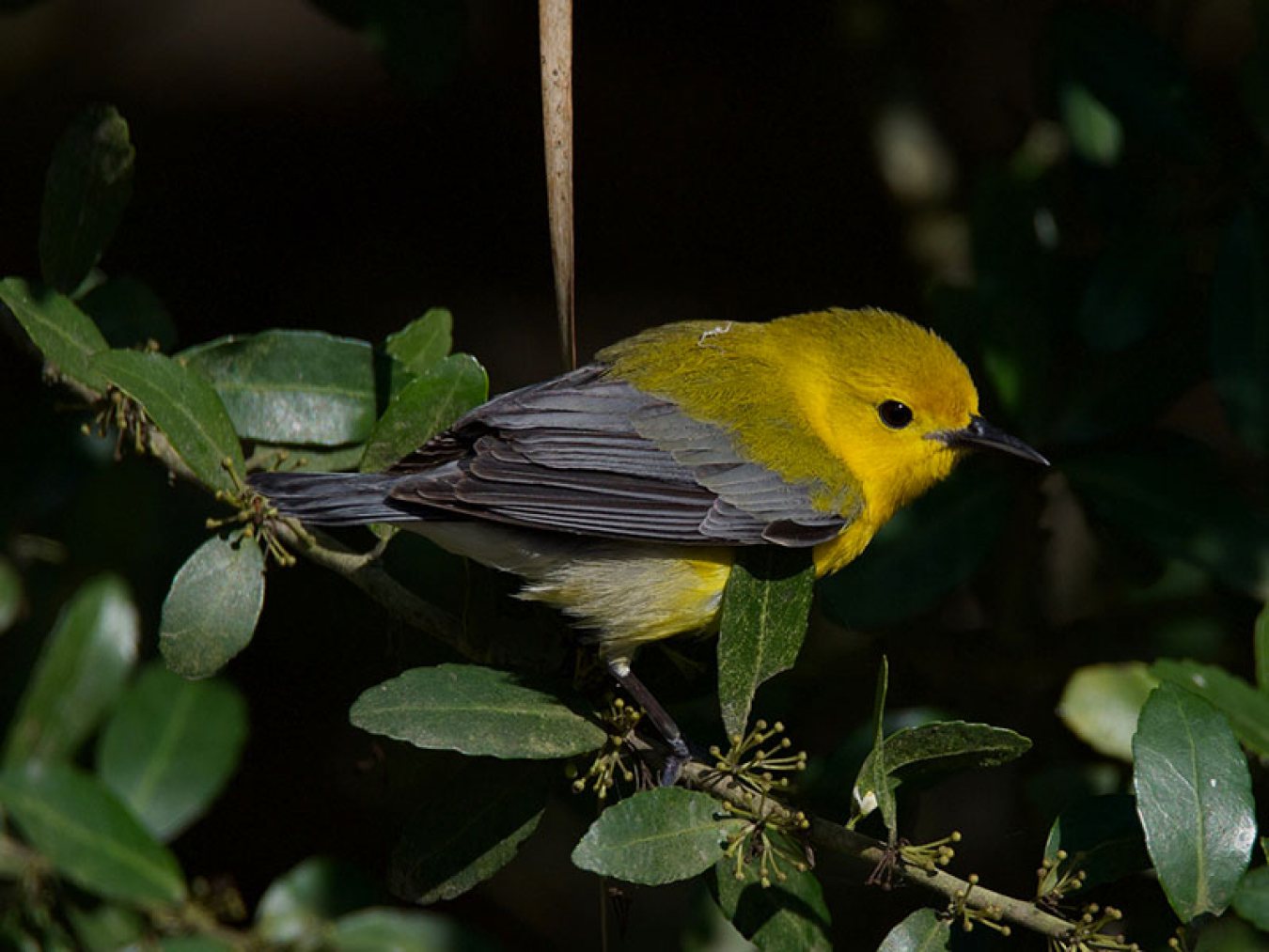
Prothonotary Warbler
A large, heavy-bodied warbler, the Prothonotary Warbler is yellow with olive-black and gray wings with white under the tail.
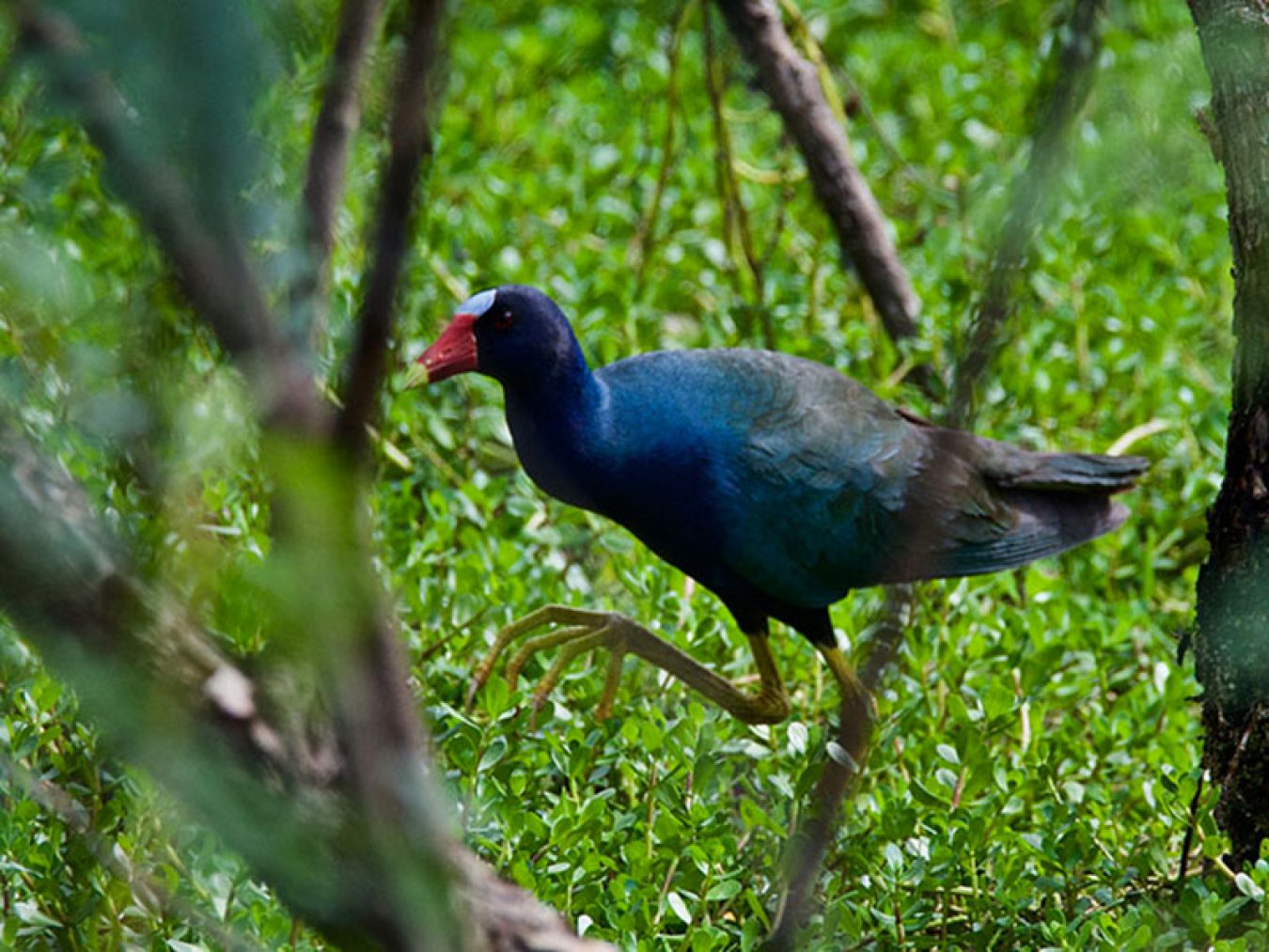
Purple Gallinule
This distinct looking medium-sized marsh bird, the Purple Gallinule has a purplish head and body with greenish wings and back.
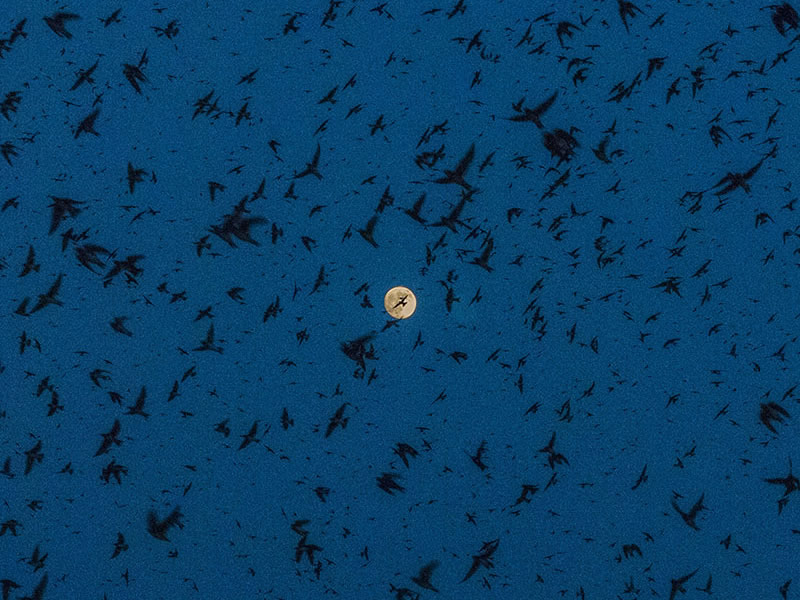
Purple Martin
The largest North American swallow, the Purple Martin gracefully flies while foraging for flying insects.
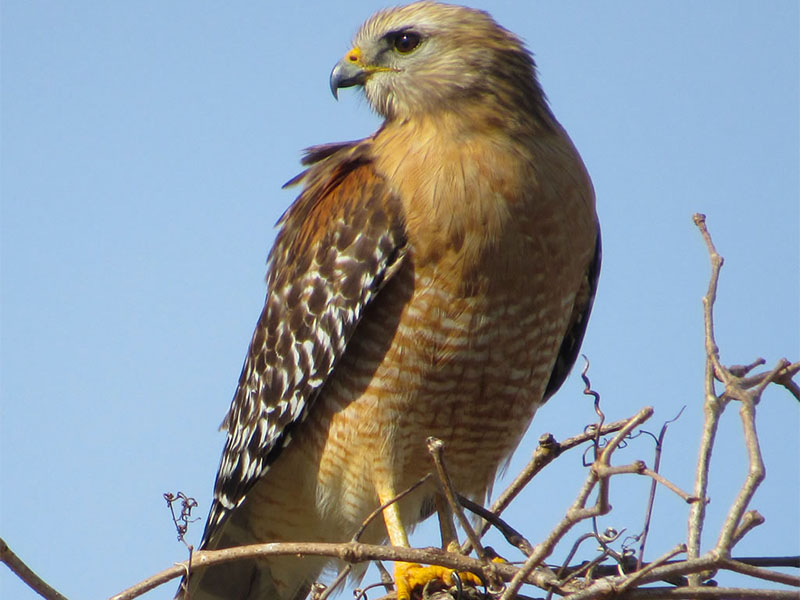
Red-shouldered Hawk
A medium-sized raptor with a robust body and broad wings. Some are year round residents of the island.
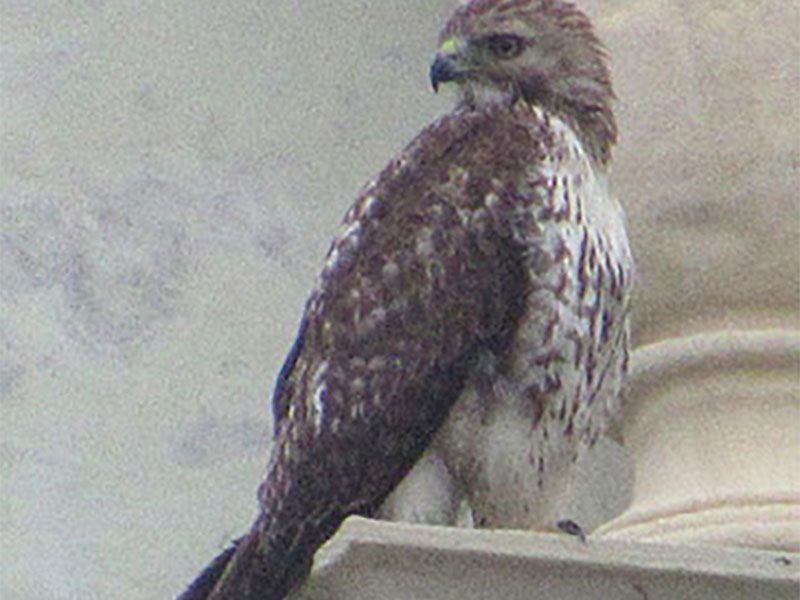
Red-tailed Hawk
The Red-tailed Hawk, colloquially known in the United States as a “chickenhawk”, has bulky and broad-wings.
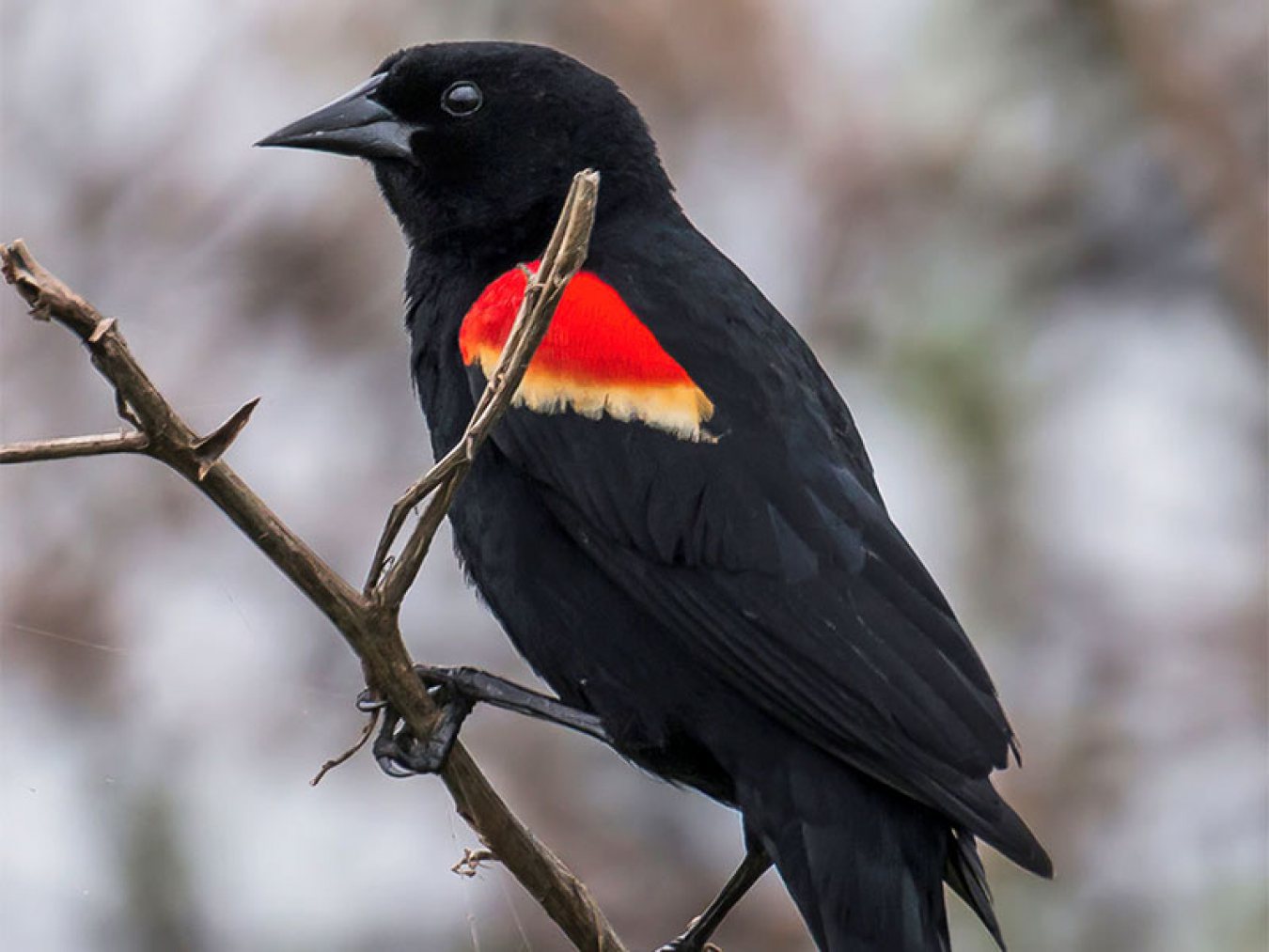
Red-winged Blackbird
A familiar bird on the island, the Red-winged Blackbird is commonly heard singing its nasal song in marshes, wet fields, and mudflats.
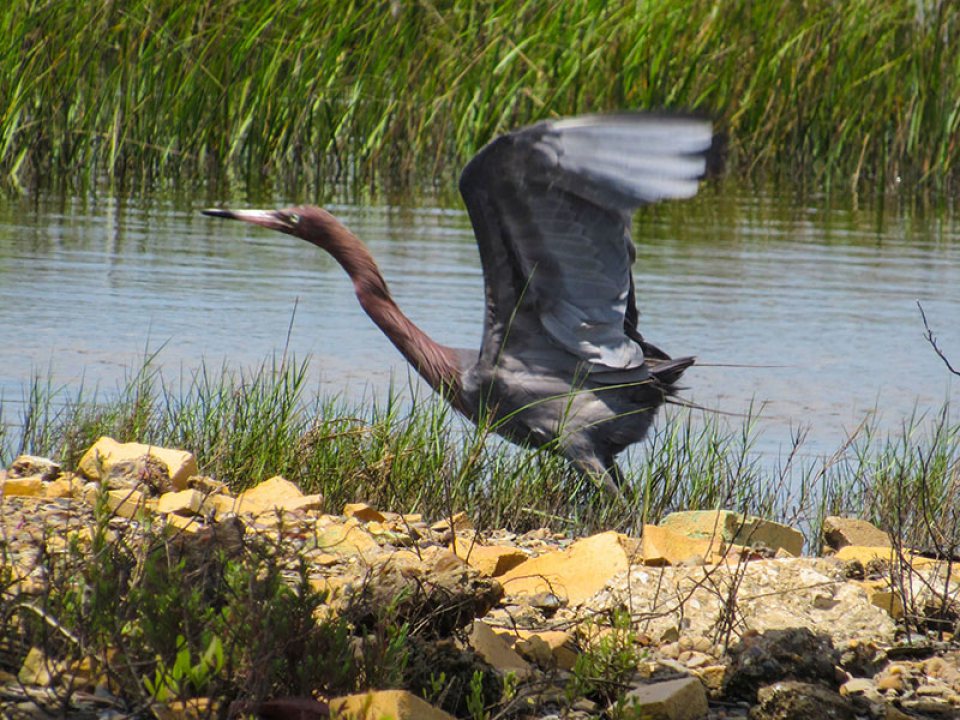
Reddish Egret
The official bird of Galveston, the Reddish Egret is a long-legged, long-necked wader. It’s considered one of the most active herons.
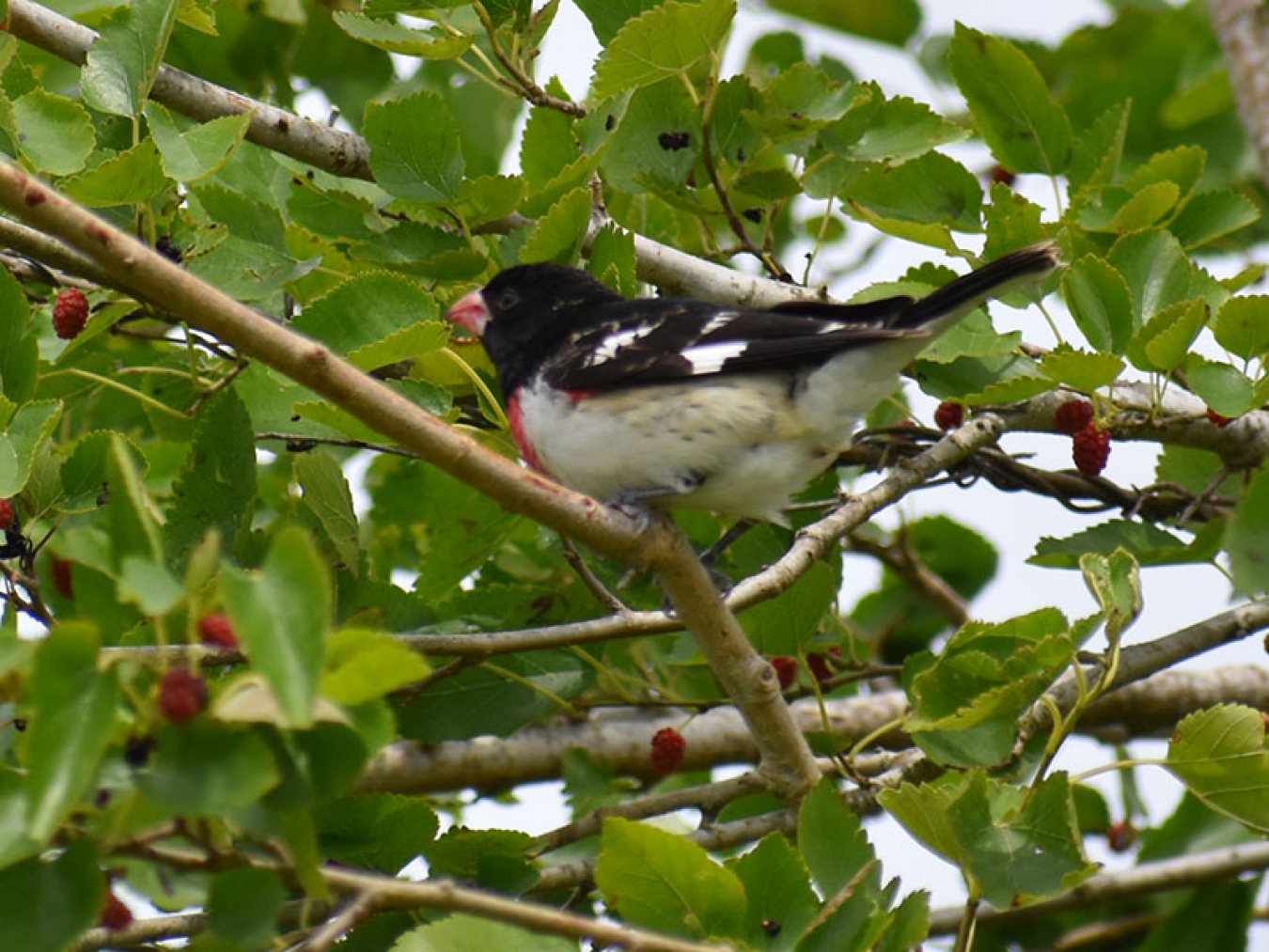
Rose-breasted Grosbeak
One of Galveston’s spring migrants, the male Rose-breasted Grosbeak is black and white with a bright red chevron on the breast.
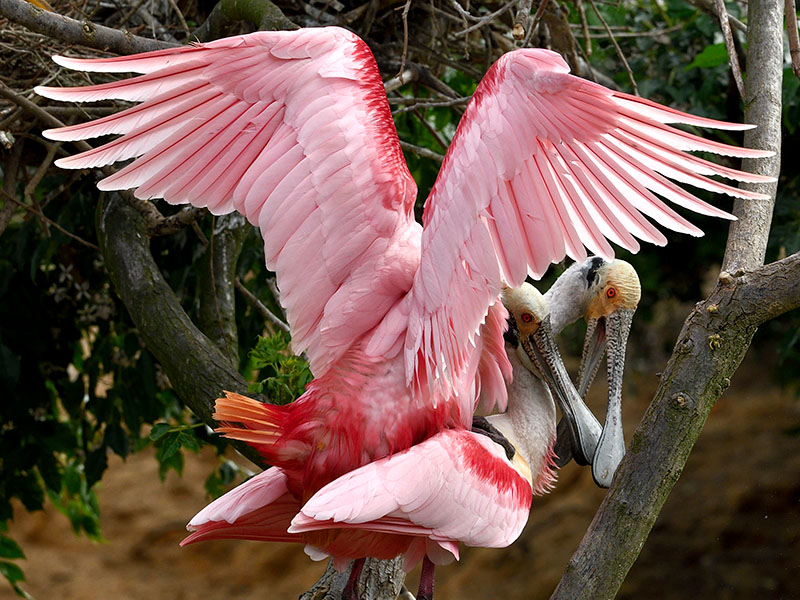
Roseate Spoonbill
Common on the island year-round, The Roseate Spoonbill is a gregarious wading bird that’s pink color is derived from its diet.
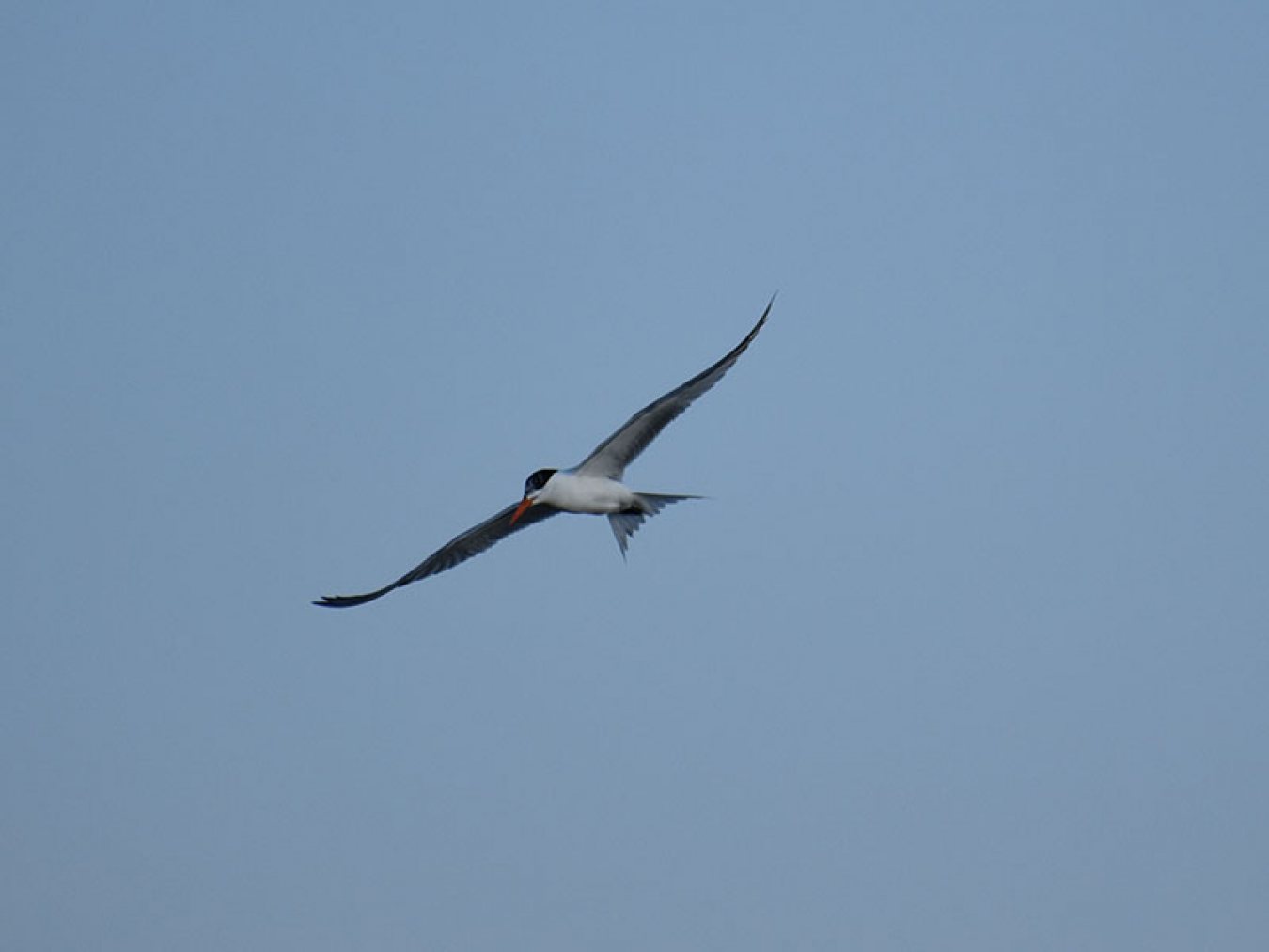
Royal Tern
A large tern with pointed wings, forked tail, black crown, and orange bill, the Royal Tern can be seen along Galveston’s beaches.
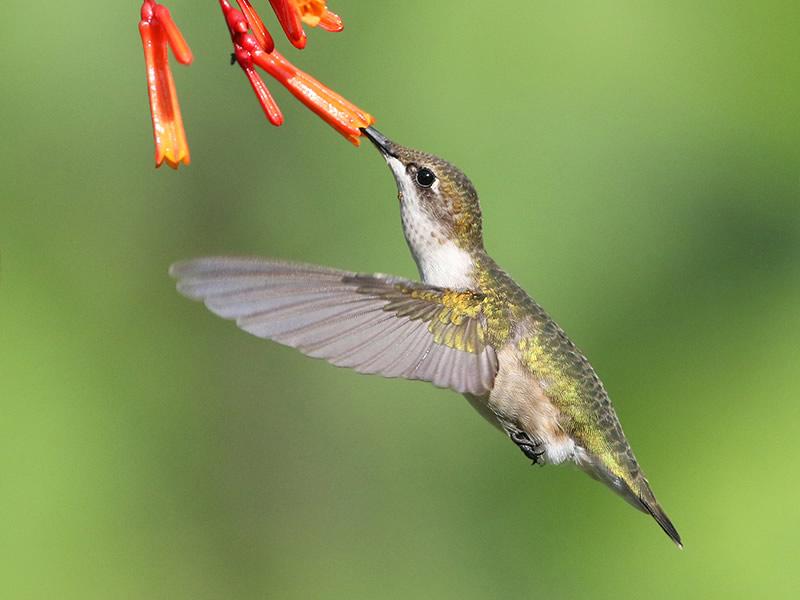
Ruby-throated Hummingbird
A small hummingbird with a slender, slightly down-curved bill, the Ruby-throated Hummingbird is bright emerald green on the back and crown.
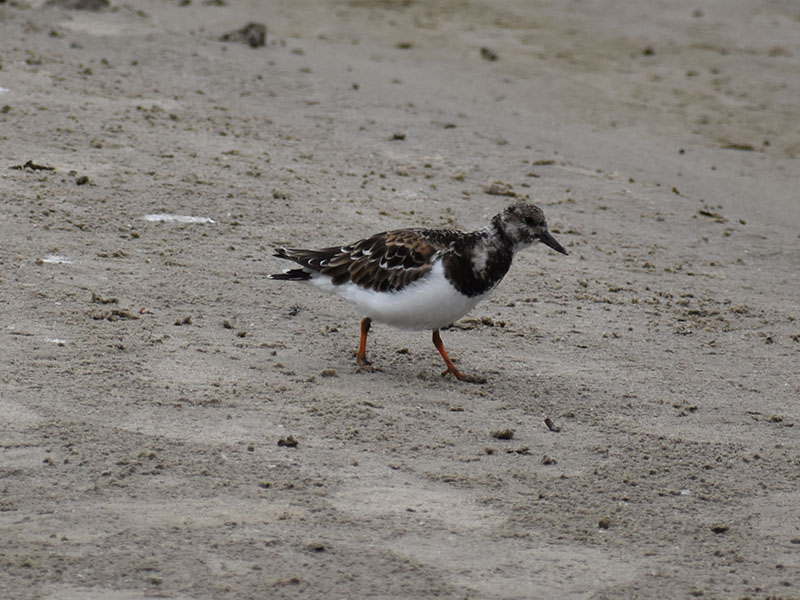
Ruddy Turnstone
The Ruddy Turnstone is a short chunky sandpiper that nests on arctic tundra and winters on Galveston Island.
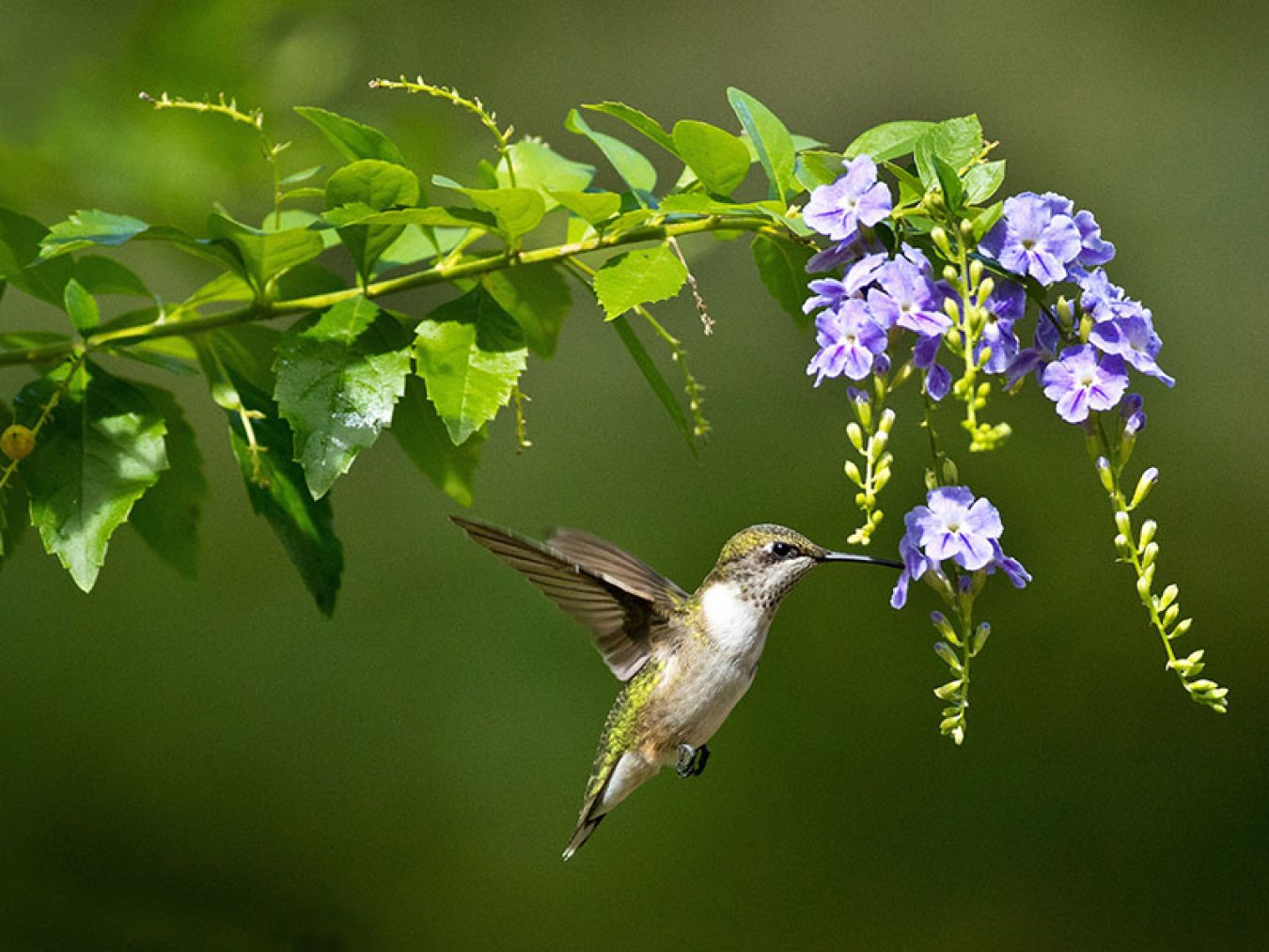
Rufous Hummingbird
For being one of the smaller hummingbirds, the Rufous Hummingbird is rather feisty and will take on larger hummingbirds.
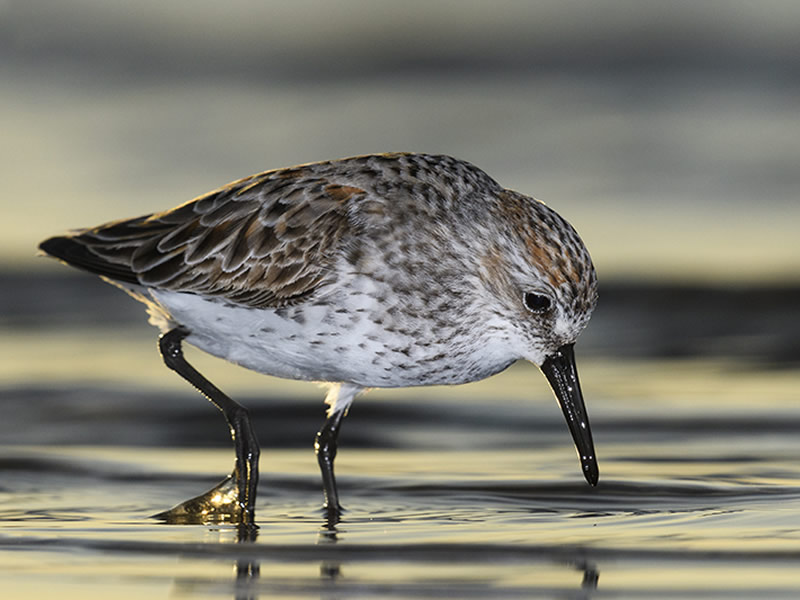
Sanderling
A small plump sandpiper with a stout black bill, the Sanderling runs up and down the beach, as each wave washes in and out.
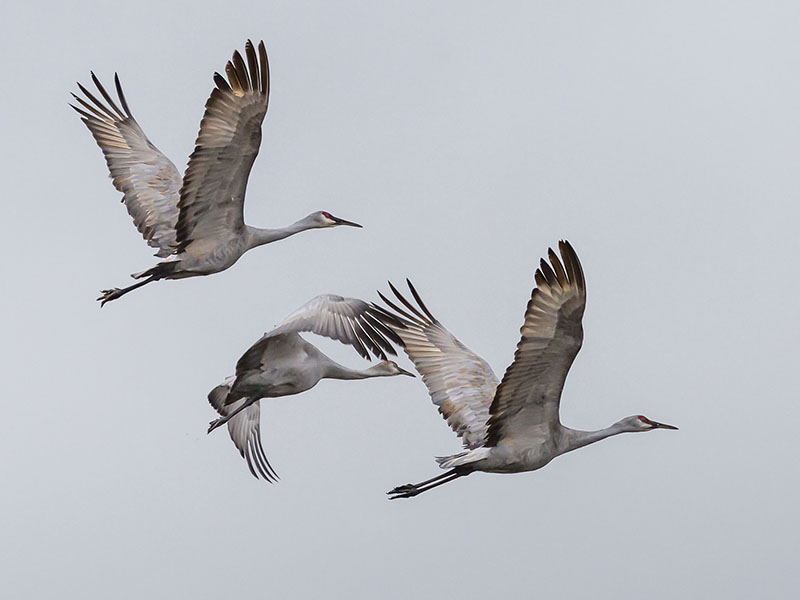
Sandhill Crane
Galveston celebrates the return of the very large gray Sandhill Cranes each fall with events like Holiday With The Cranes.
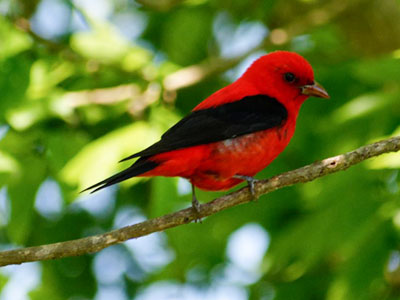
Scarlet Tanager
The males of this species are stunning in bright sunlight, with bright red and black plumage, and can often be seen perching in the open.
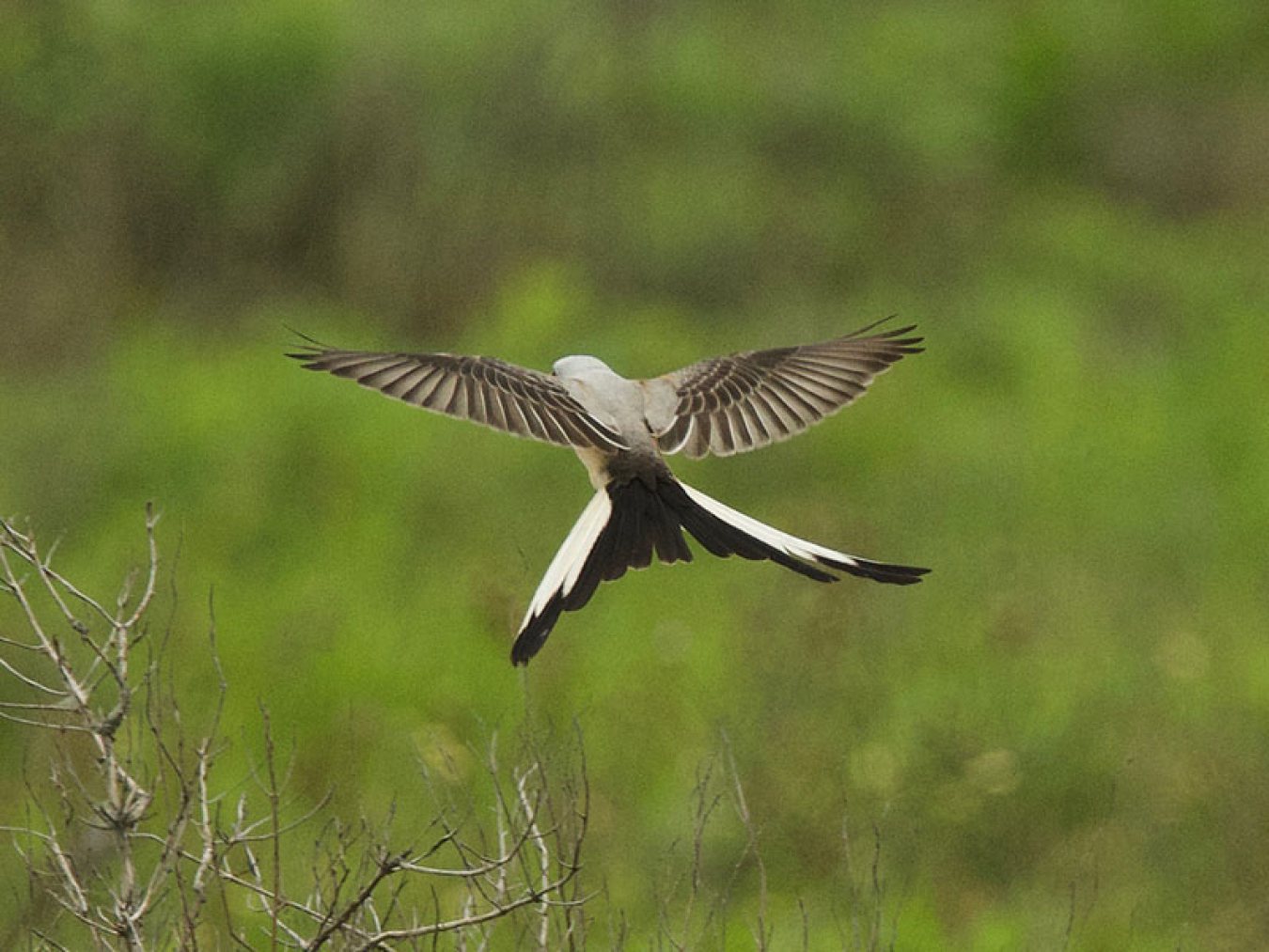
Scissor-tailed Flycatcher
The Scissor-tailed Flycatcher has a very long, deeply forked black and white tail.
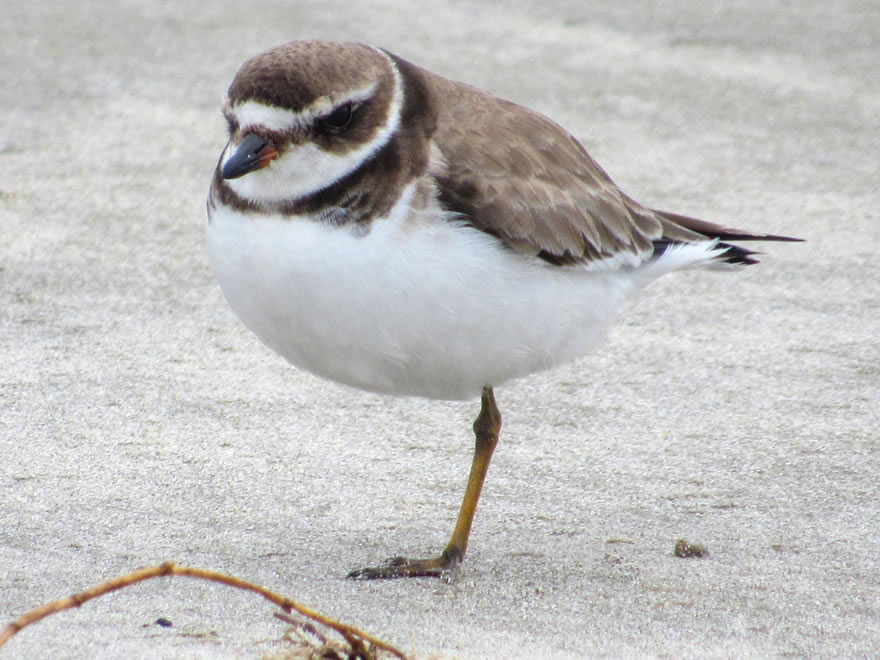
Semipalmated Plover
After nesting in Canada and Alaska, the Semipalmated Plover arrives on Galveston Island in late summer.
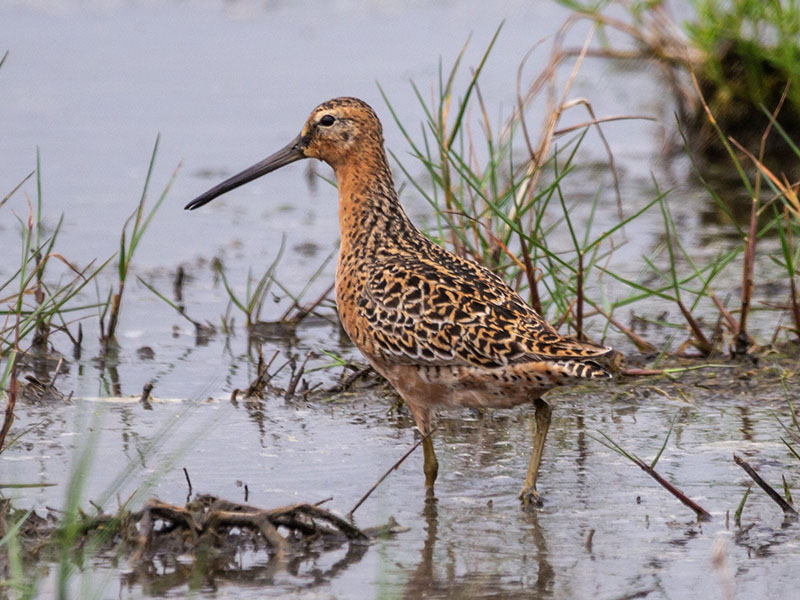
Short-billed Dowitcher
A medium-sized, stocky, long-billed shorebird, the Short-billed Dowitcher’s habitat includes tidal marshes and mudflats.
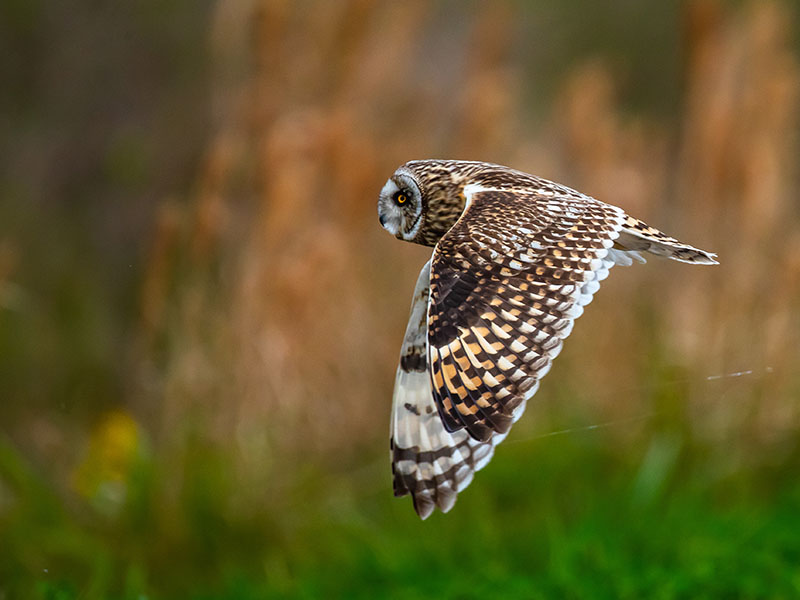
Short-eared Owl
One of the Short-eared Owls, they have tufts of feathers resembling mammalian ears, with large eyes, a big head, a short neck, and broad wings.
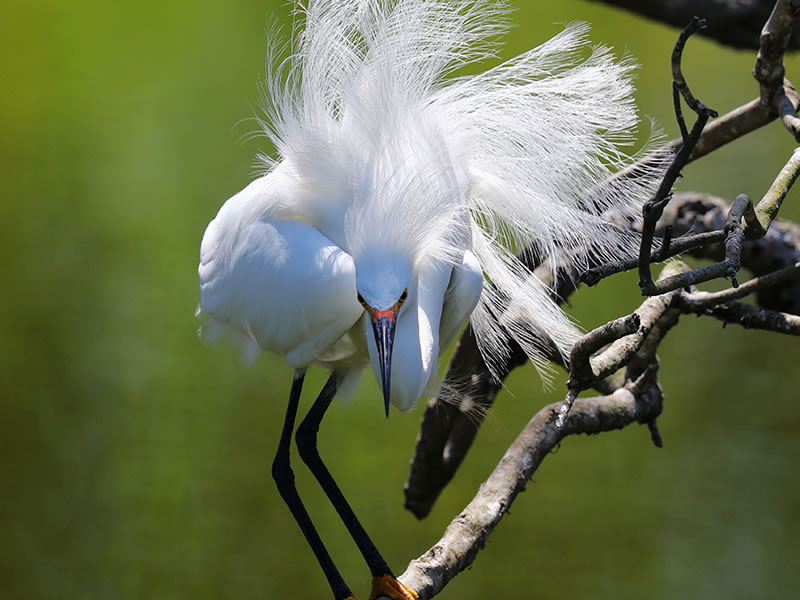
Snowy Egret
A beautiful small heron, the Snowy Egret has long thin black legs, yellow feet, and a black bill with a yellow patch at the base.
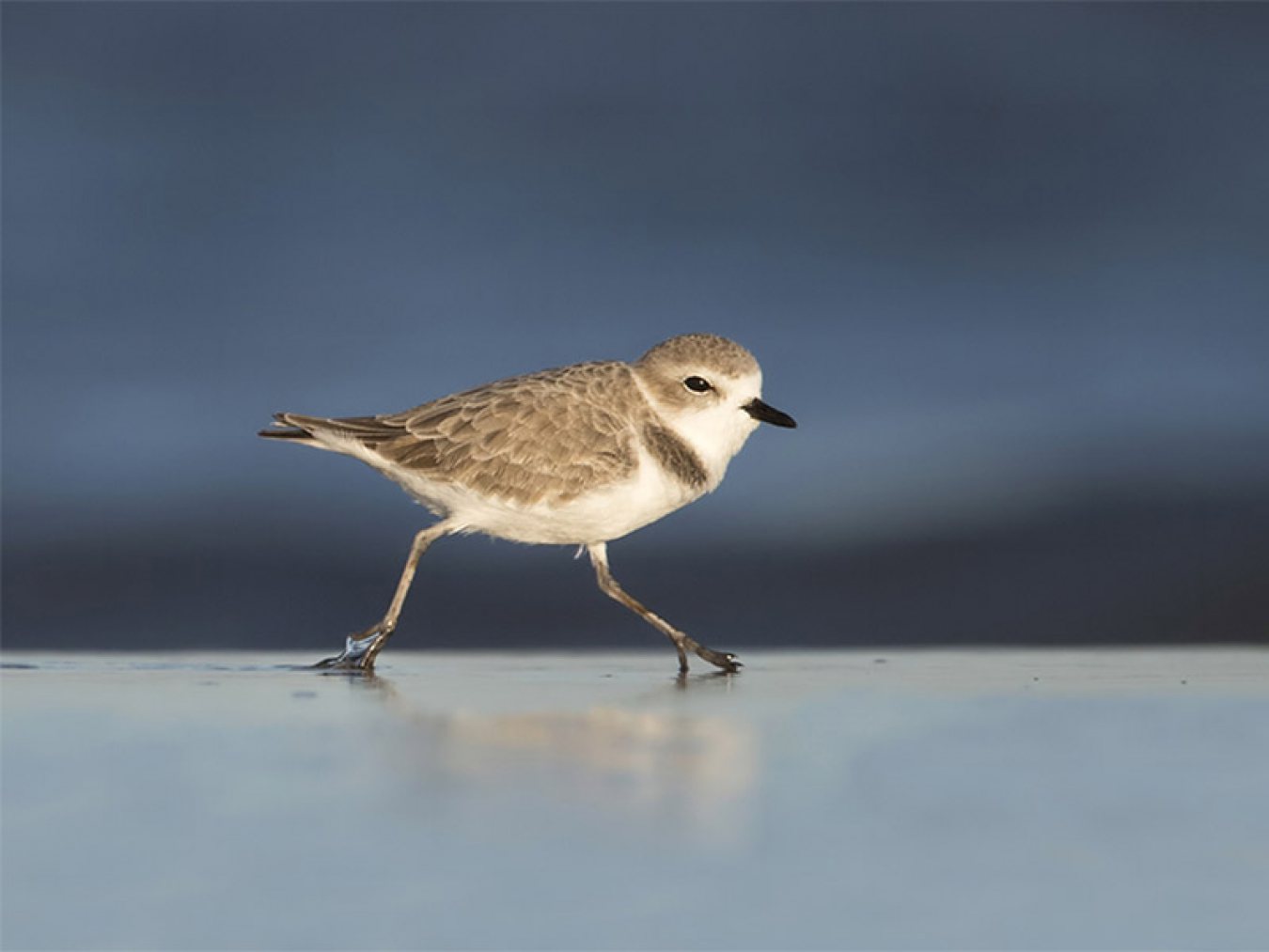
Snowy Plover
This small plover can be found on Galveston beaches. It has a horizontal posture and a short neck.
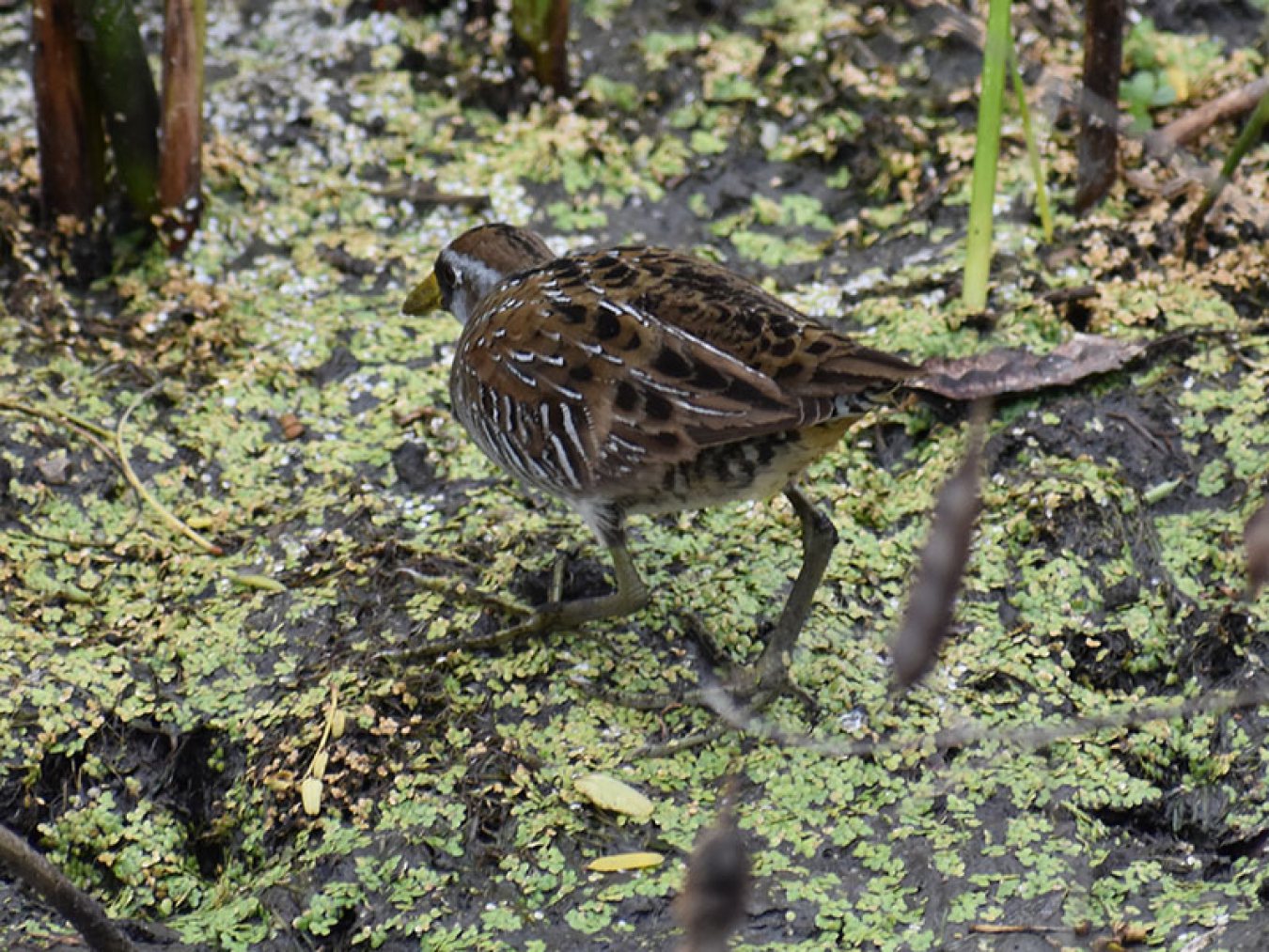
Sora
A small secretive rail, the Sora is mottled gray and brown with a gray face and black mask, short tail, and stubby yellow bill.
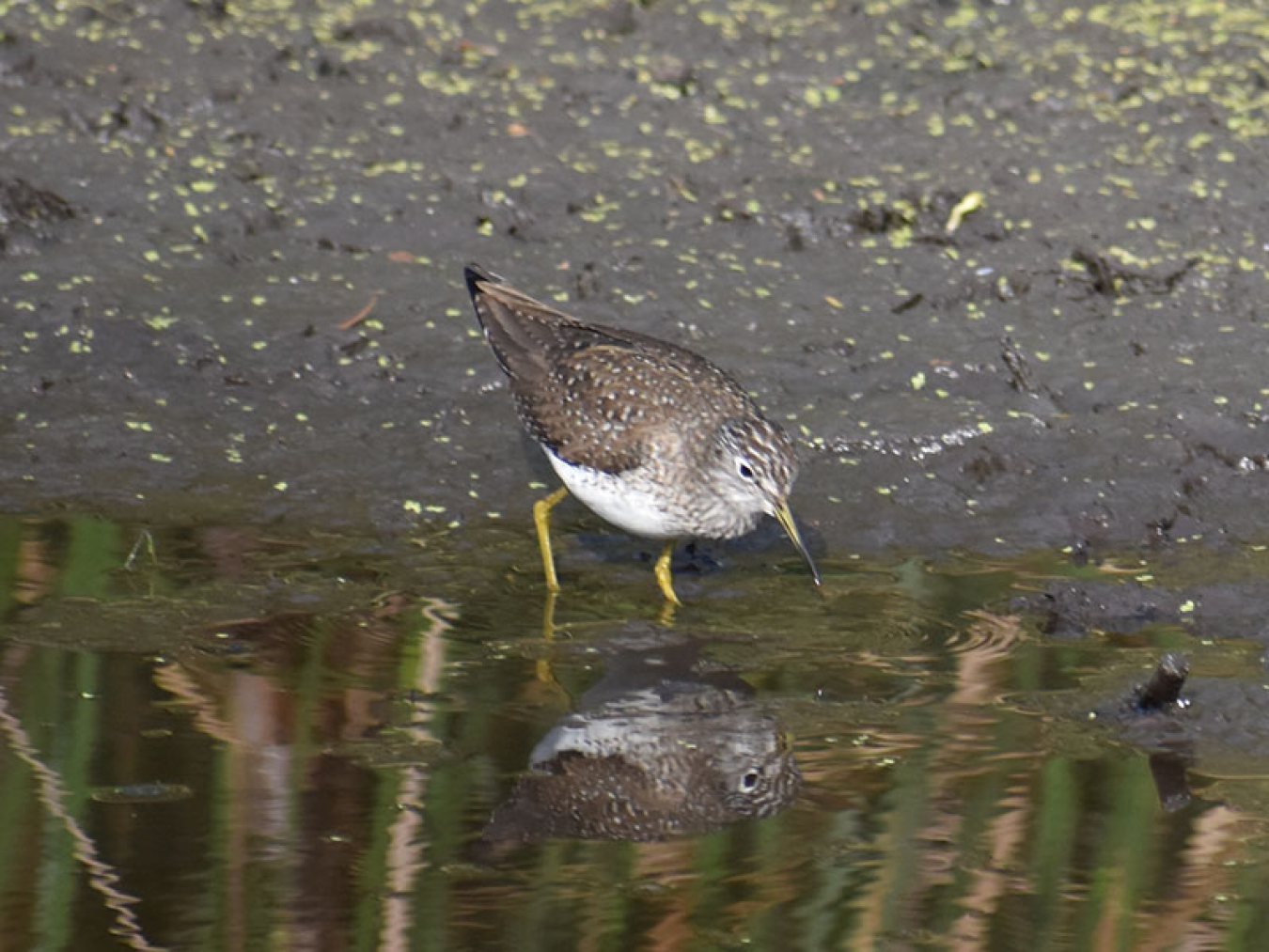
Spotted Sandpiper
A medium-sized shorebird, the Spotted Sandpiper bobs its tail when walking, often in a crouched position.
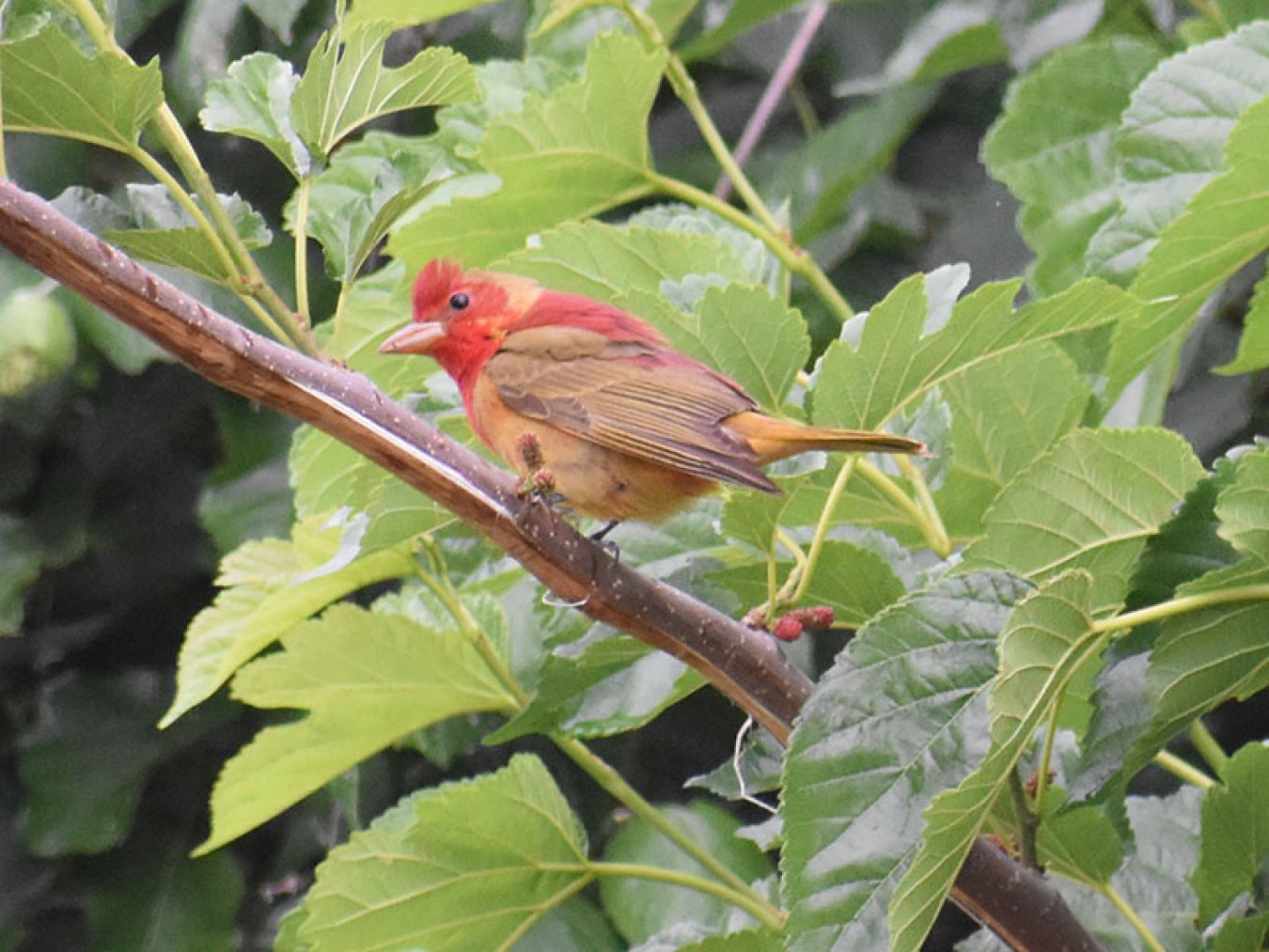
Summer Tanager
A medium-sized songbird, the Summer Tanager has a big head and thick bill. Adult males are red. Females and juvenile males are yellow-green.
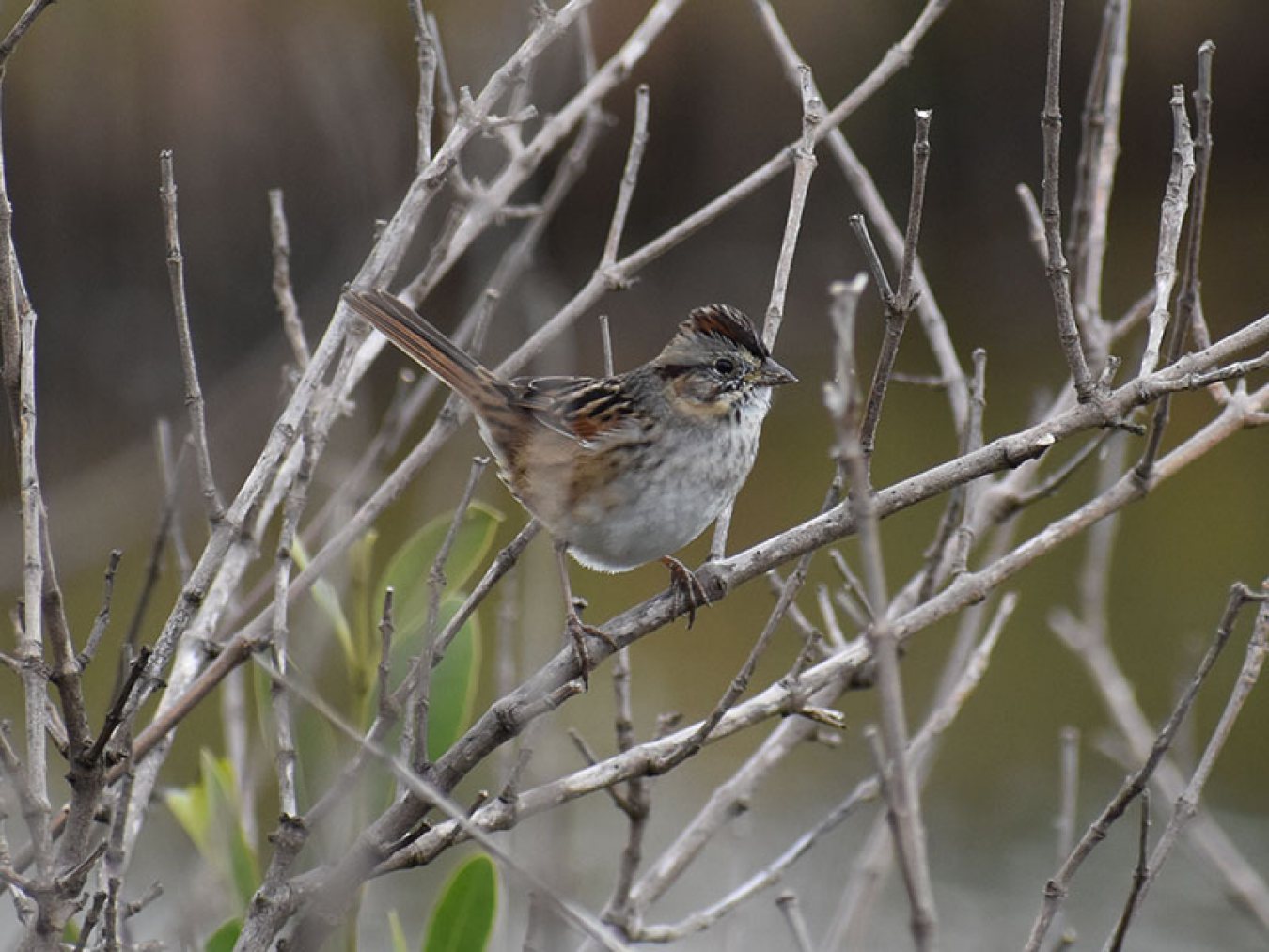
Swamp Sparrow
A medium-sized sparrow with a rounded tail, the Swamp Sparrow has longer legs than the Lincoln’s Sparrow.
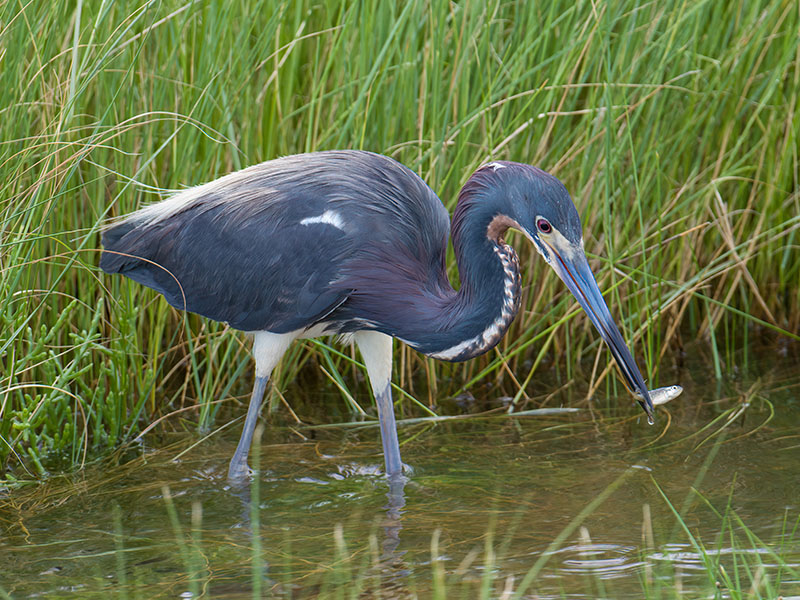
Tricolored Heron
A small slender heron, the Tricolored Heron has a long bill and neck with long blue plumes on the head and neck .
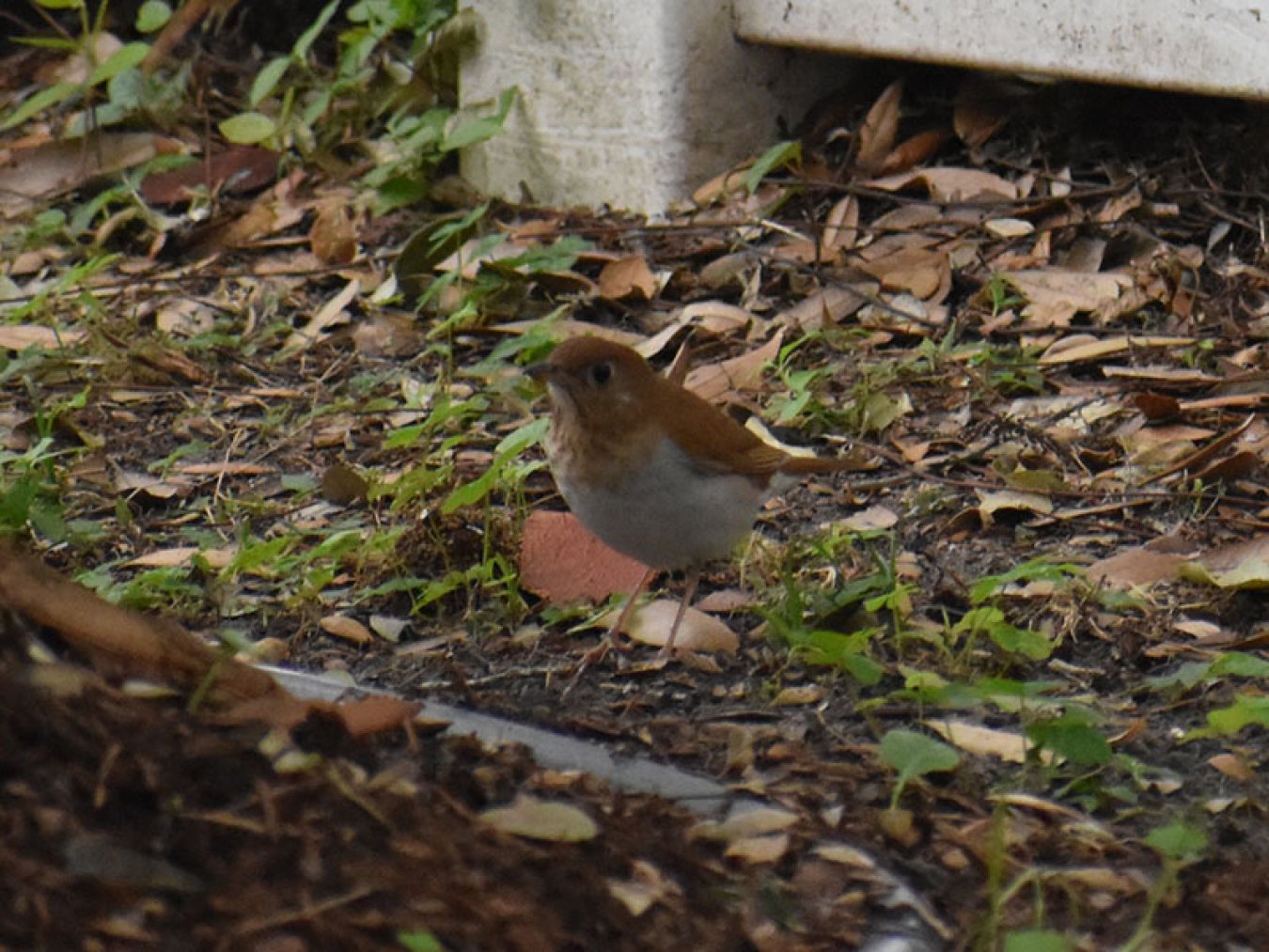
Veery
A spring migrant from tropical rainforests, the Veery is a medium-sized thrush with cinnamon-brown above and pale under with spotting on the chest.
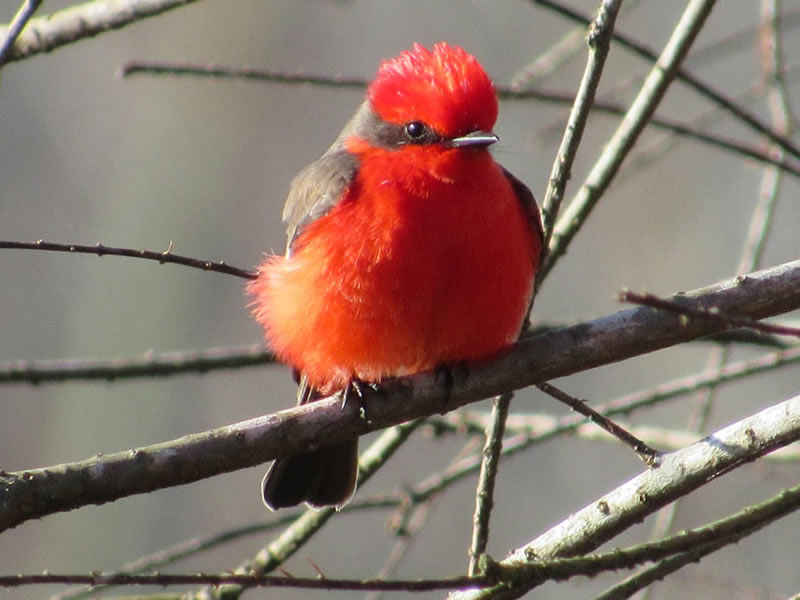
Vermilion Flycatcher
While most flycatchers are rather drab, the Vermilion Flycatcher is striking. Look for them on Galveston Island in the winter months.
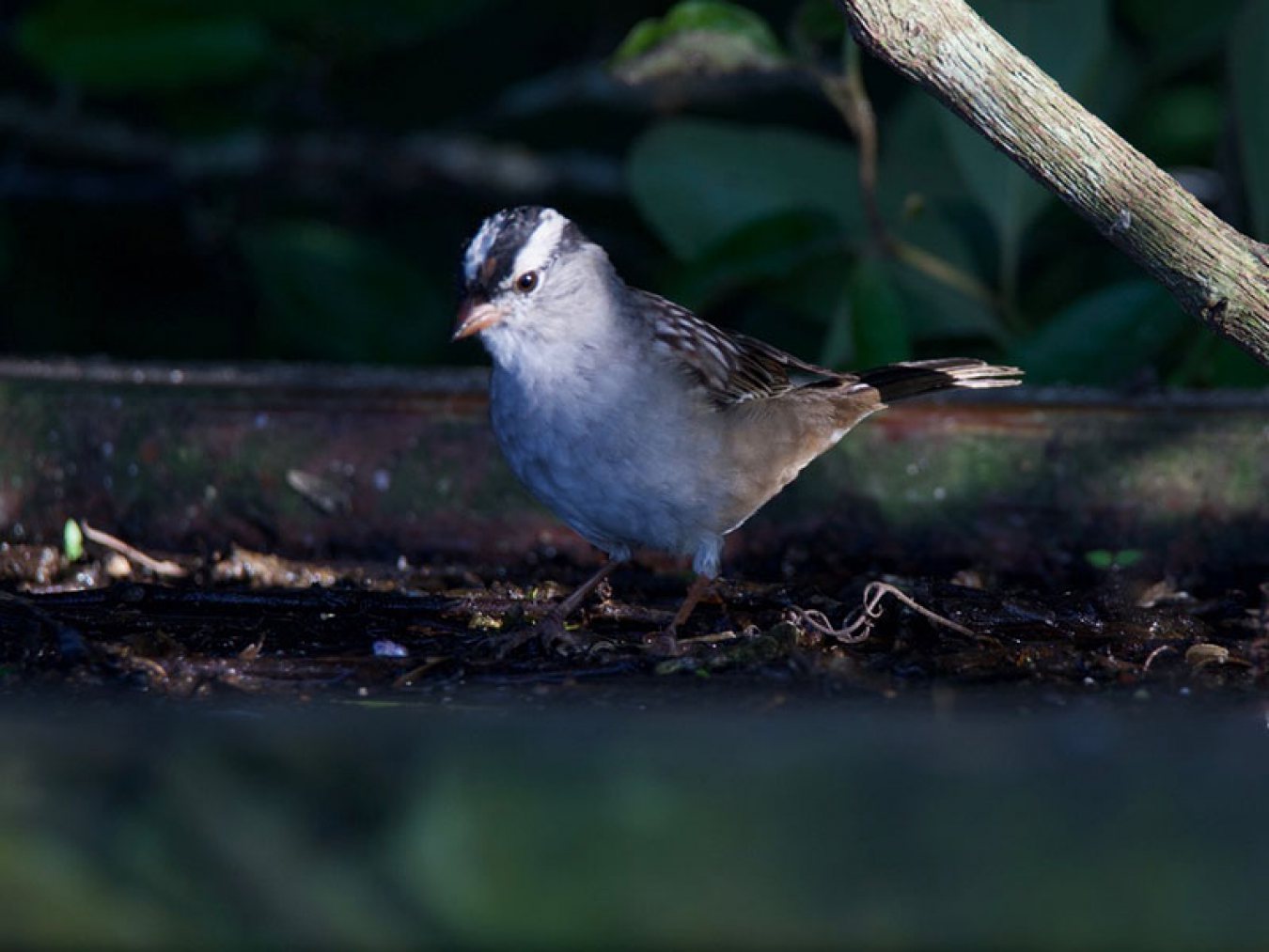
White-crowned Sparrow
A large grayish sparrow, the White-crowned Sparrow has a peaked head with black and white stripes, a long tail, and orange, yellow or pinkish bill.
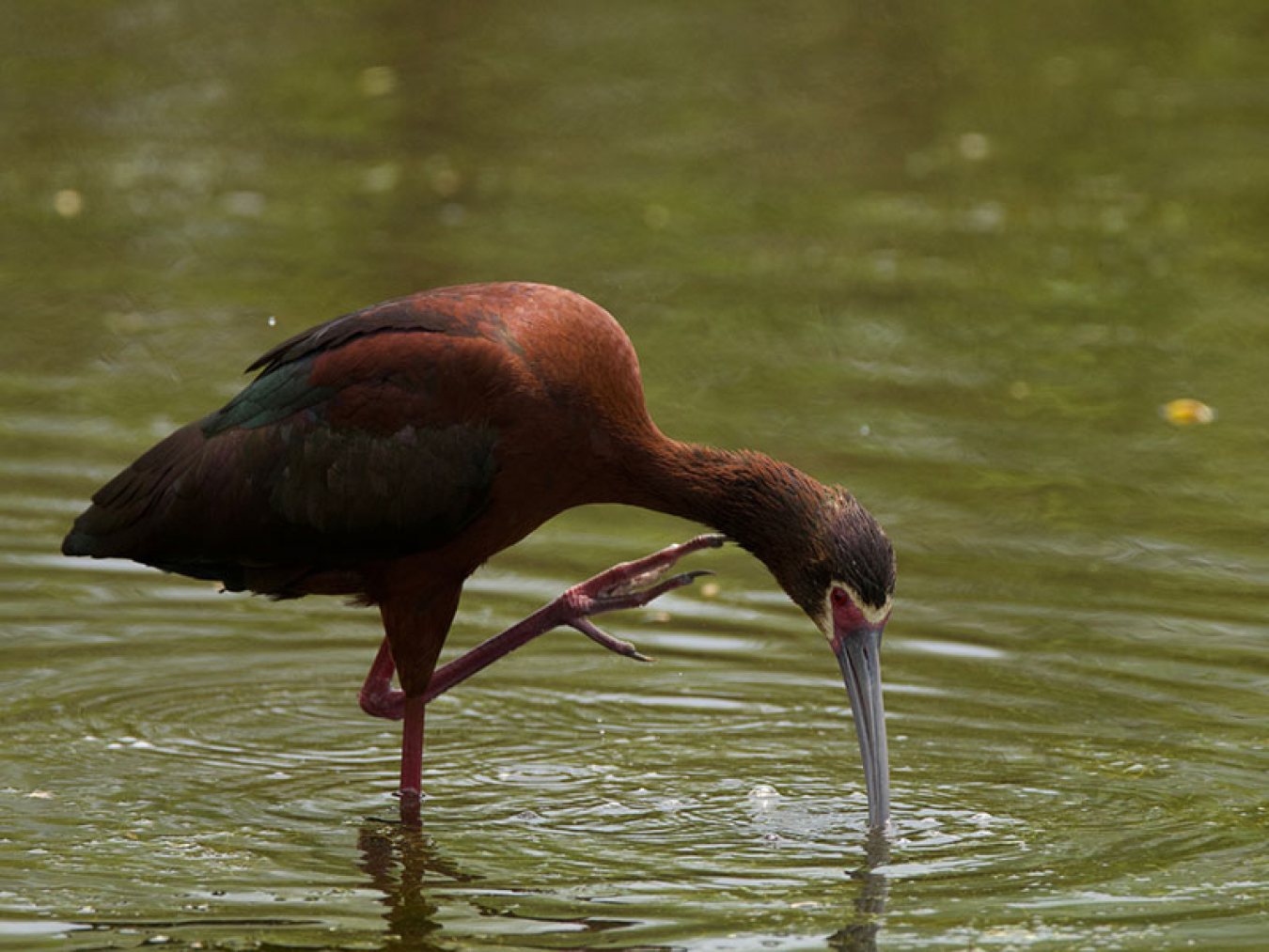
White-faced Ibis
A large maroon wading bird, White-faced Ibis have a white border around the eye with a bare patch of skin in front.
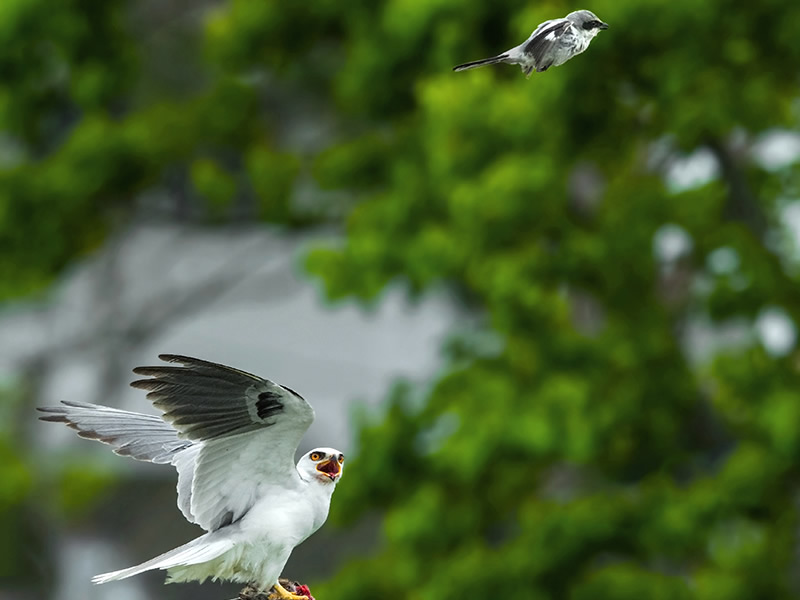
White-tailed Kite
The White-tailed Kite is a sleek-looking raptor that can often be seen on the West End, especially during breeding season.
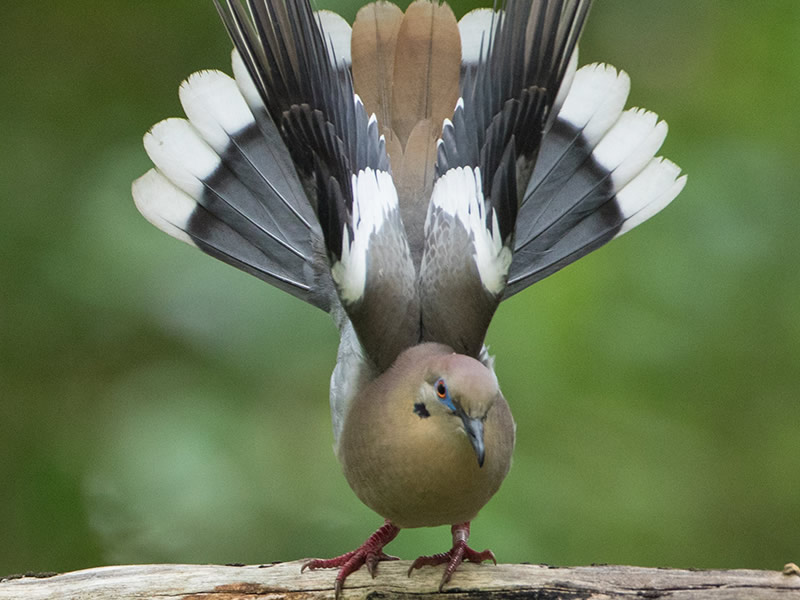
White-winged Dove
The White-winged Dove is mostly brown with a small head, dark line on the cheek, and blue eye rings.
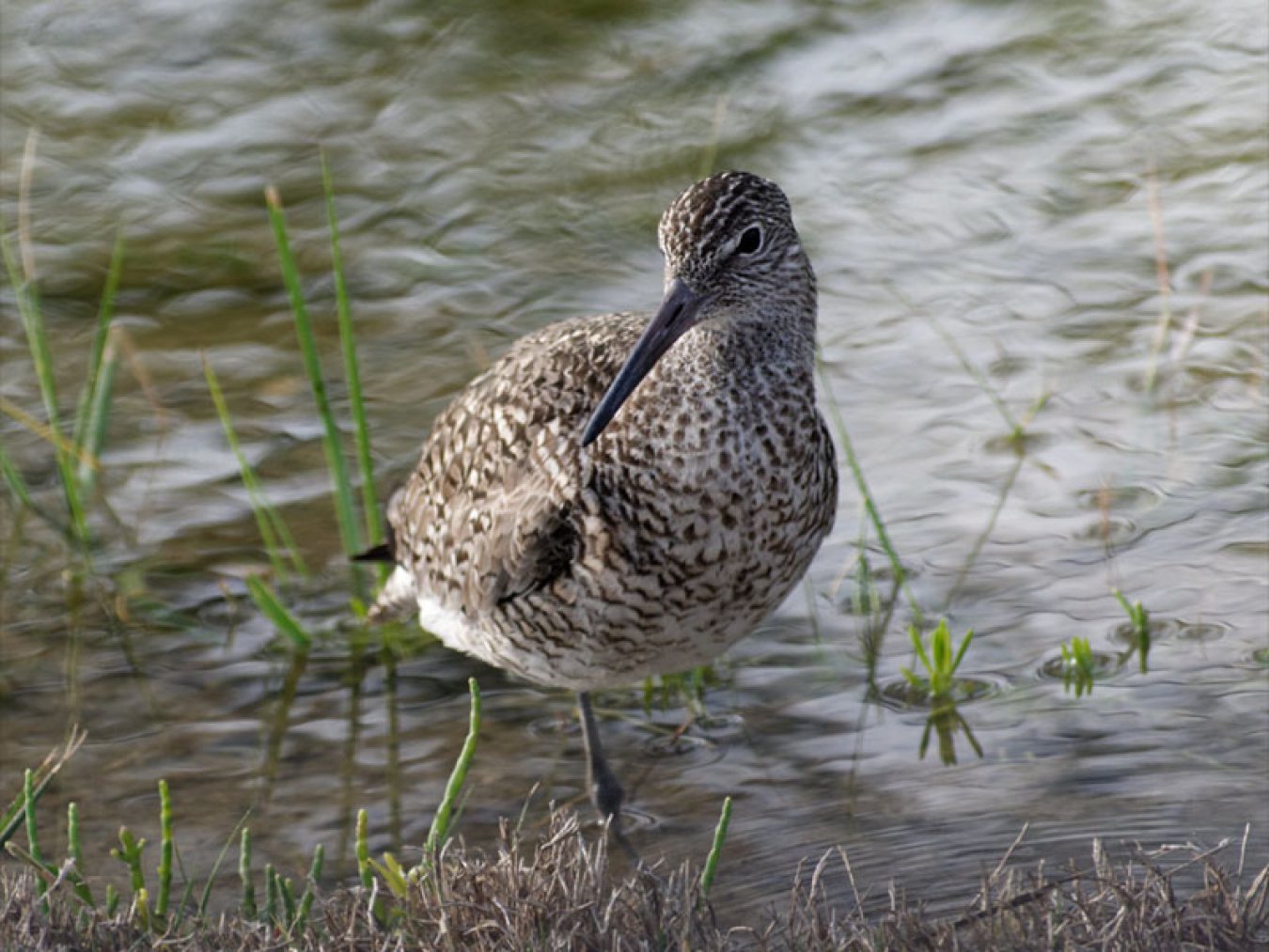
Willet
The Willet is a plain gray or brown shorebird. When flying, it reveals a white and black stripe along each wing.
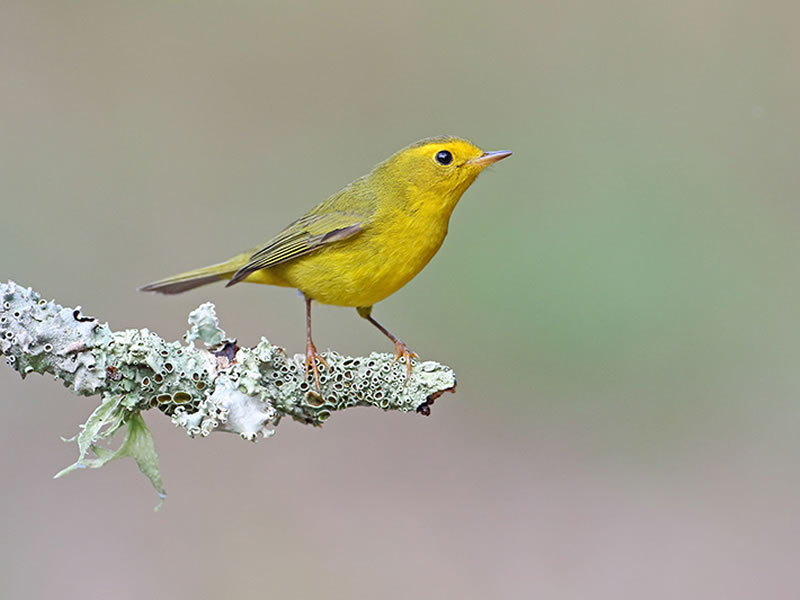
Wilson’s Warbler
One of the smallest warblers, the Wilson’s Warbler is bright yellow below and yellowish olive above with black eyes that are a stark contrast to its yellow cheeks.
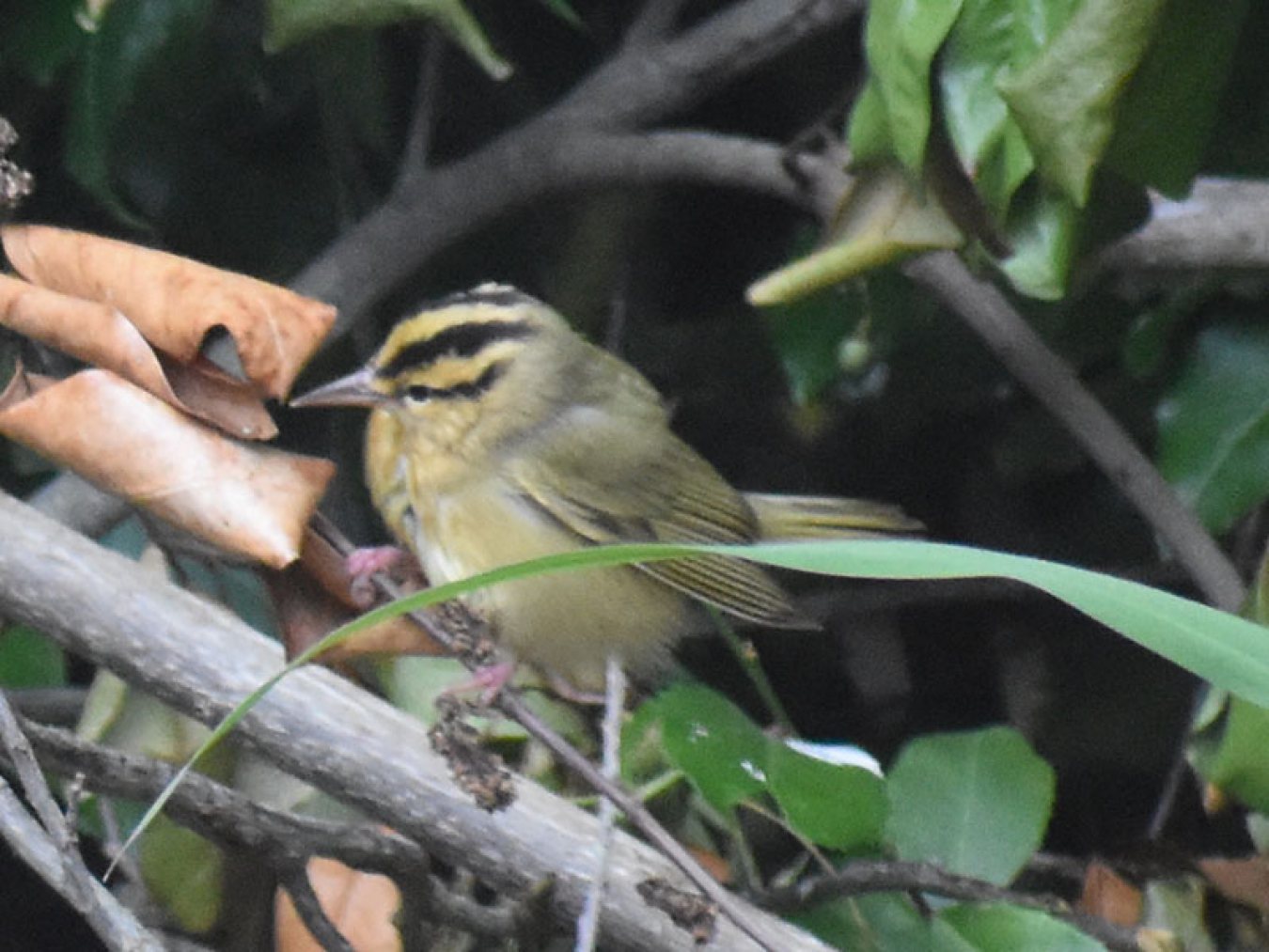
Worm-eating Warbler
A spring migrant from the tropics, the Worm-eating Warbler is a small warbler with black stripes through its buffy head.
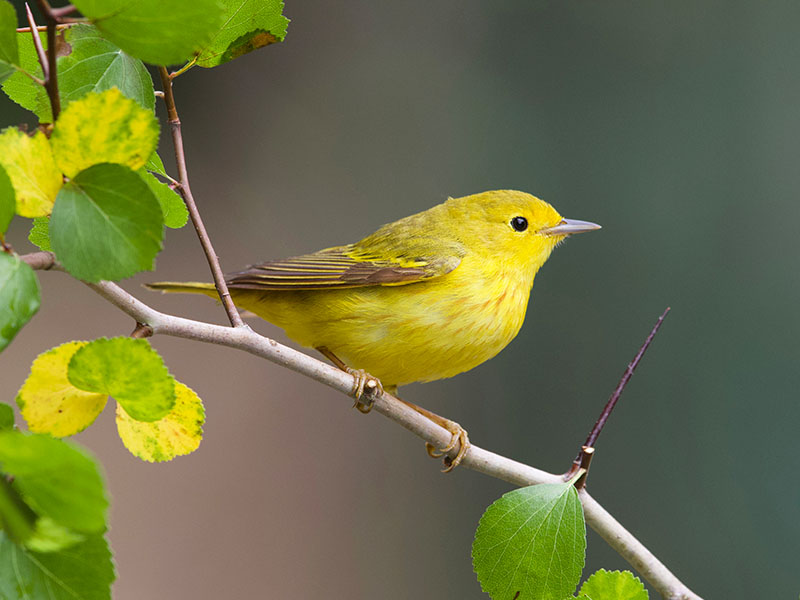
Yellow Warbler
You may be able to hear the sweet sound of the Yellow Warbler during spring migration.
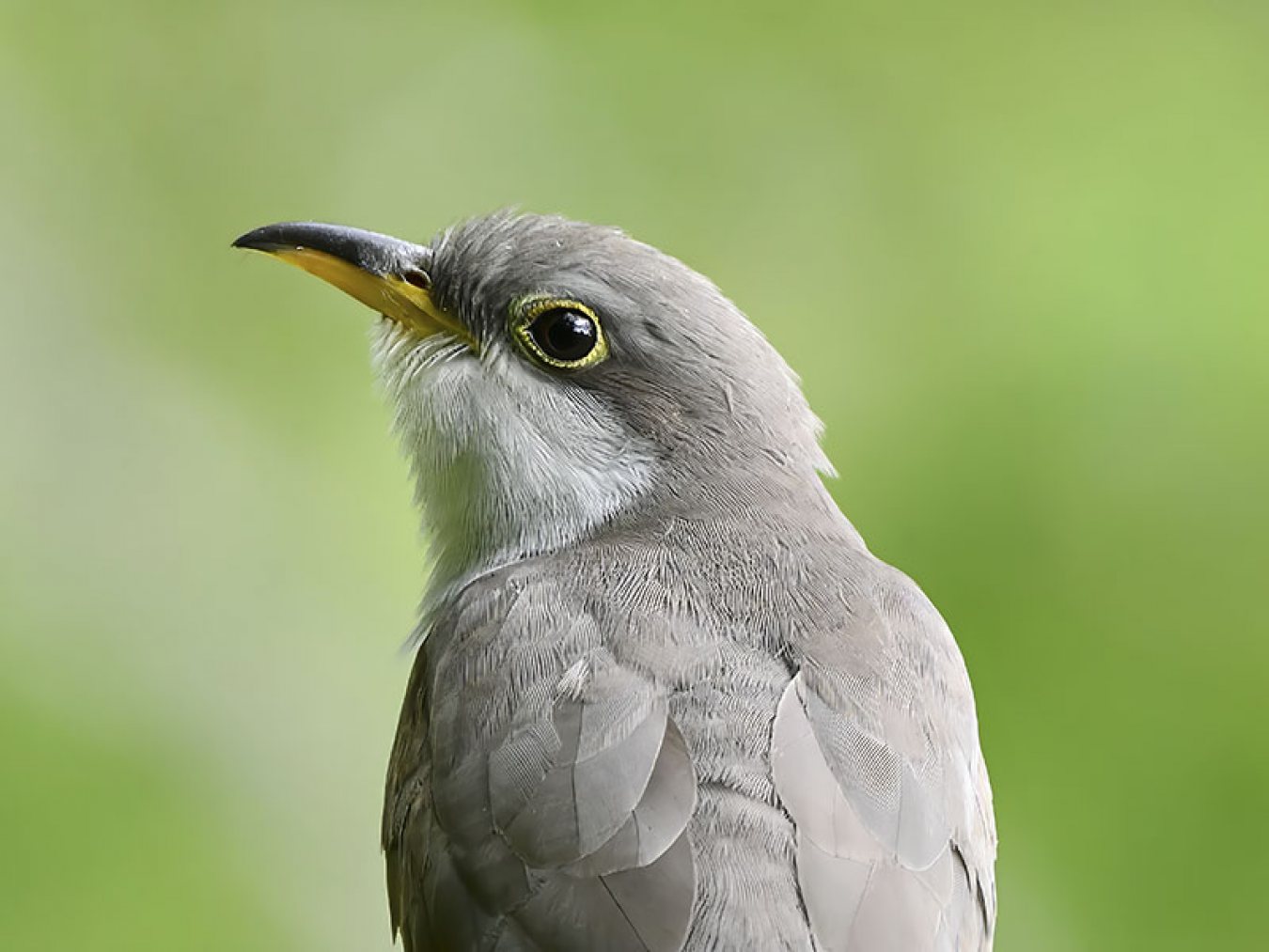
Yellow-billed Cuckoo
The Yellow-billed Cuckoo is a slender, long-tailed bird that lives in tree canopies.
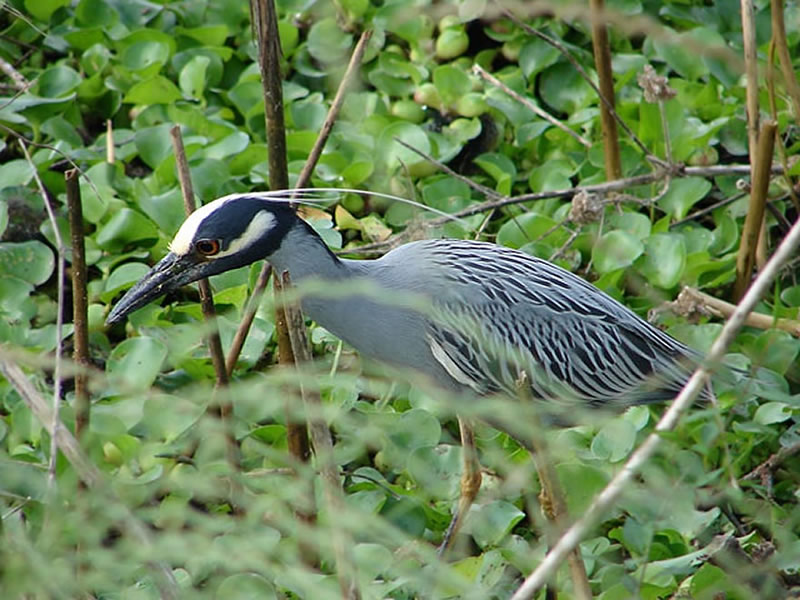
Yellow-crowned Night-Heron
A rather stocky wading bird, the Yellow-crowned Night-Heron can be seen gliding over water and forage by walking slowly on land or in shallow water.
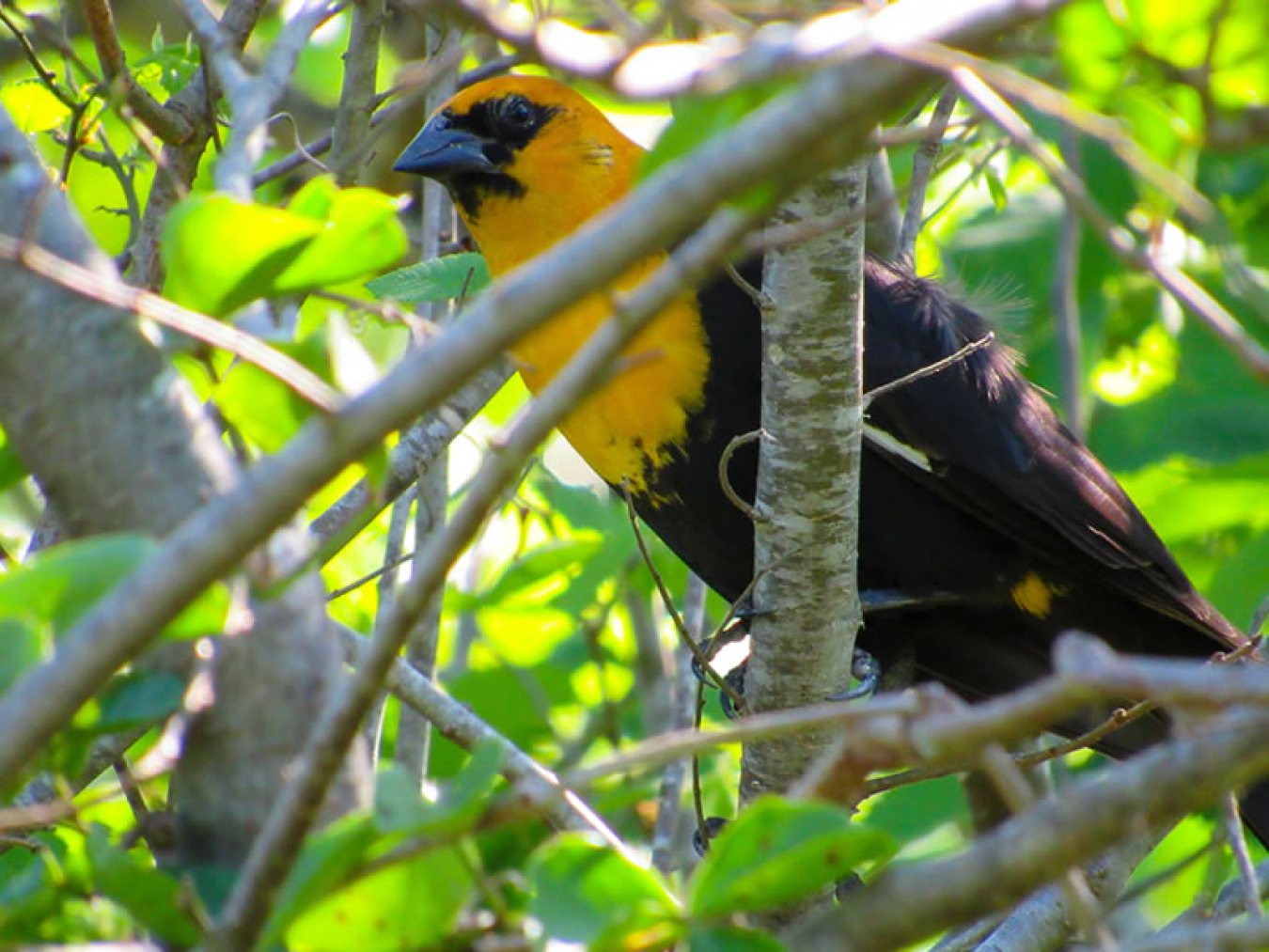
Yellow-headed Blackbird
The male Yellow-headed Blackbird has a striking golden head and a white patch on black wings.

Yellow-rumped Warbler
Look for the Yellow-rumped Warbler’s rump patch as it flies away. It often flutters from its perch in short loops to catch flying insects.
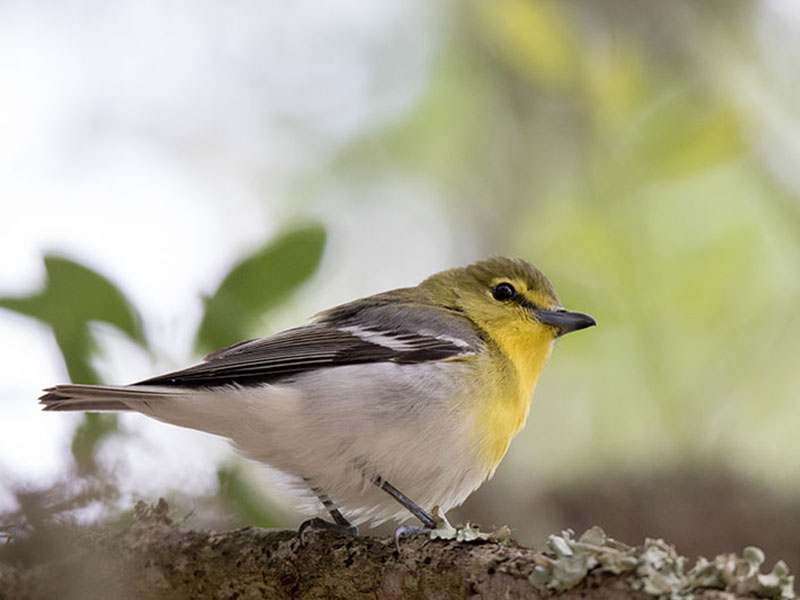
Yellow-throated Vireo
The Yellow-throated Vireo is more colorful than other vireos but that doesn’t necessarily make it any easier to spot.
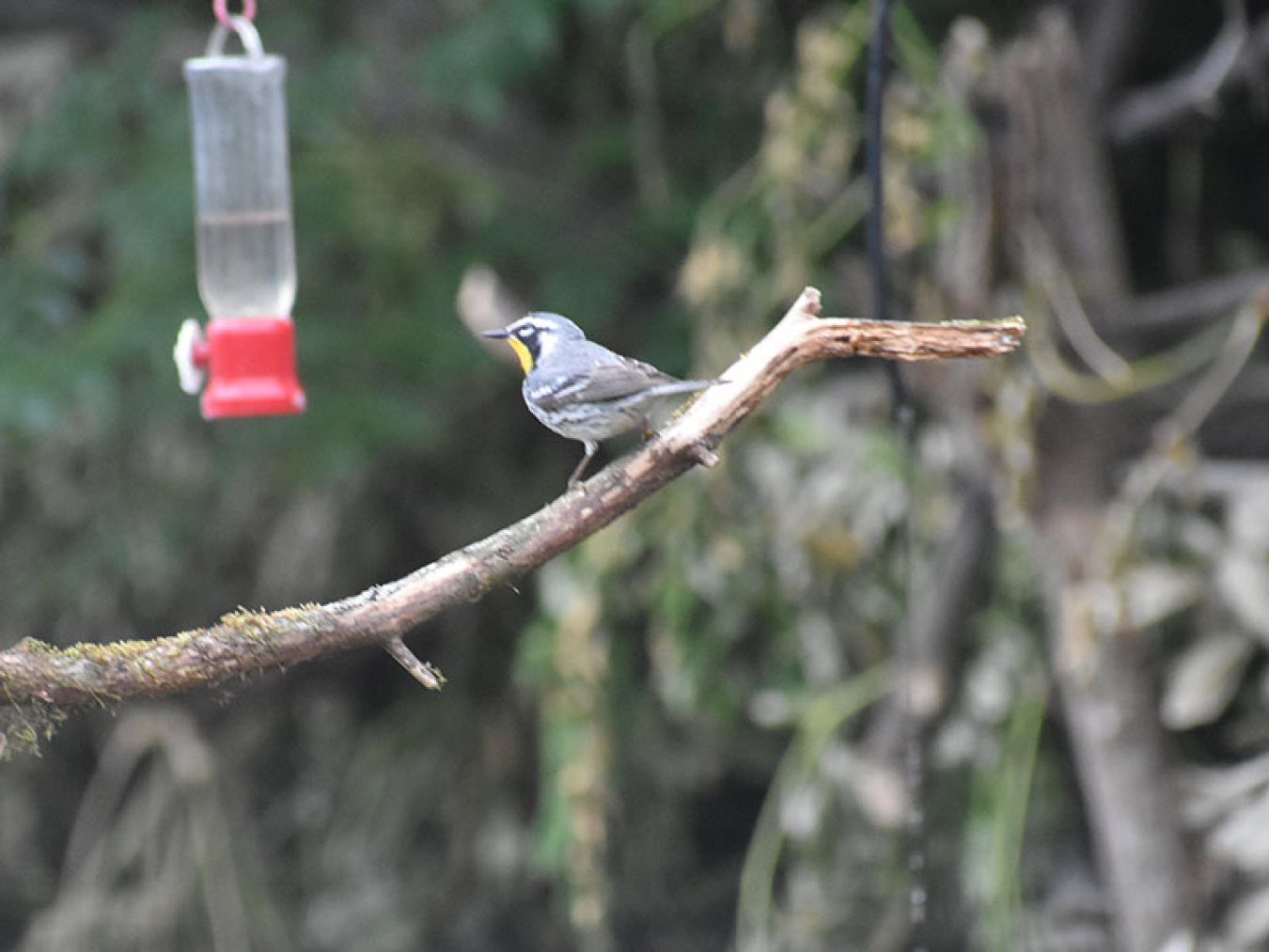
Yellow-throated Warbler
An early spring migrant, the Yellow-throated Warbler has a long body and bill. It is gray and white with yellow on the throat and black streaks on the sides.

